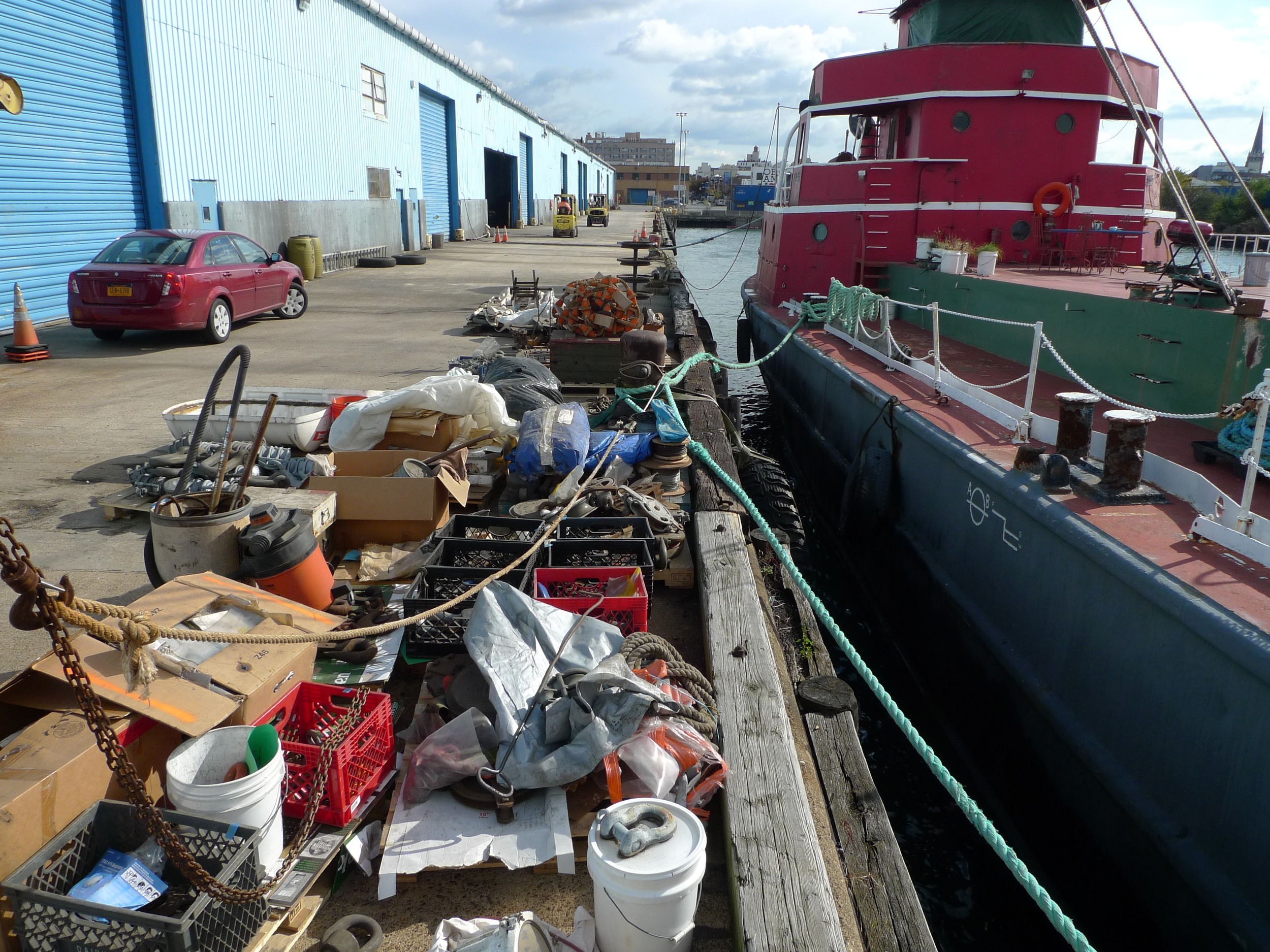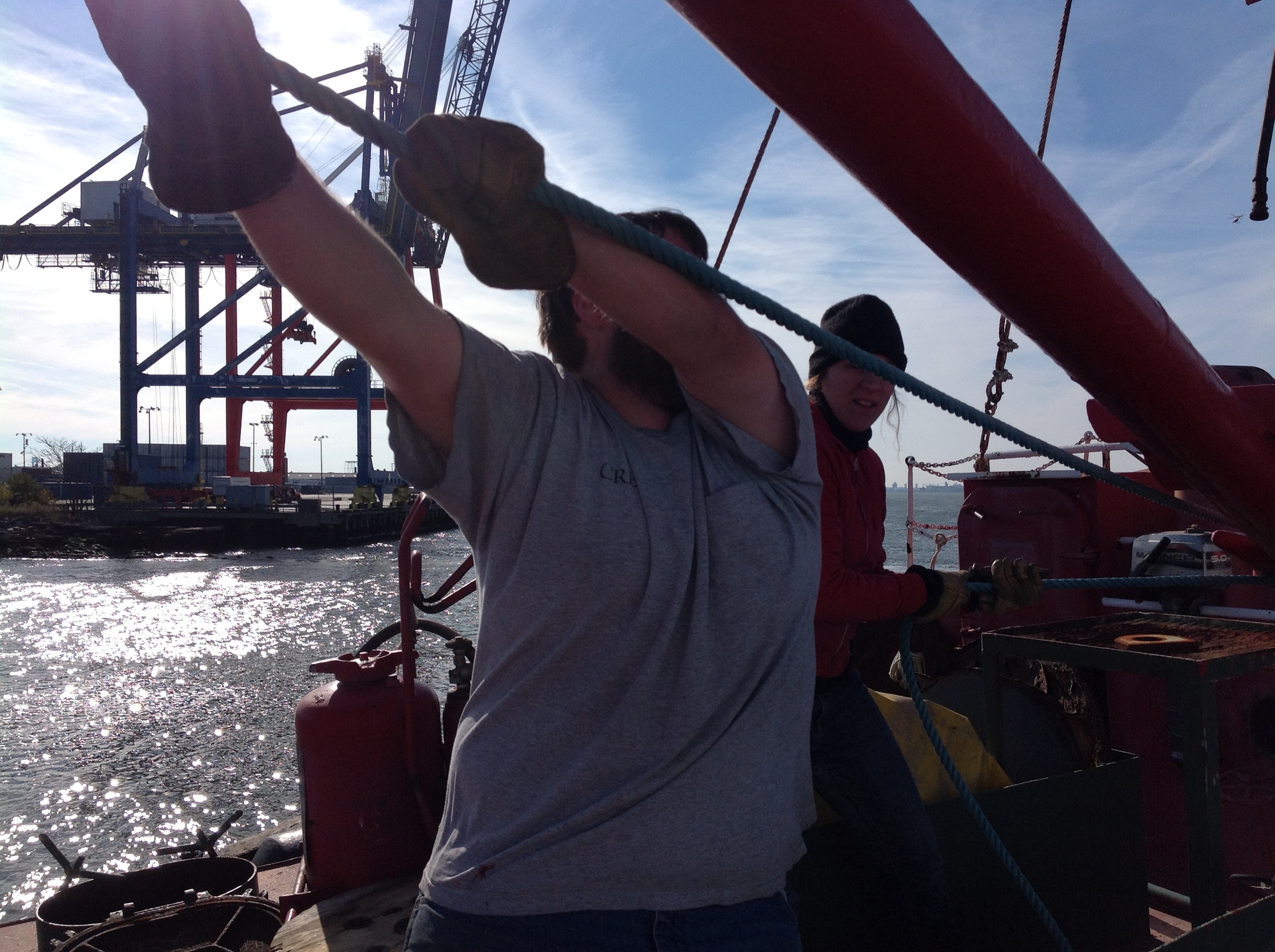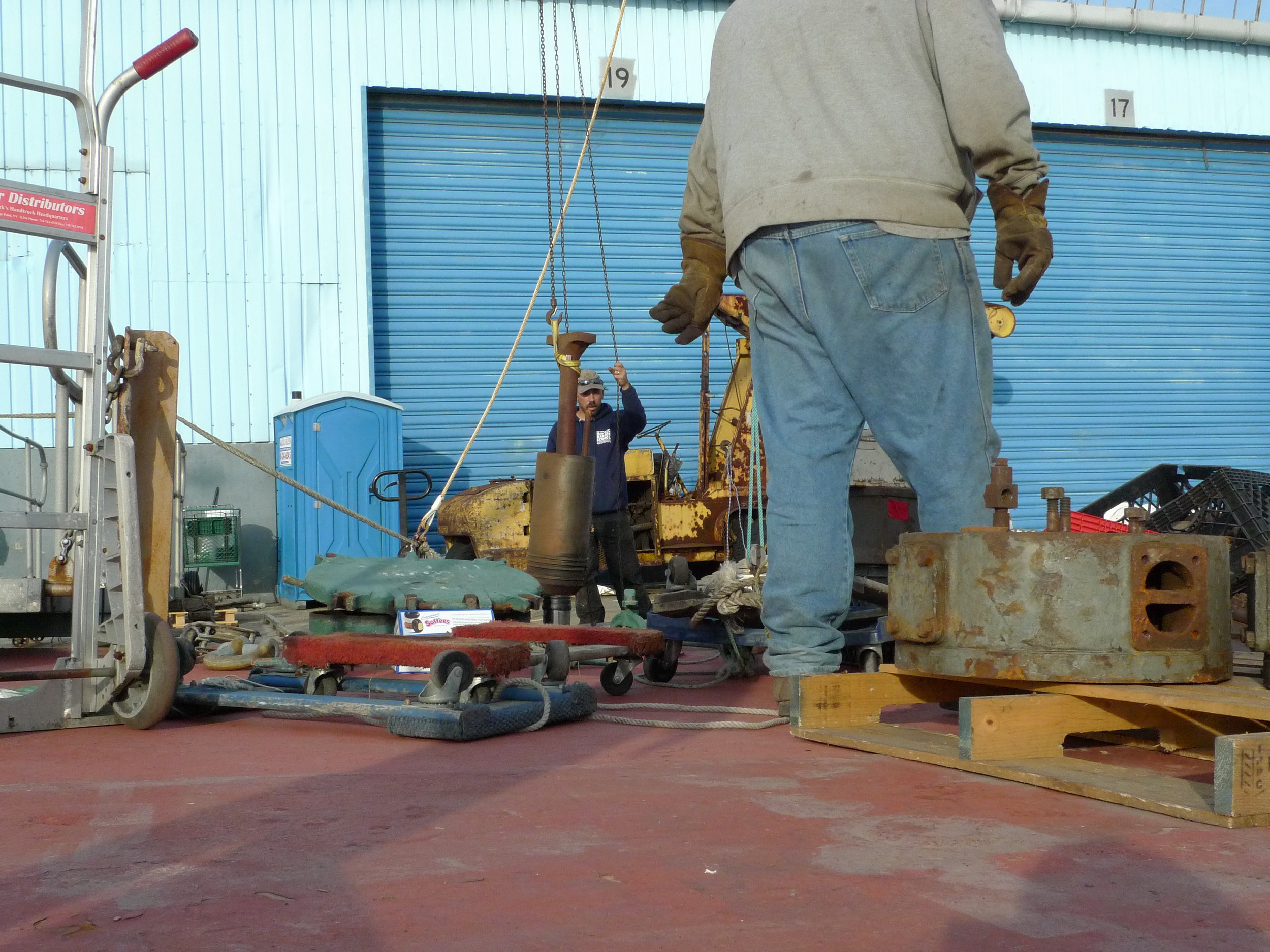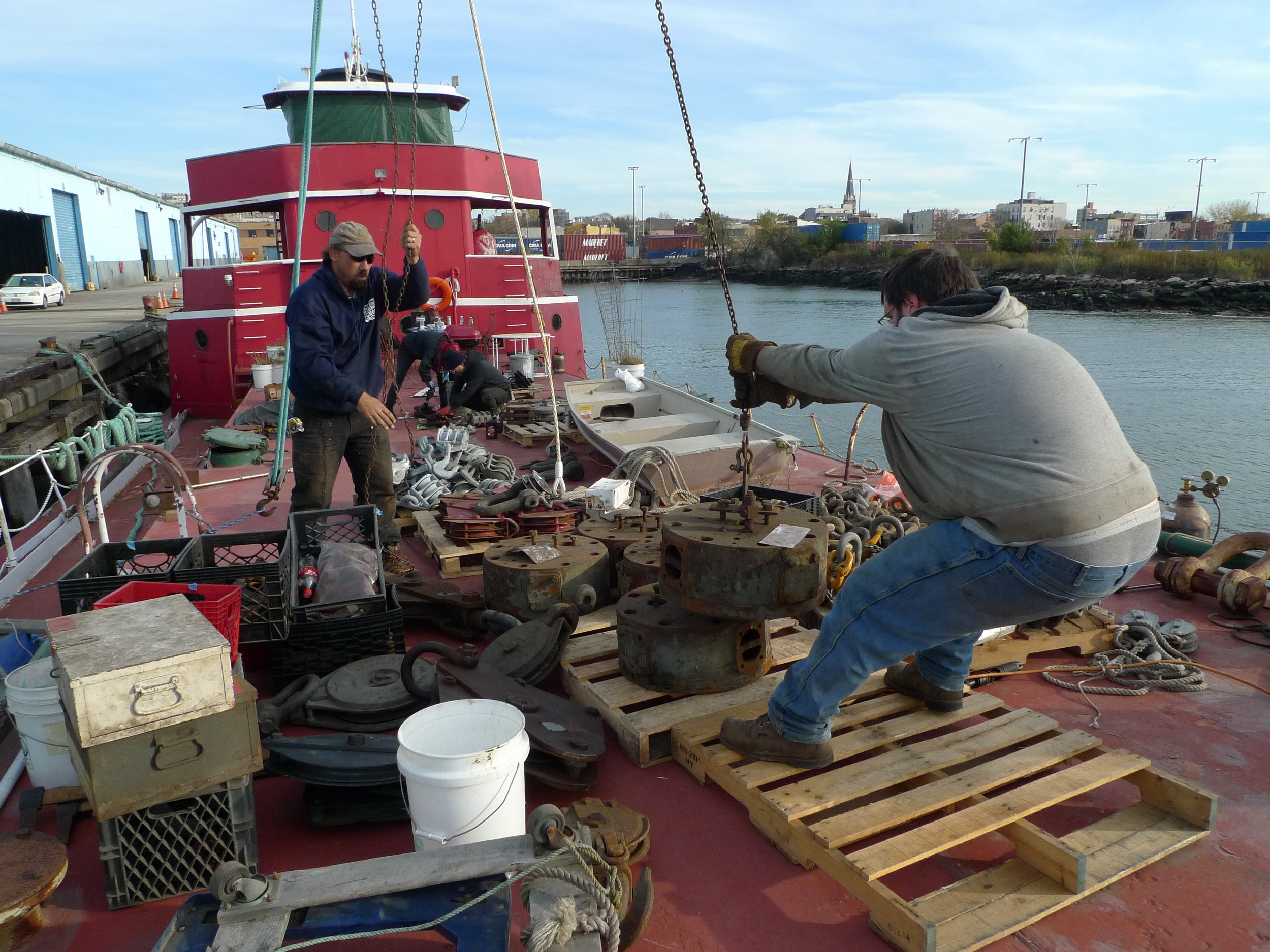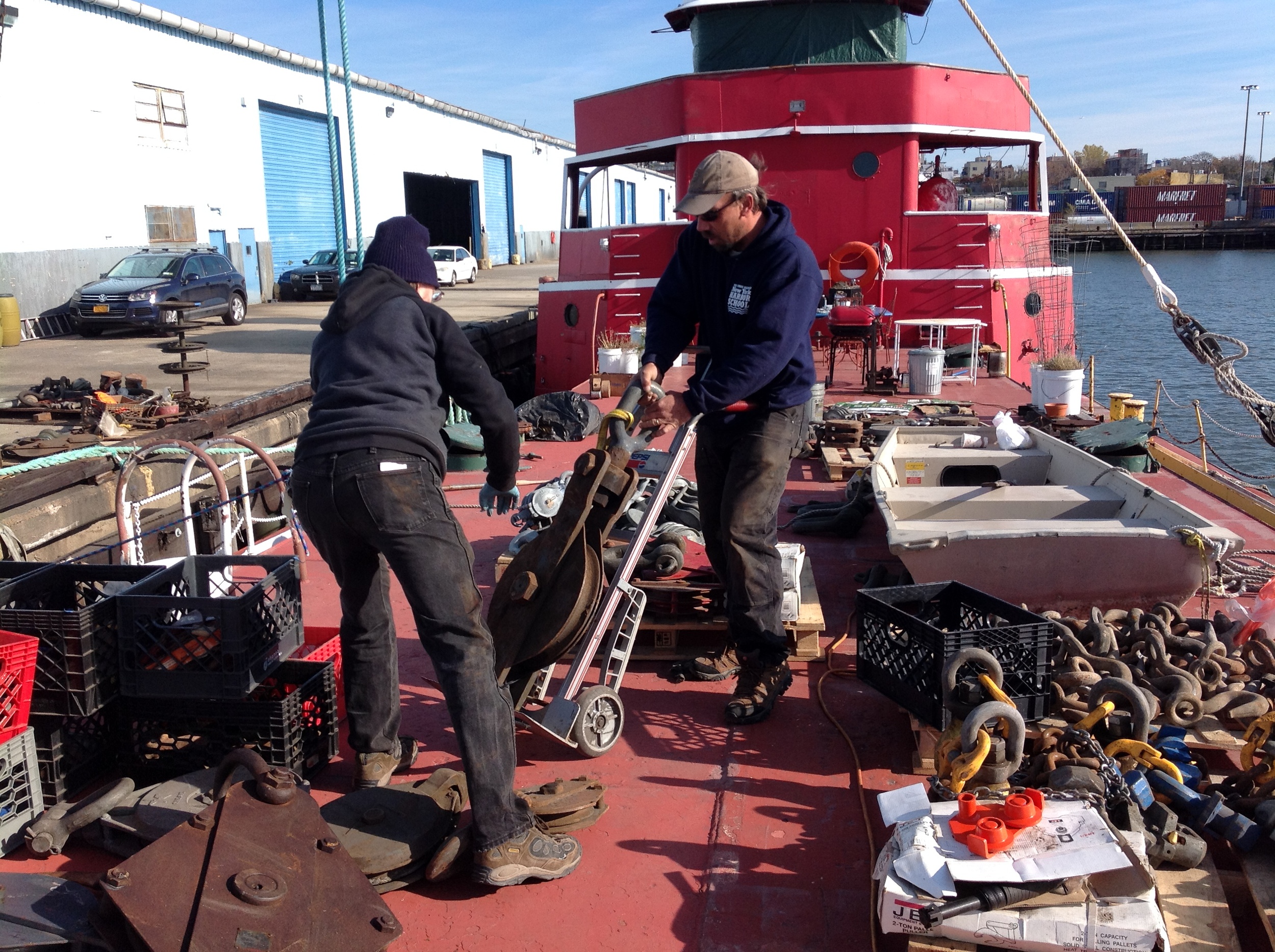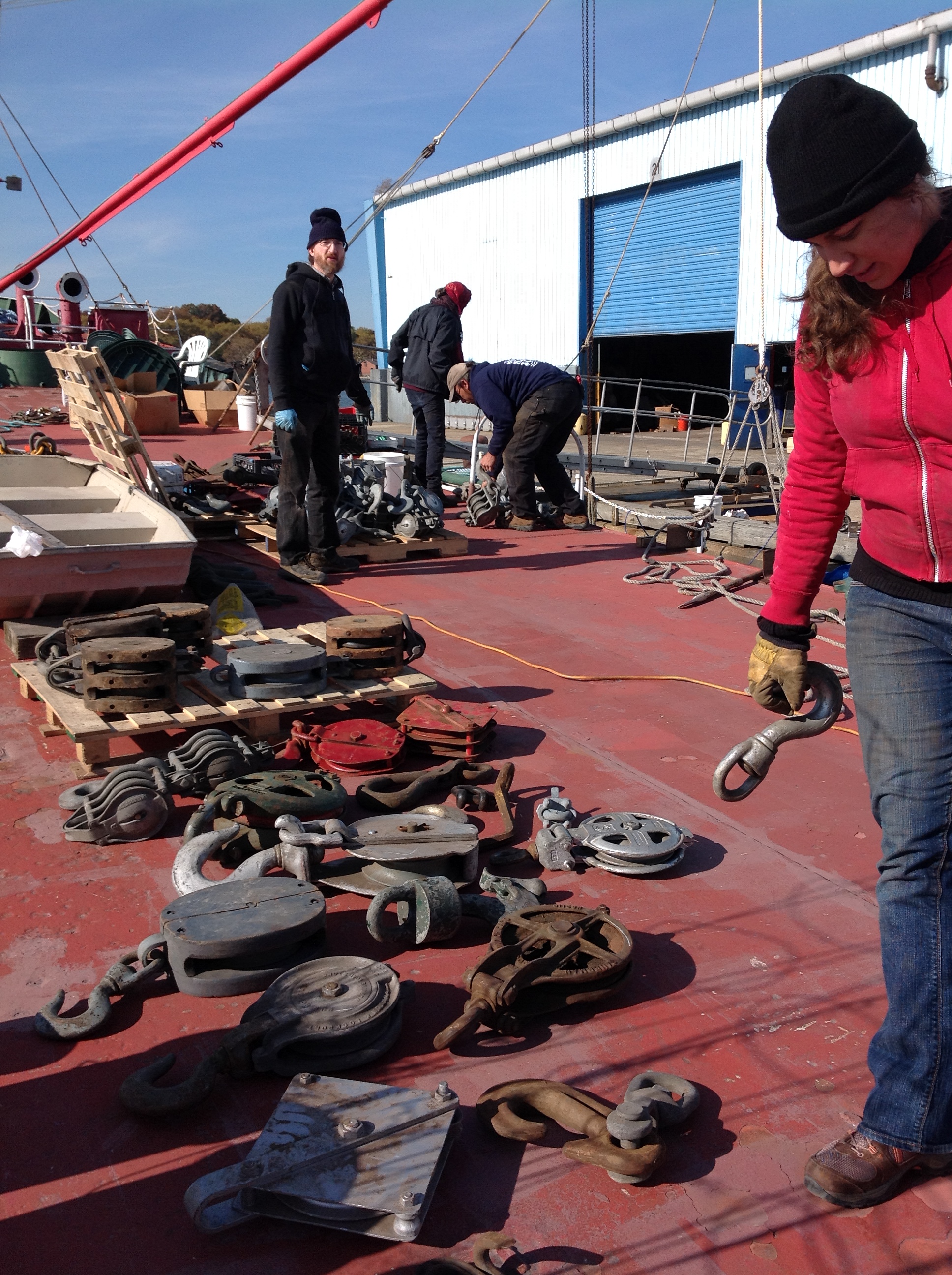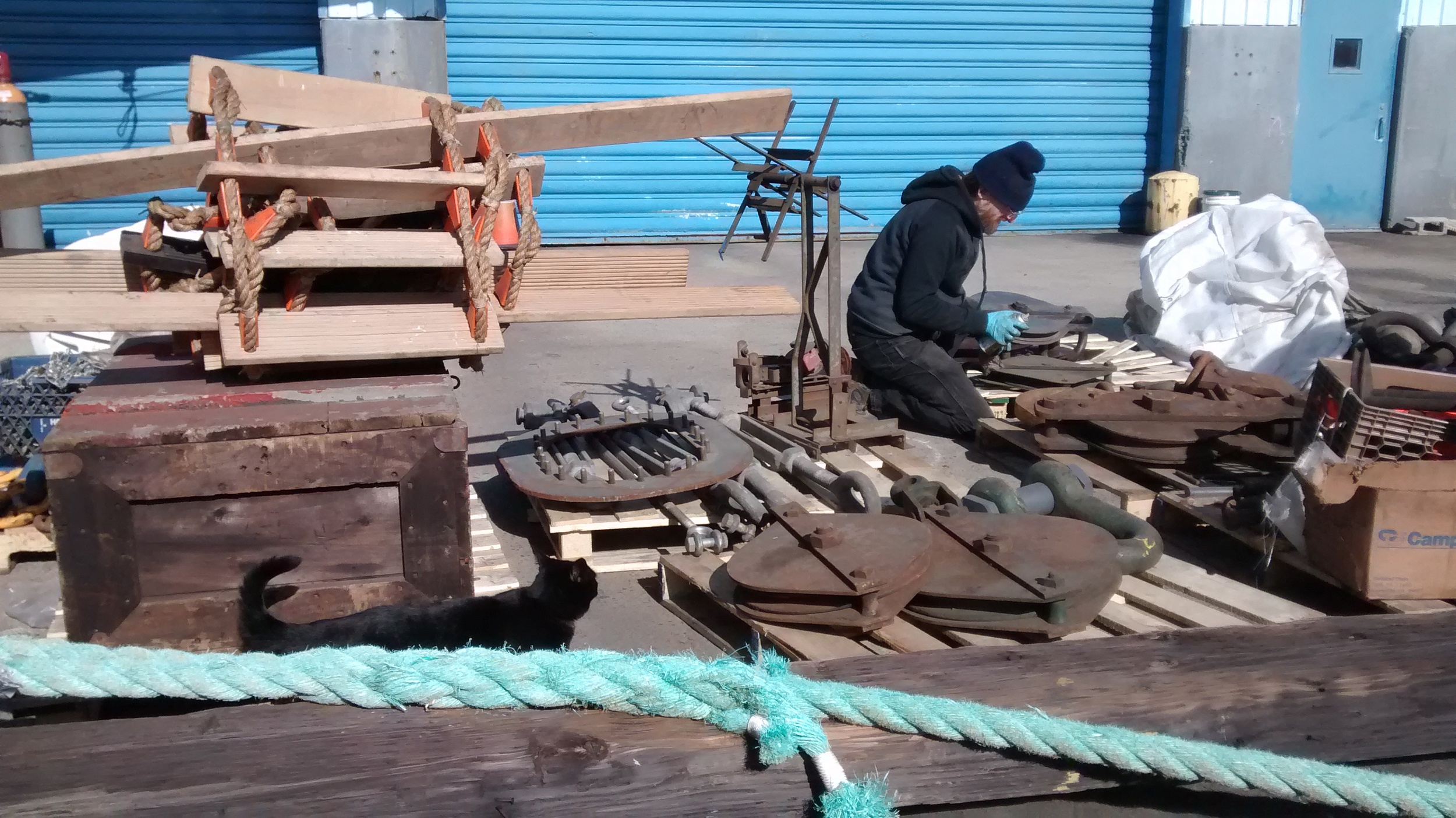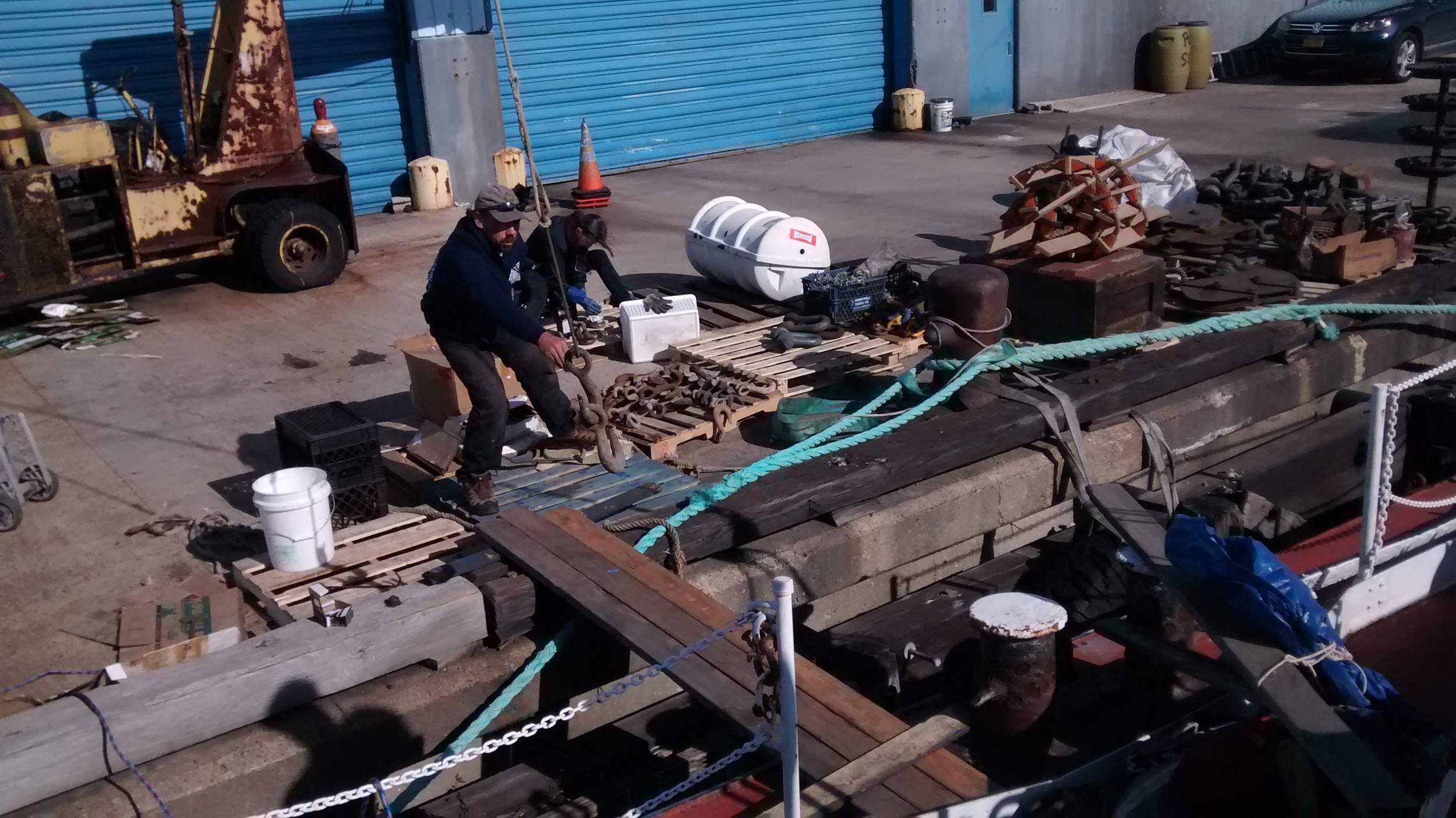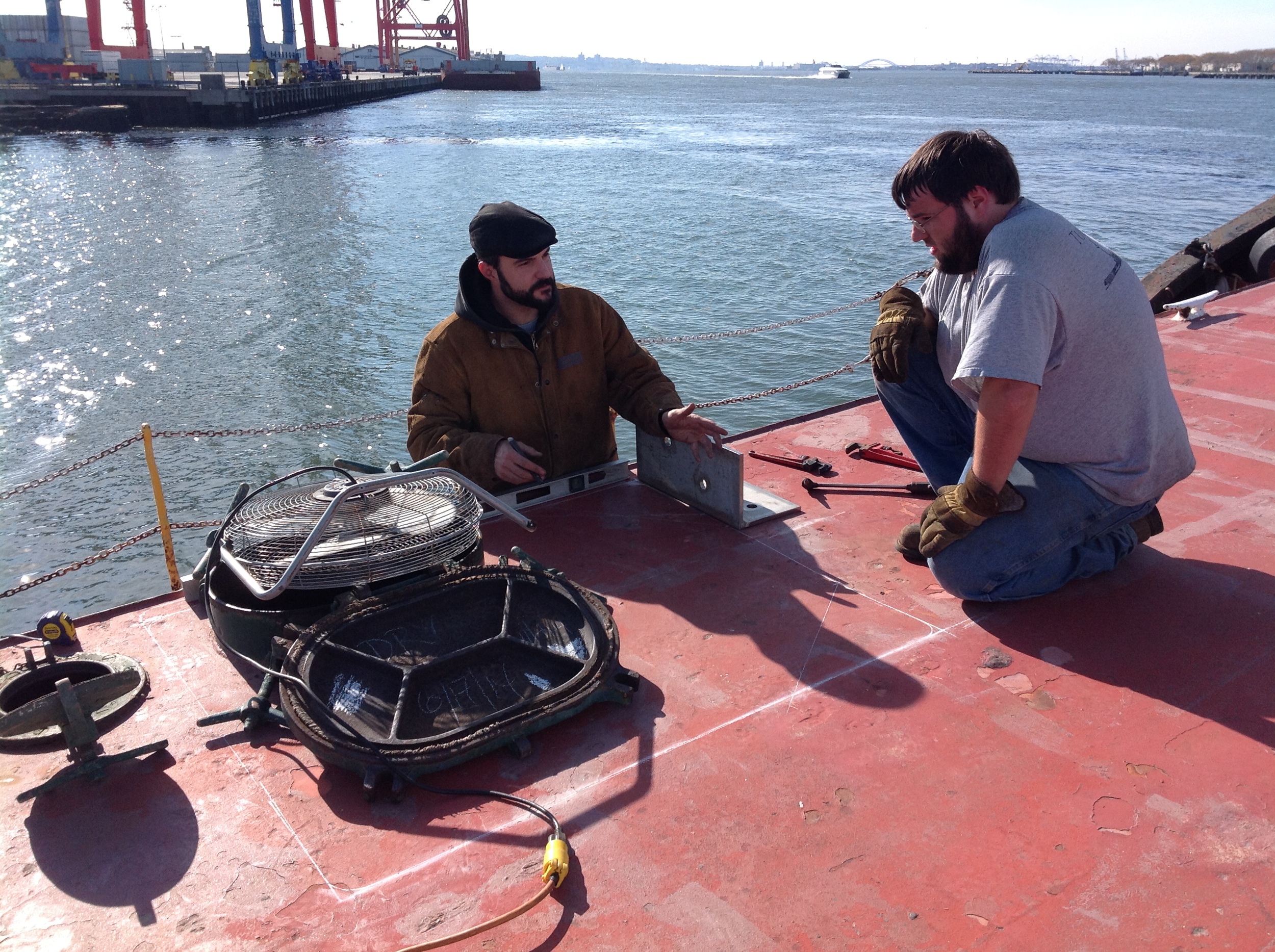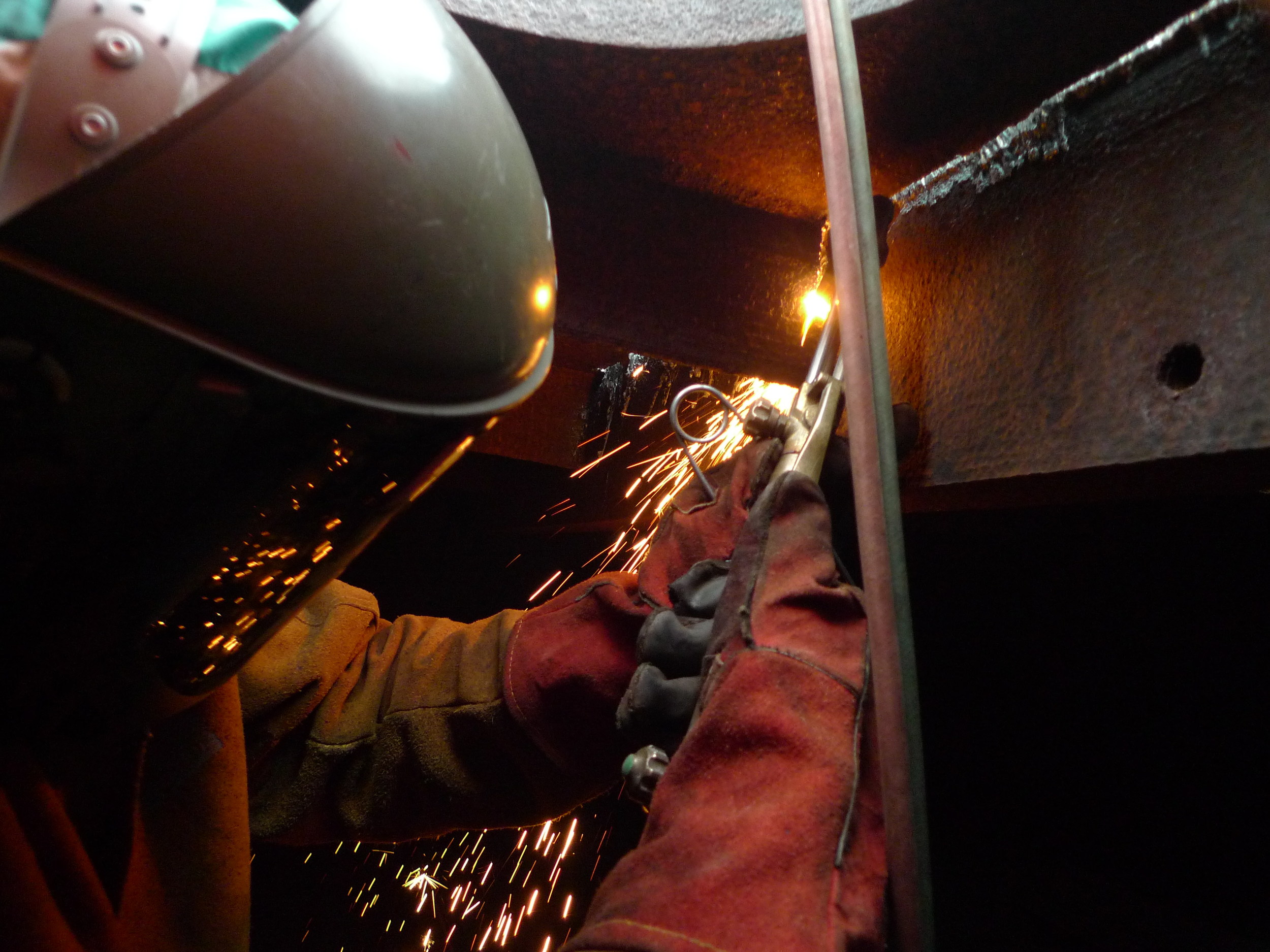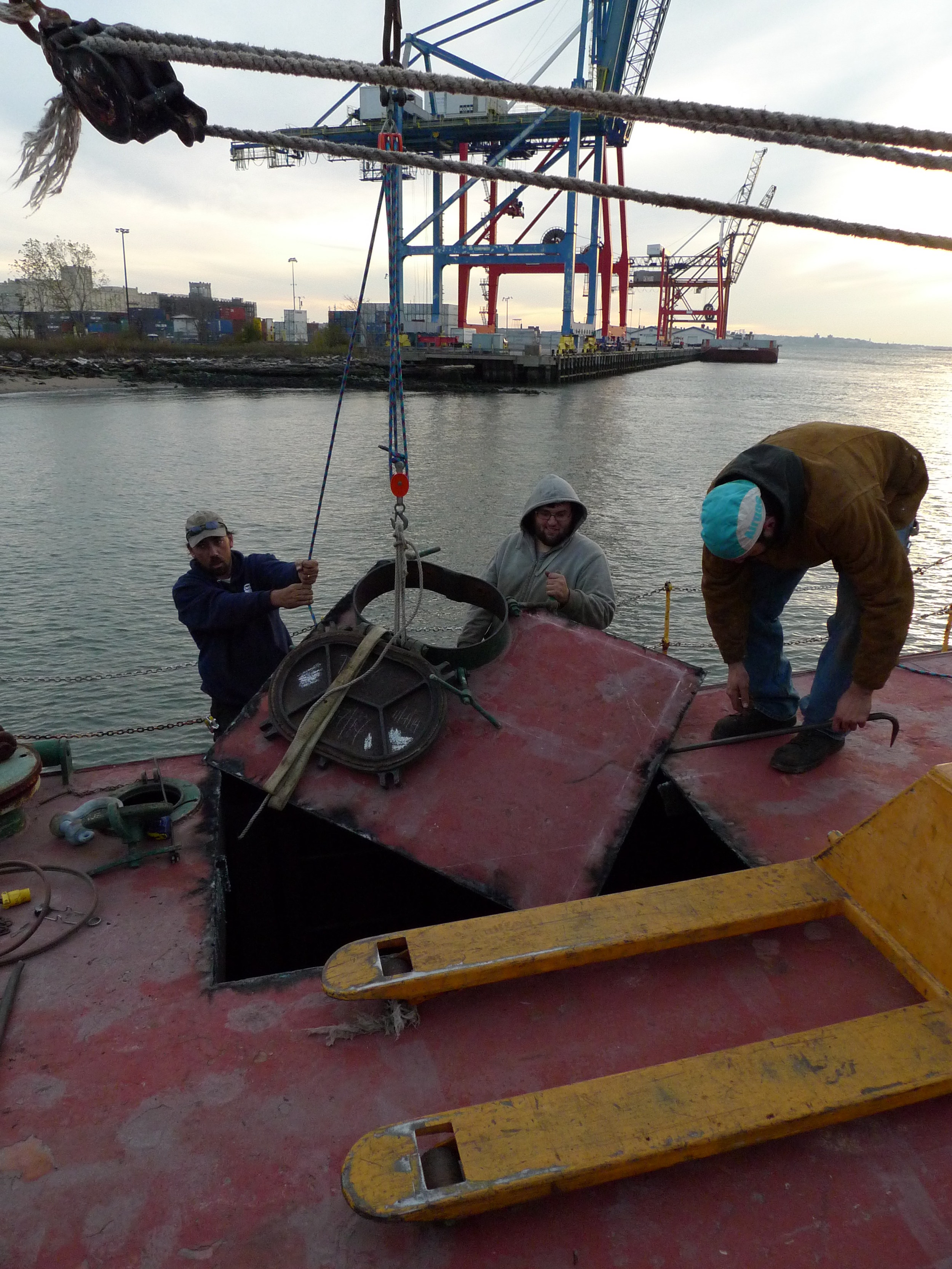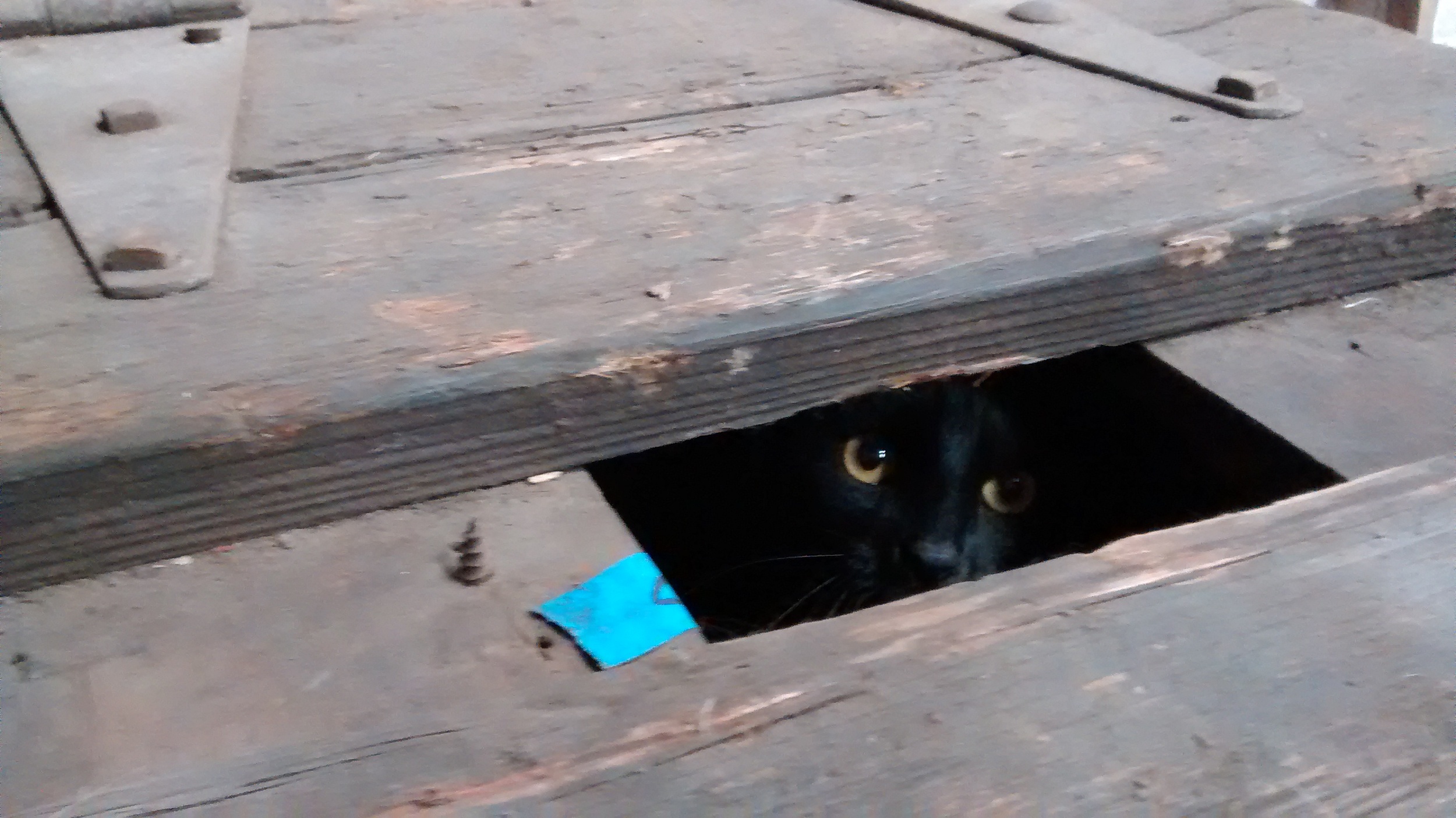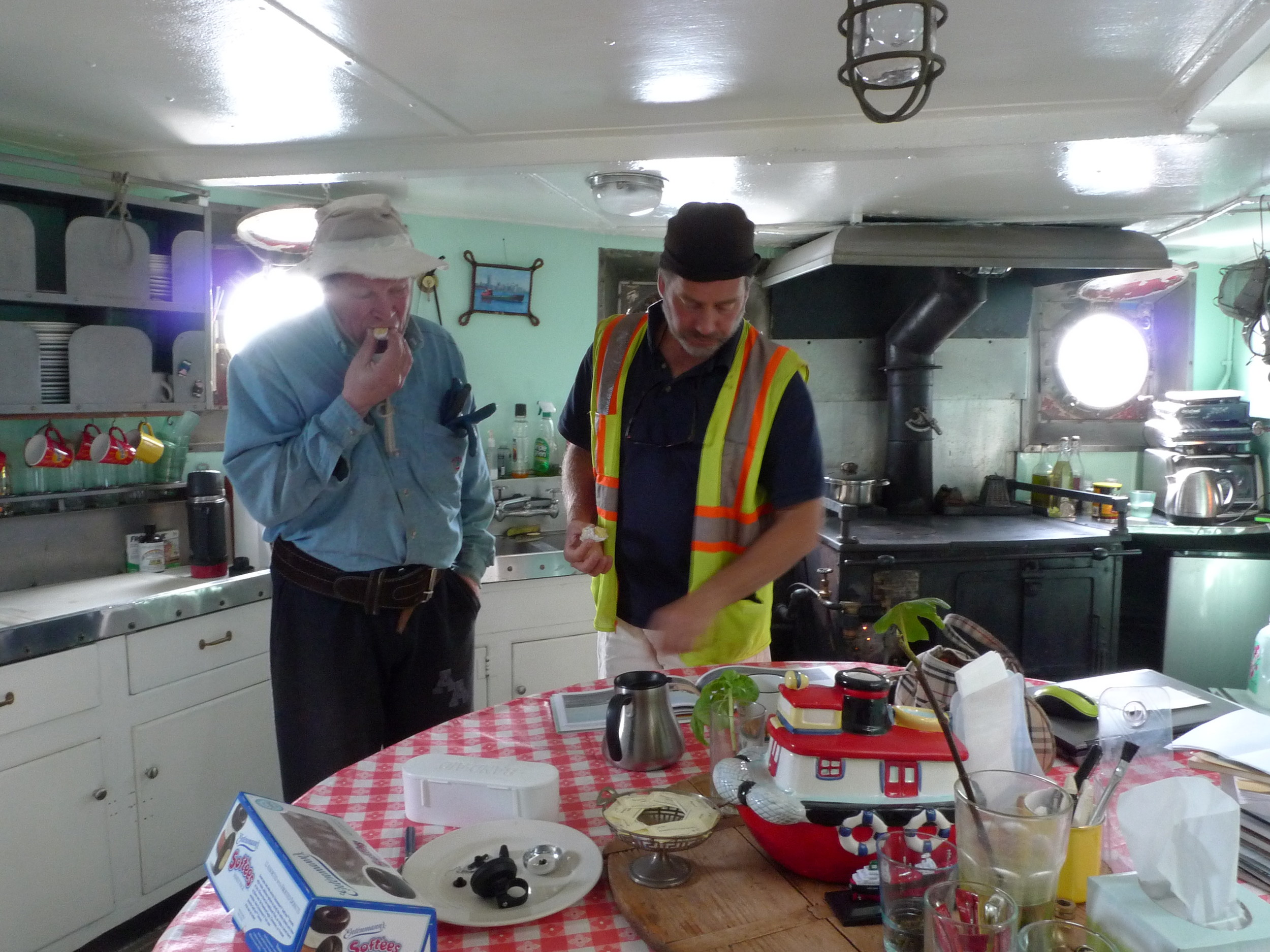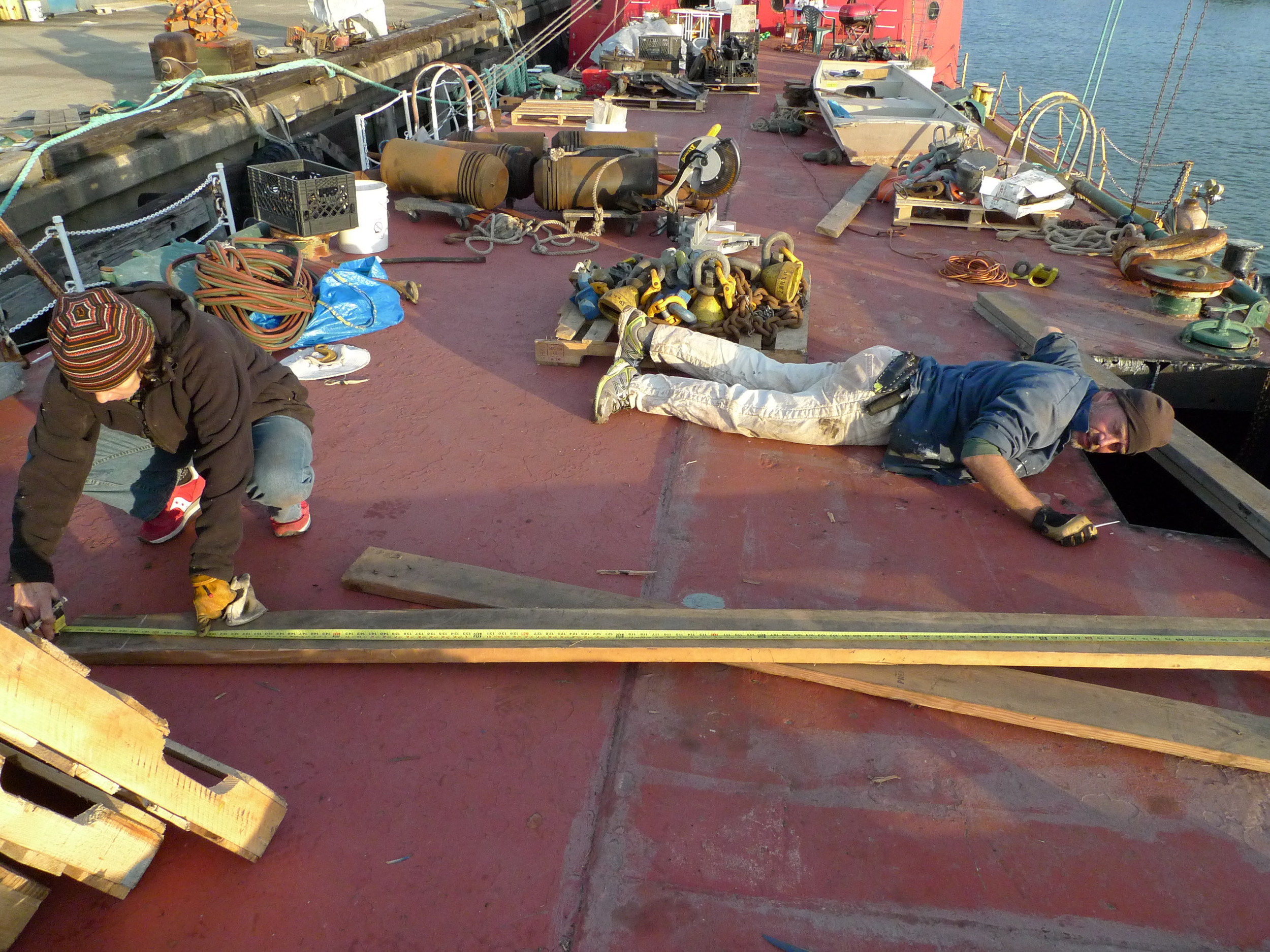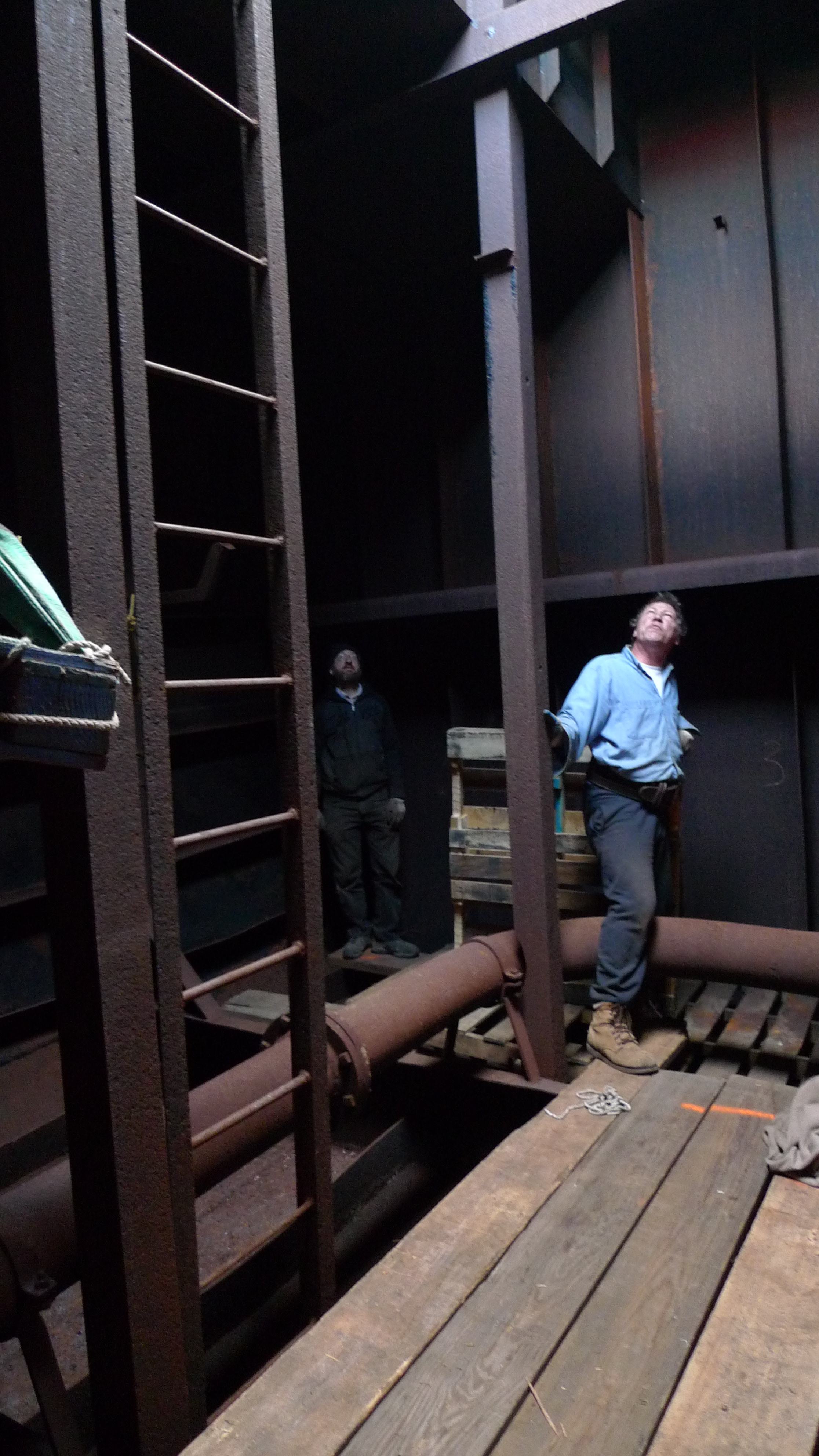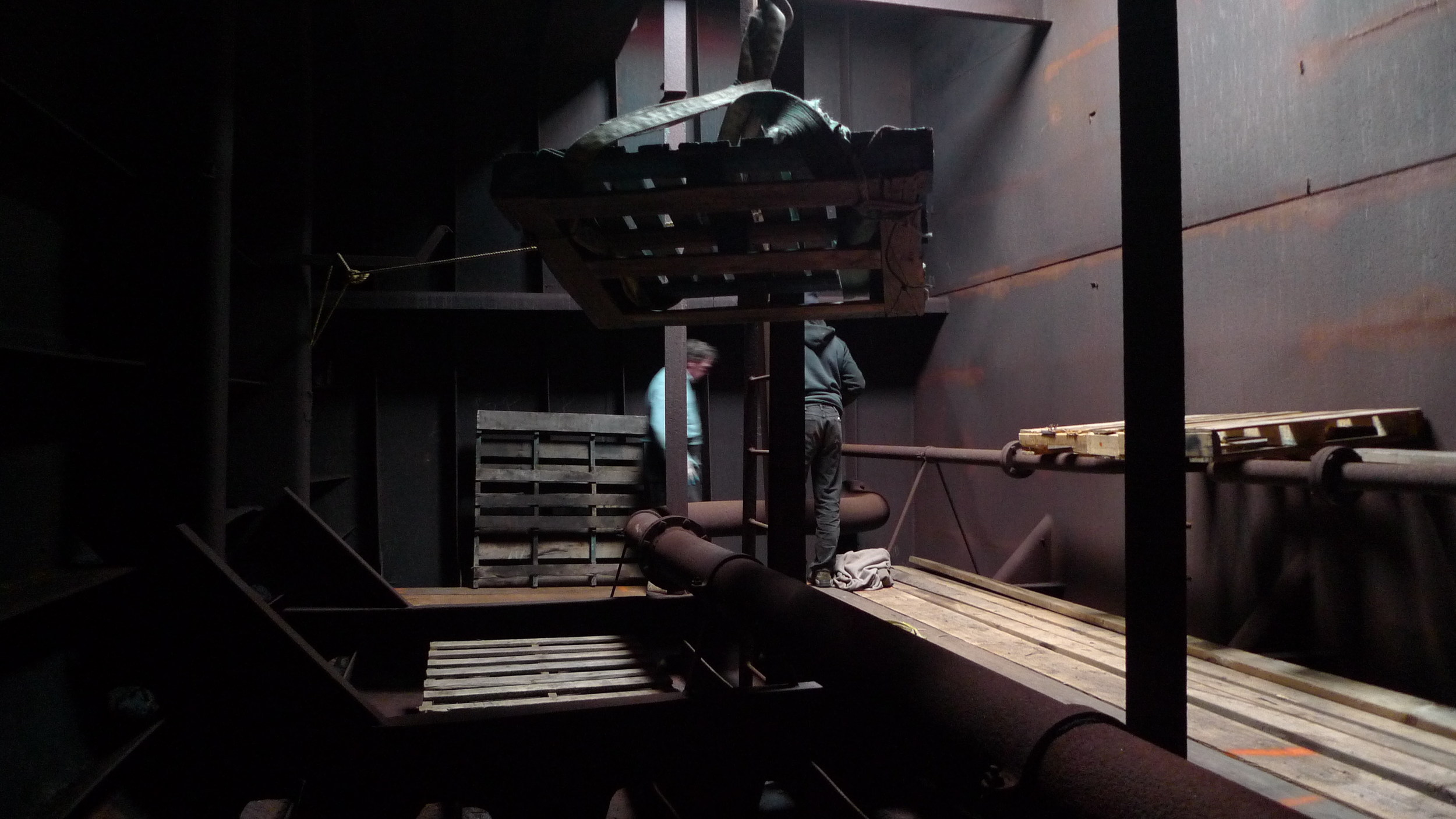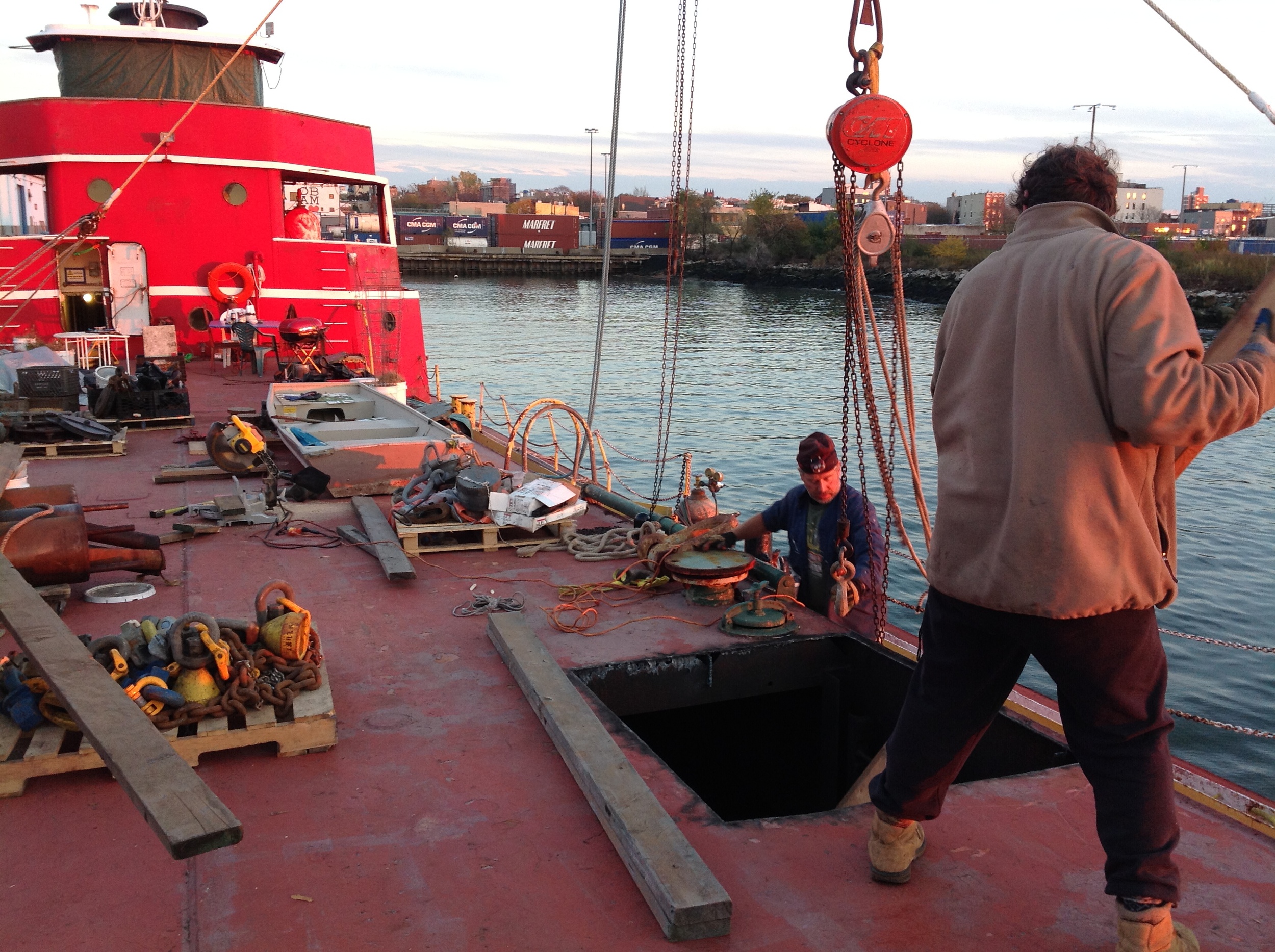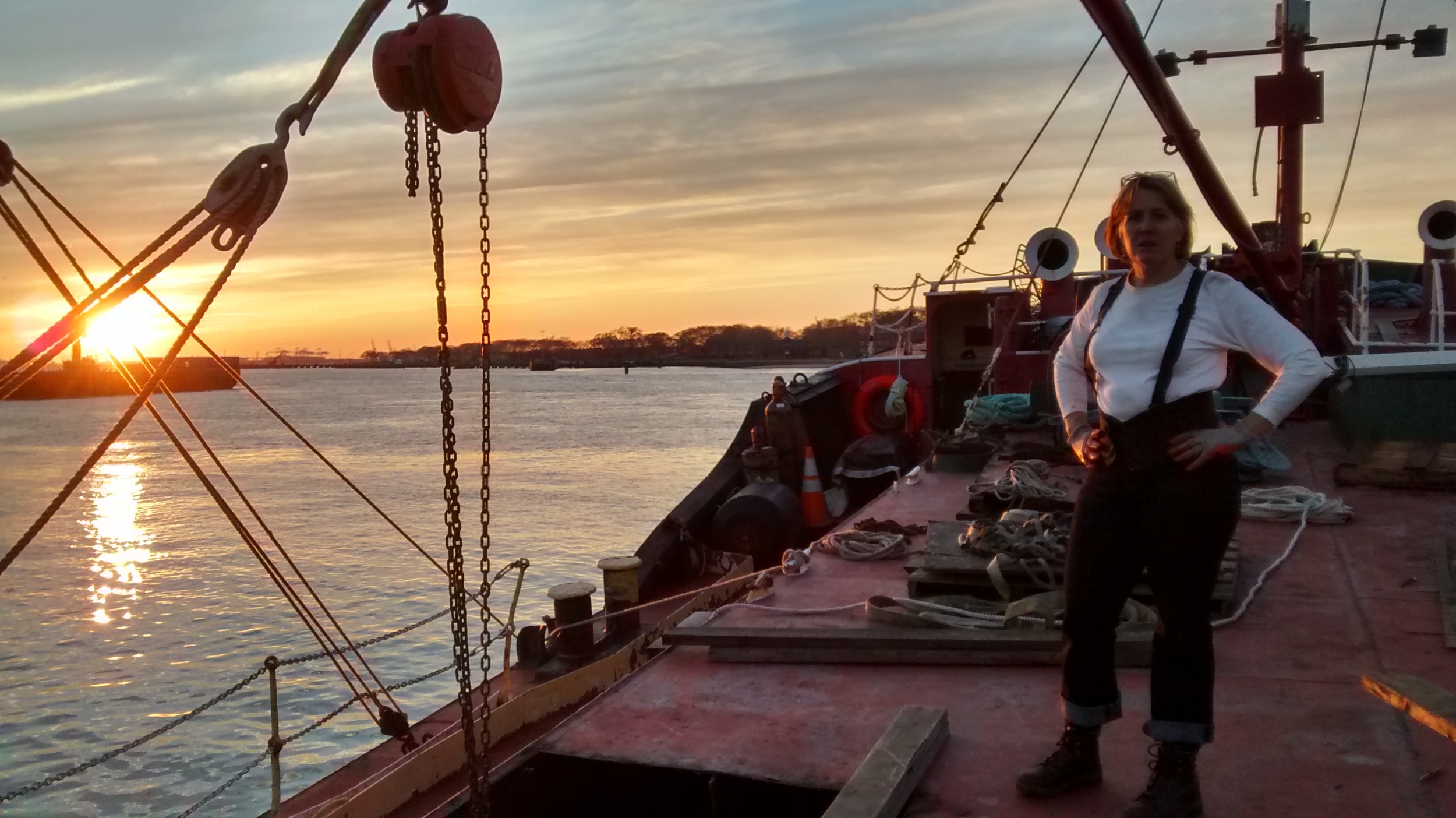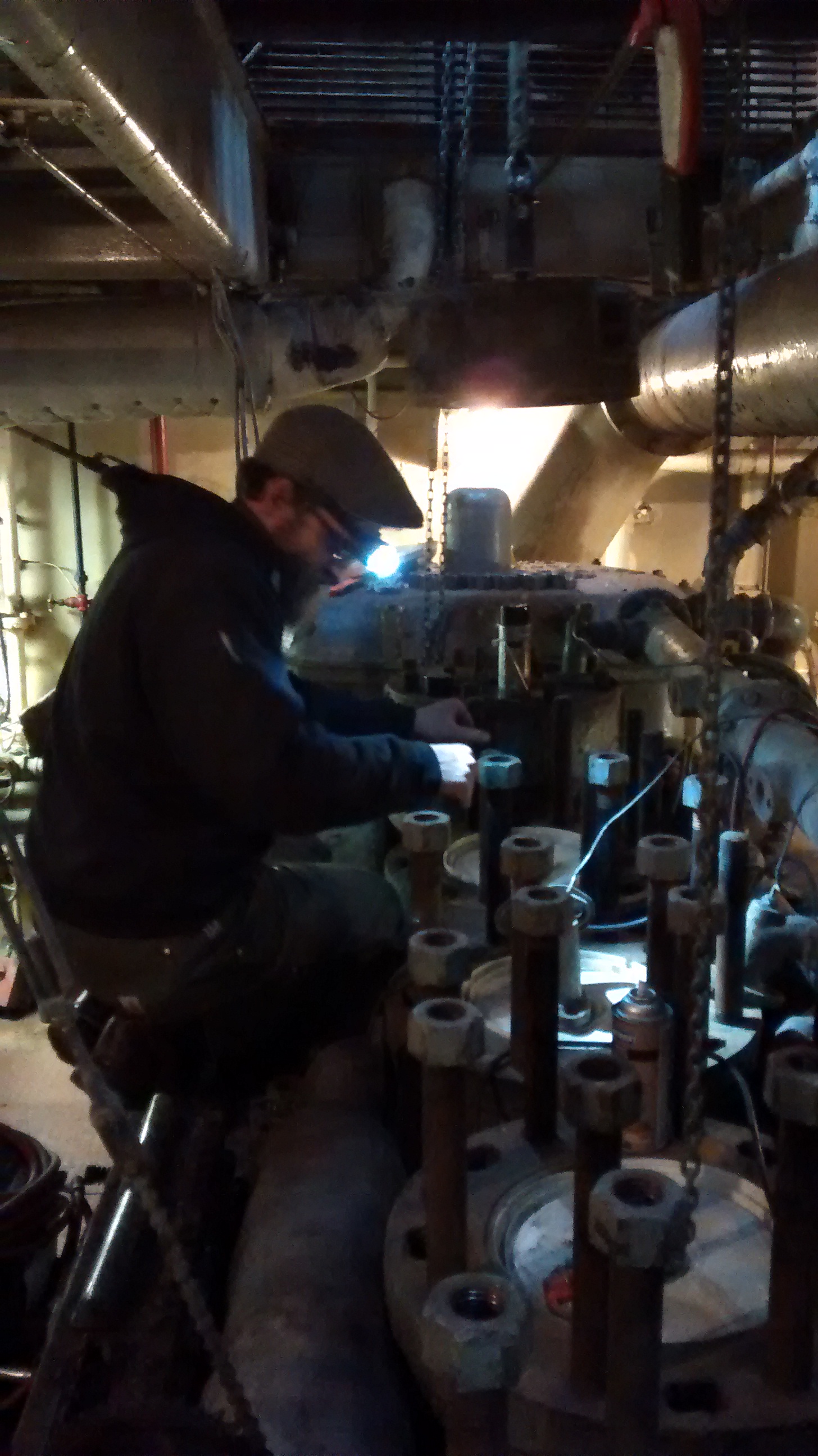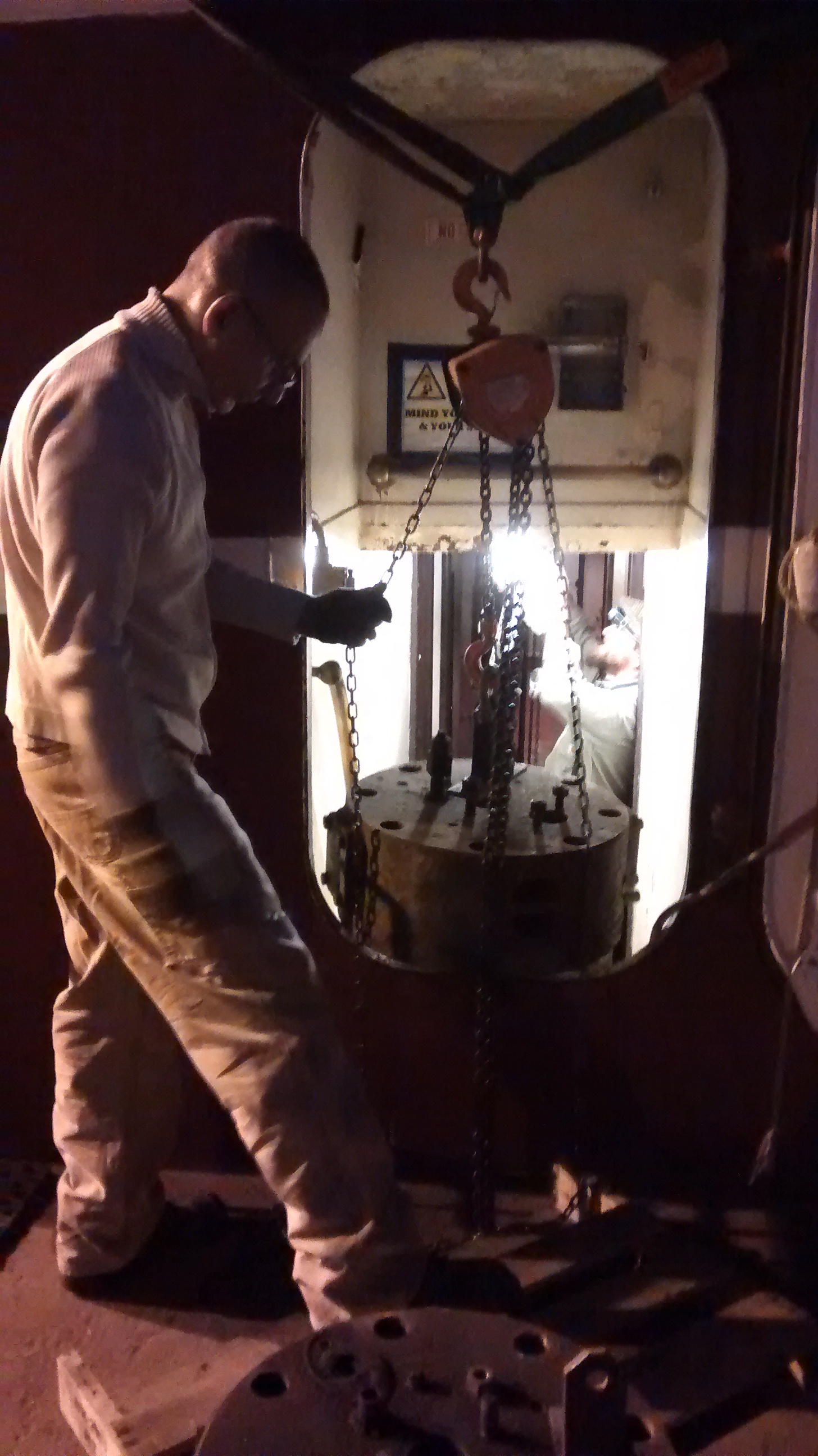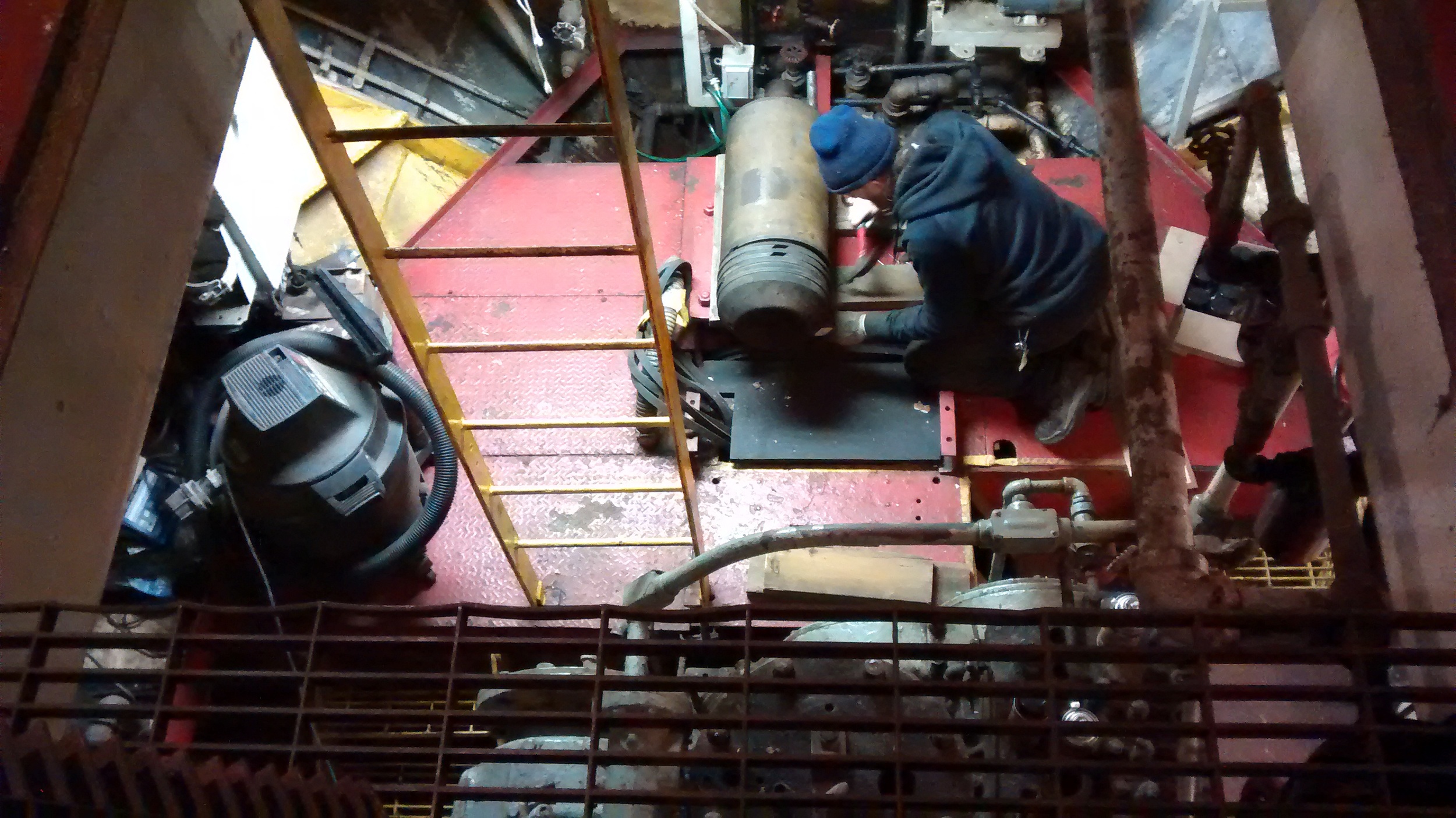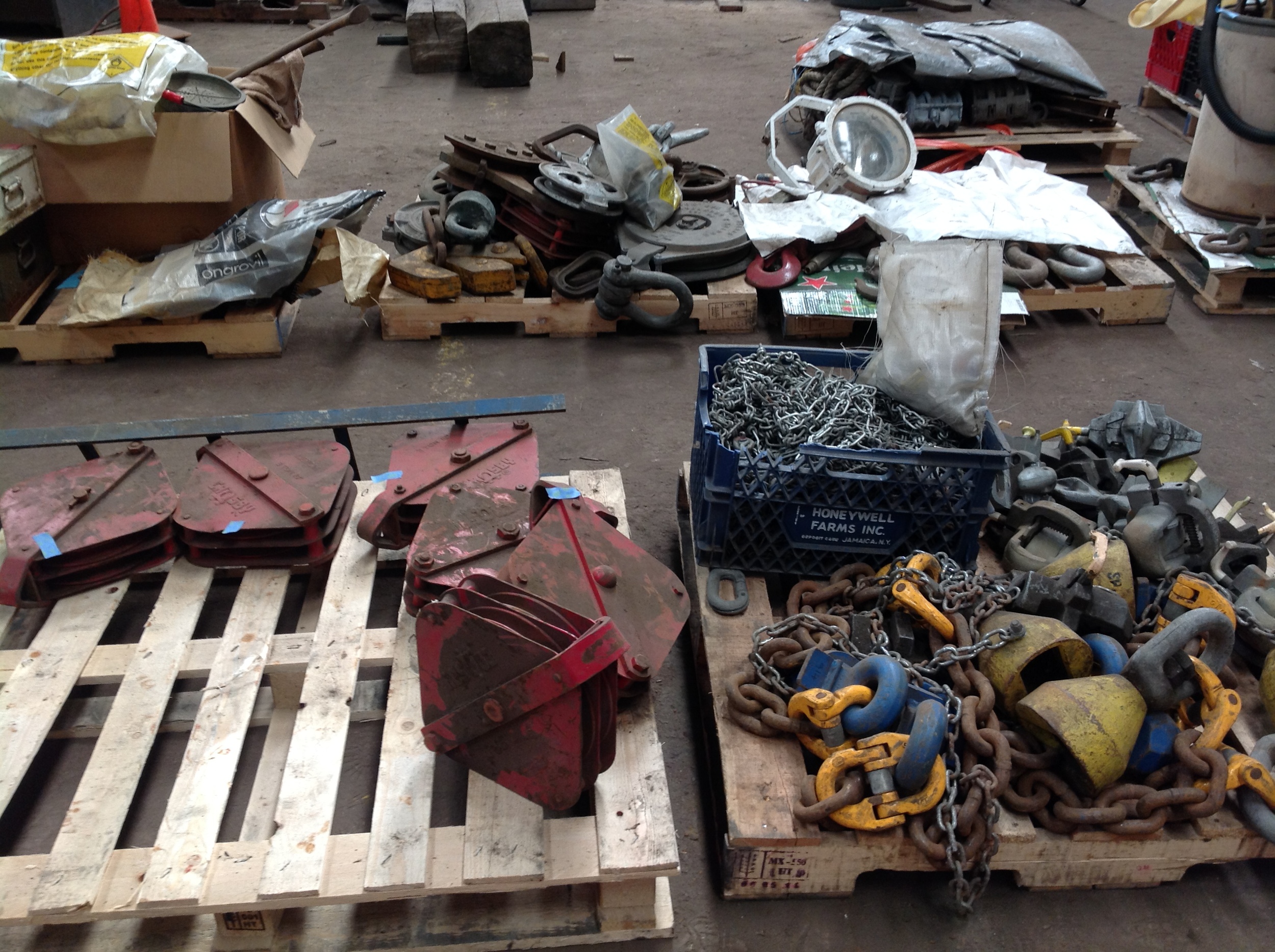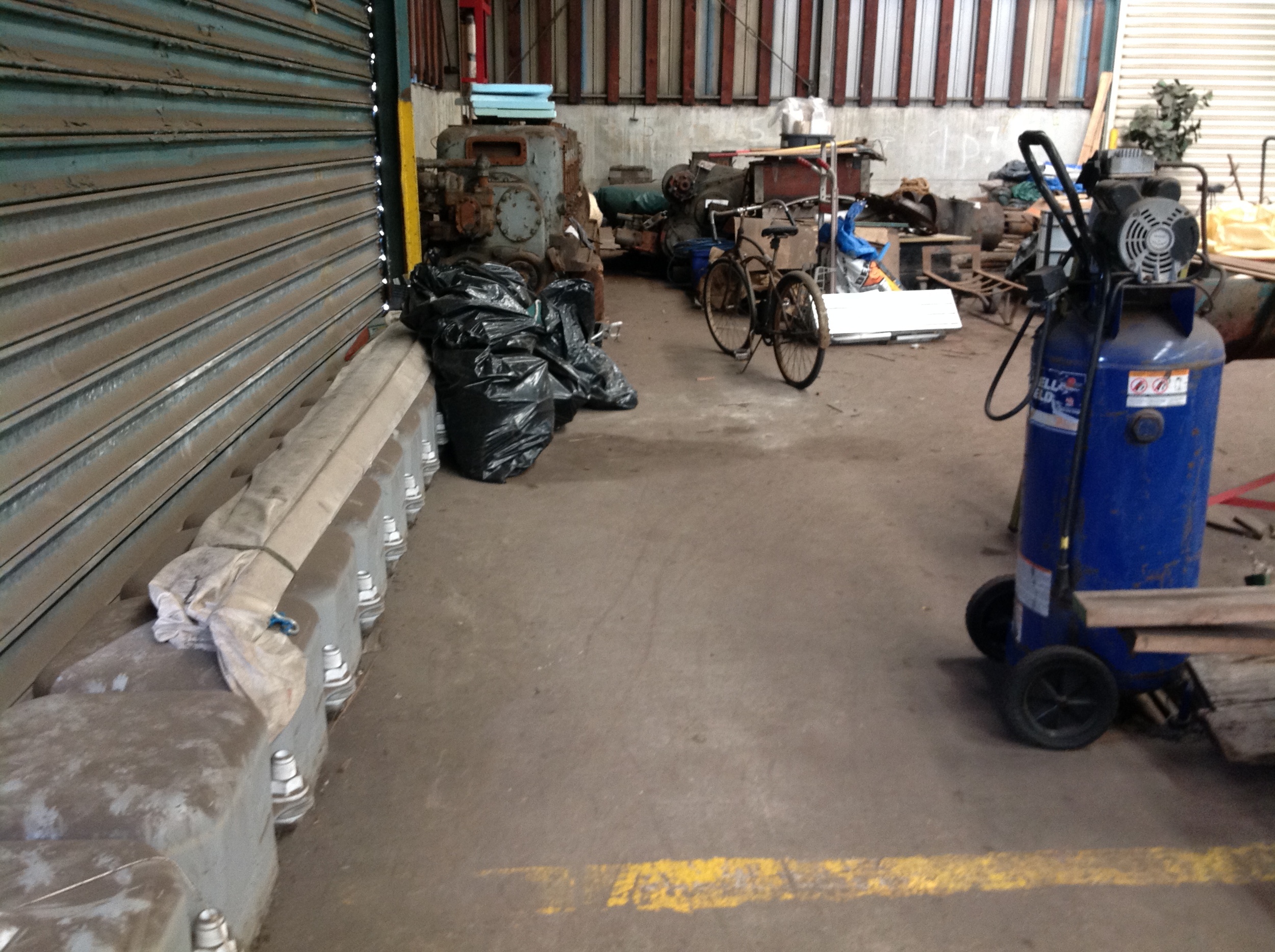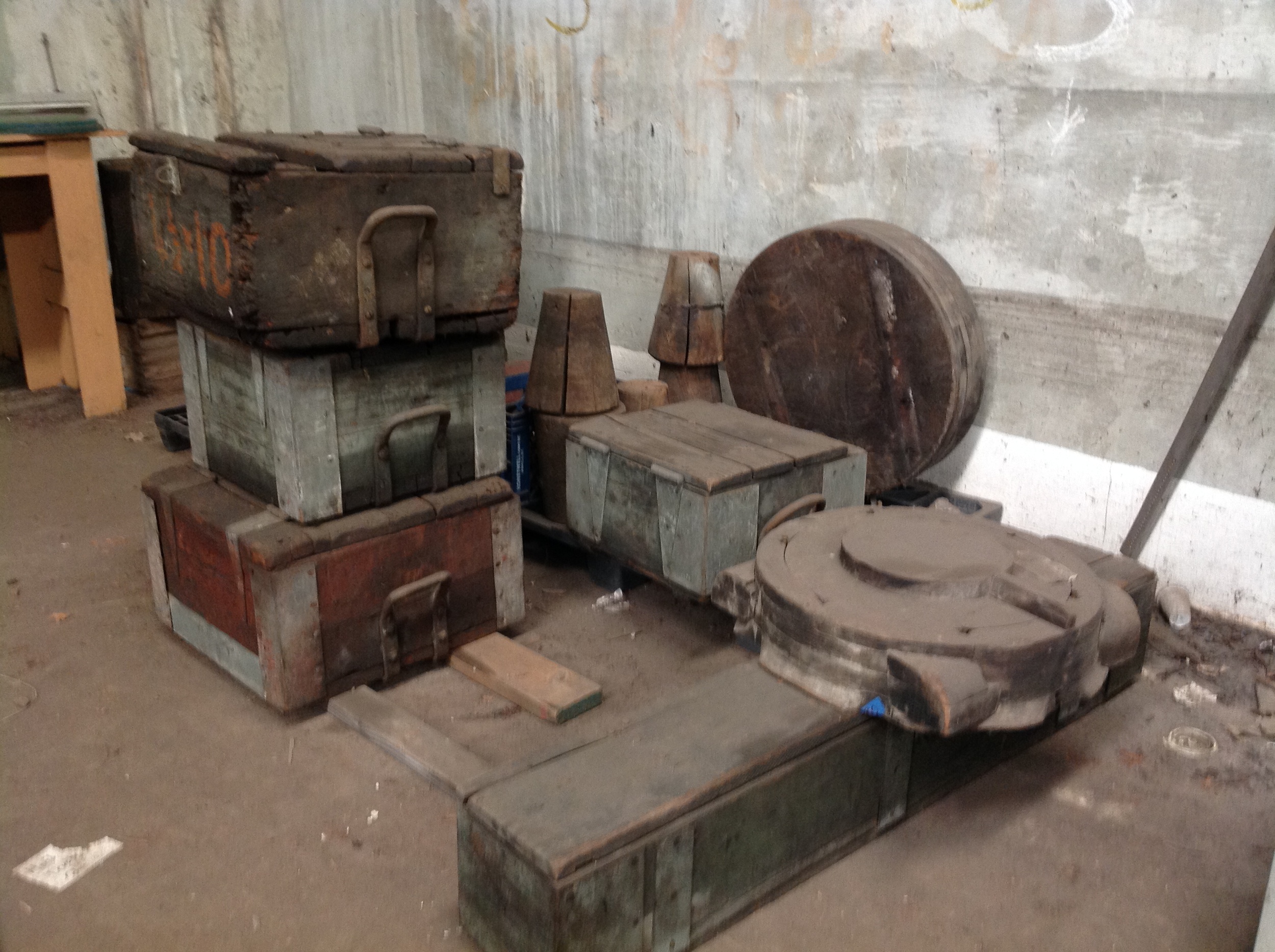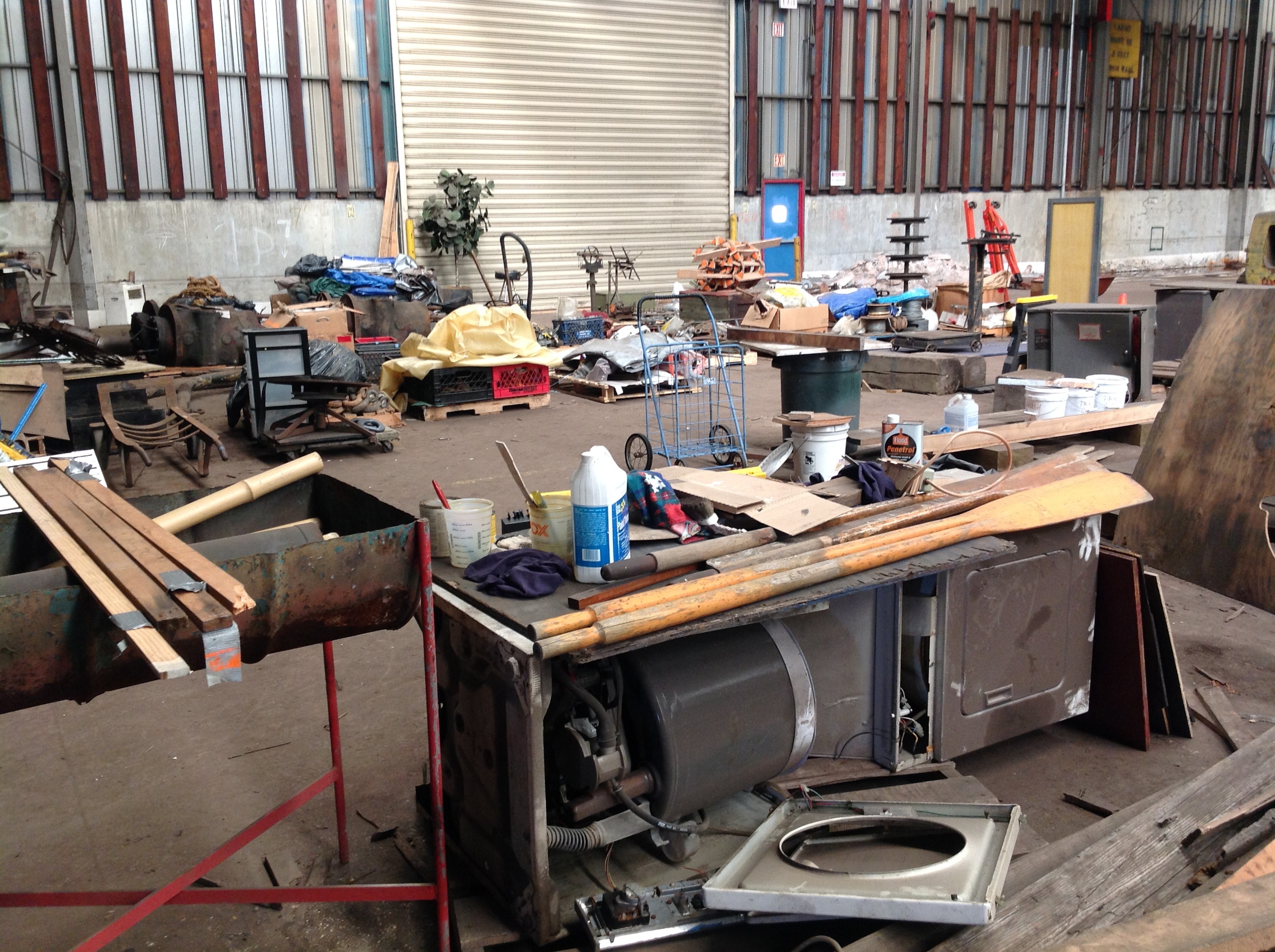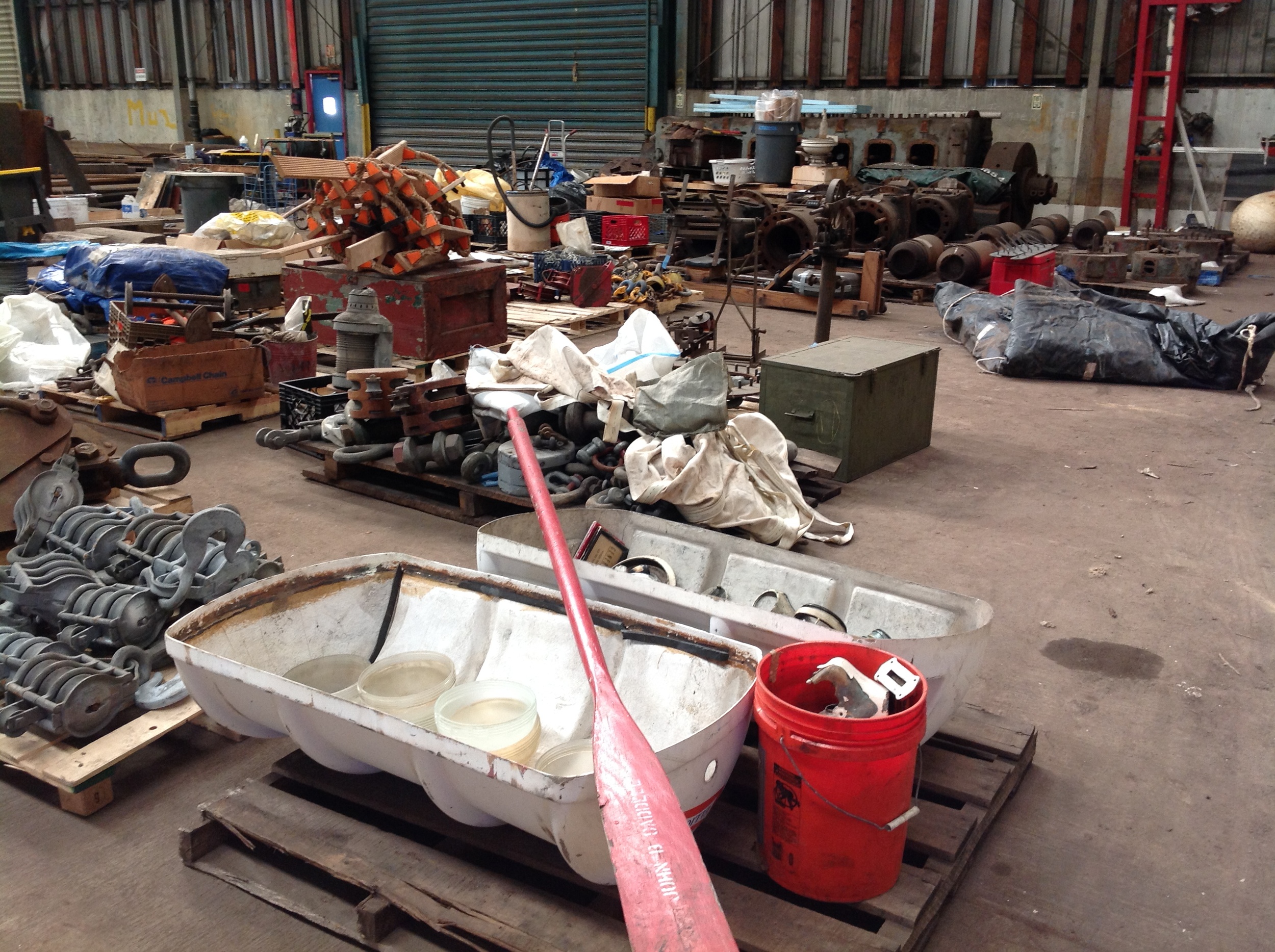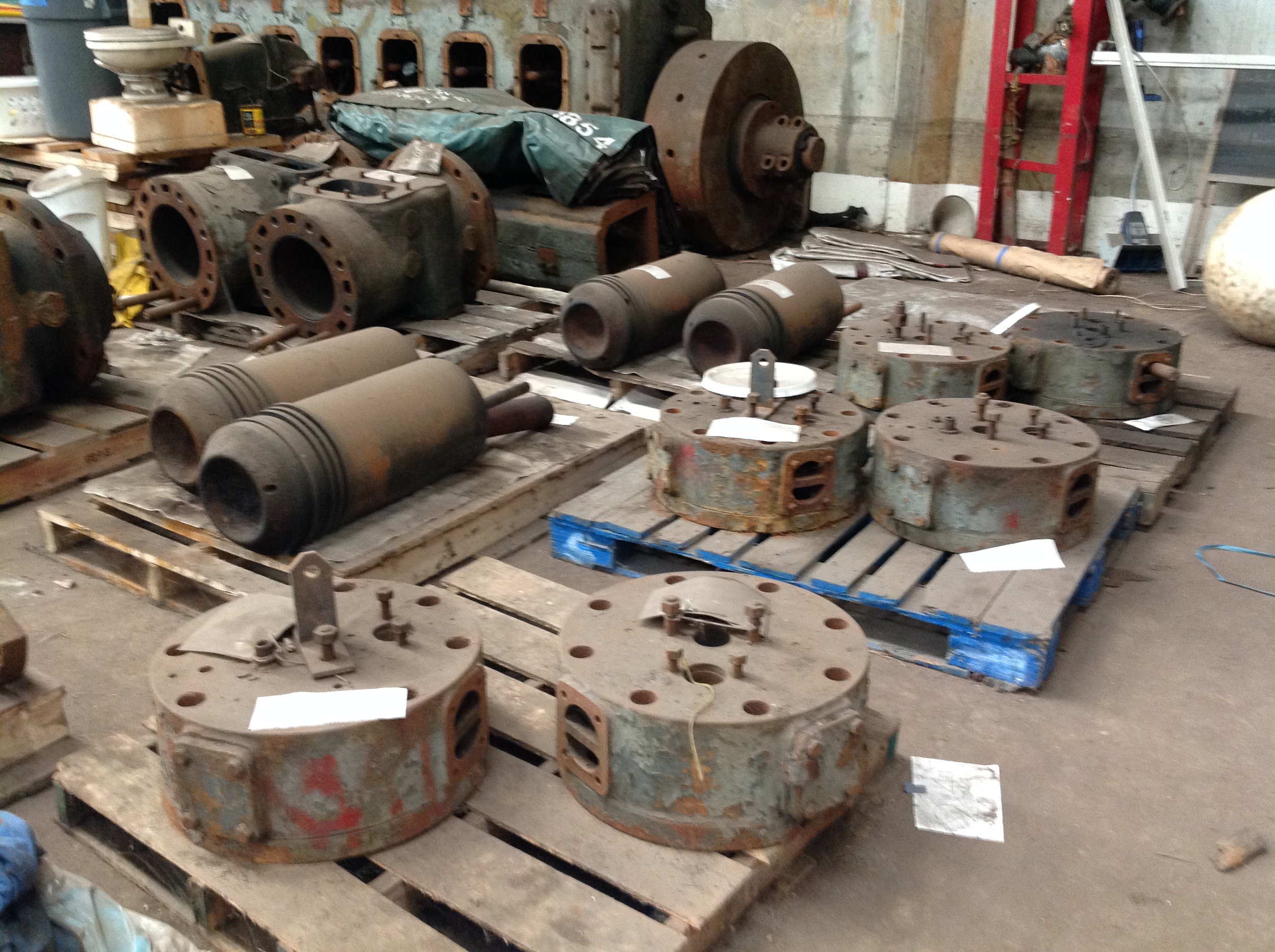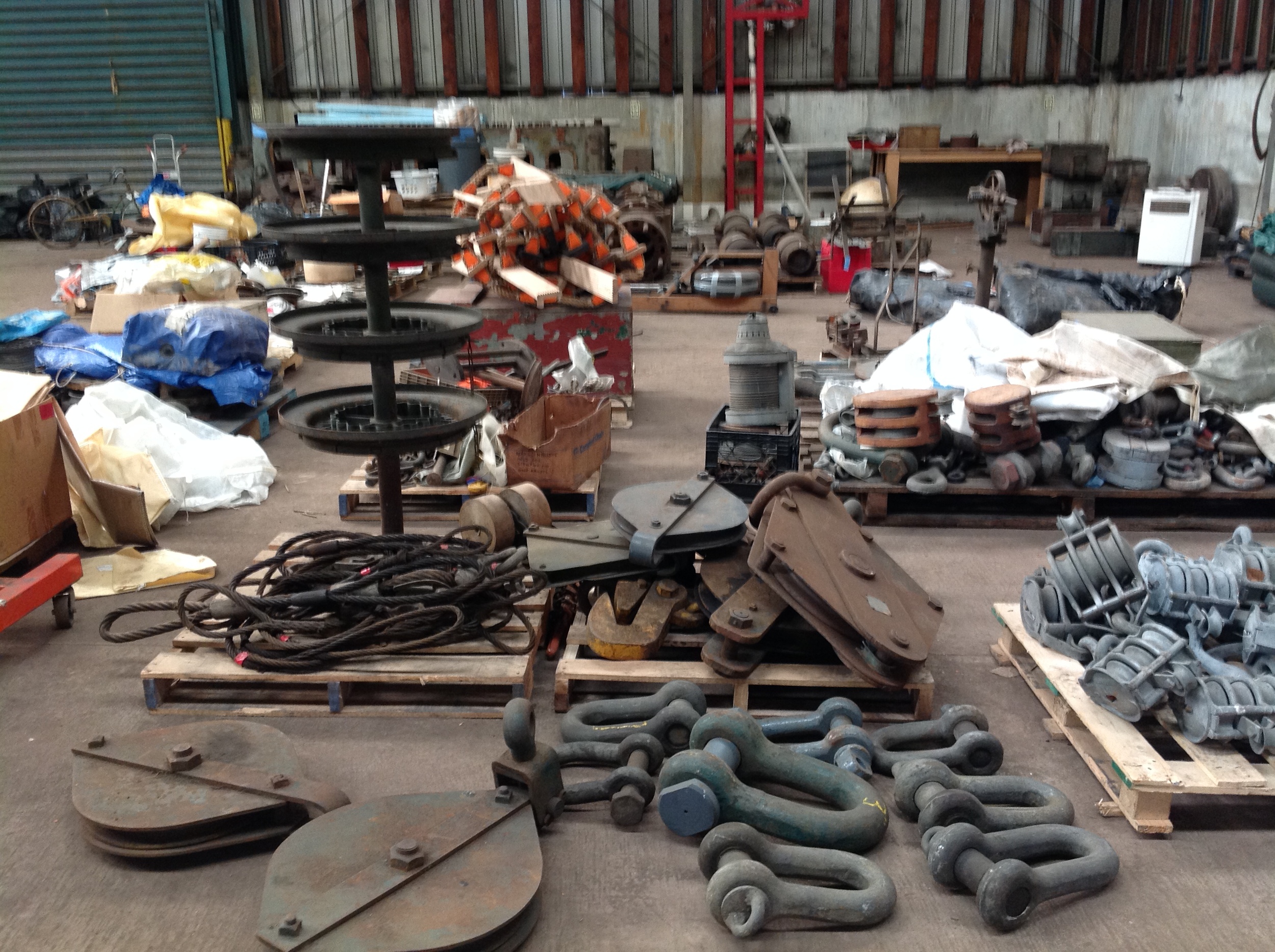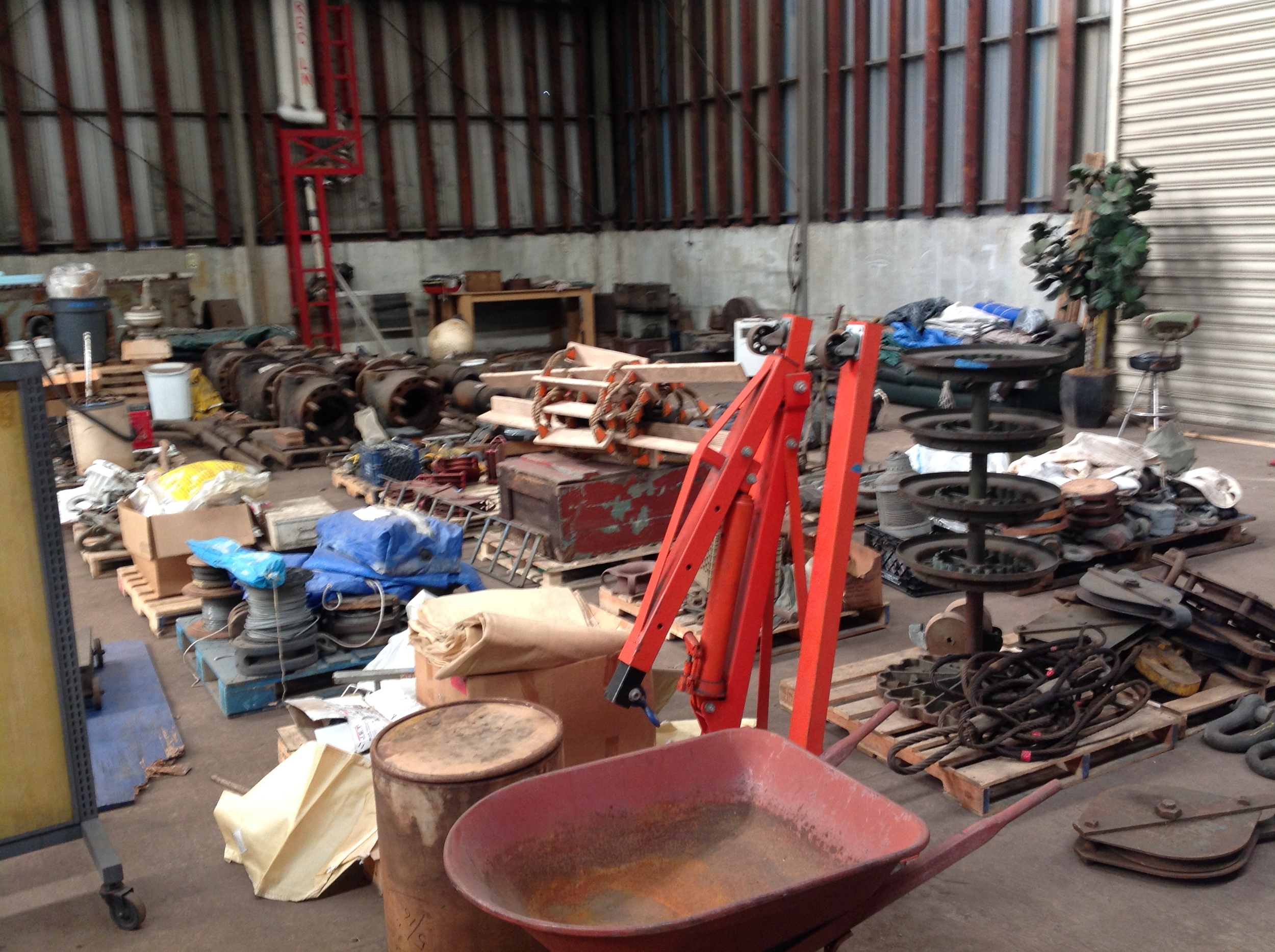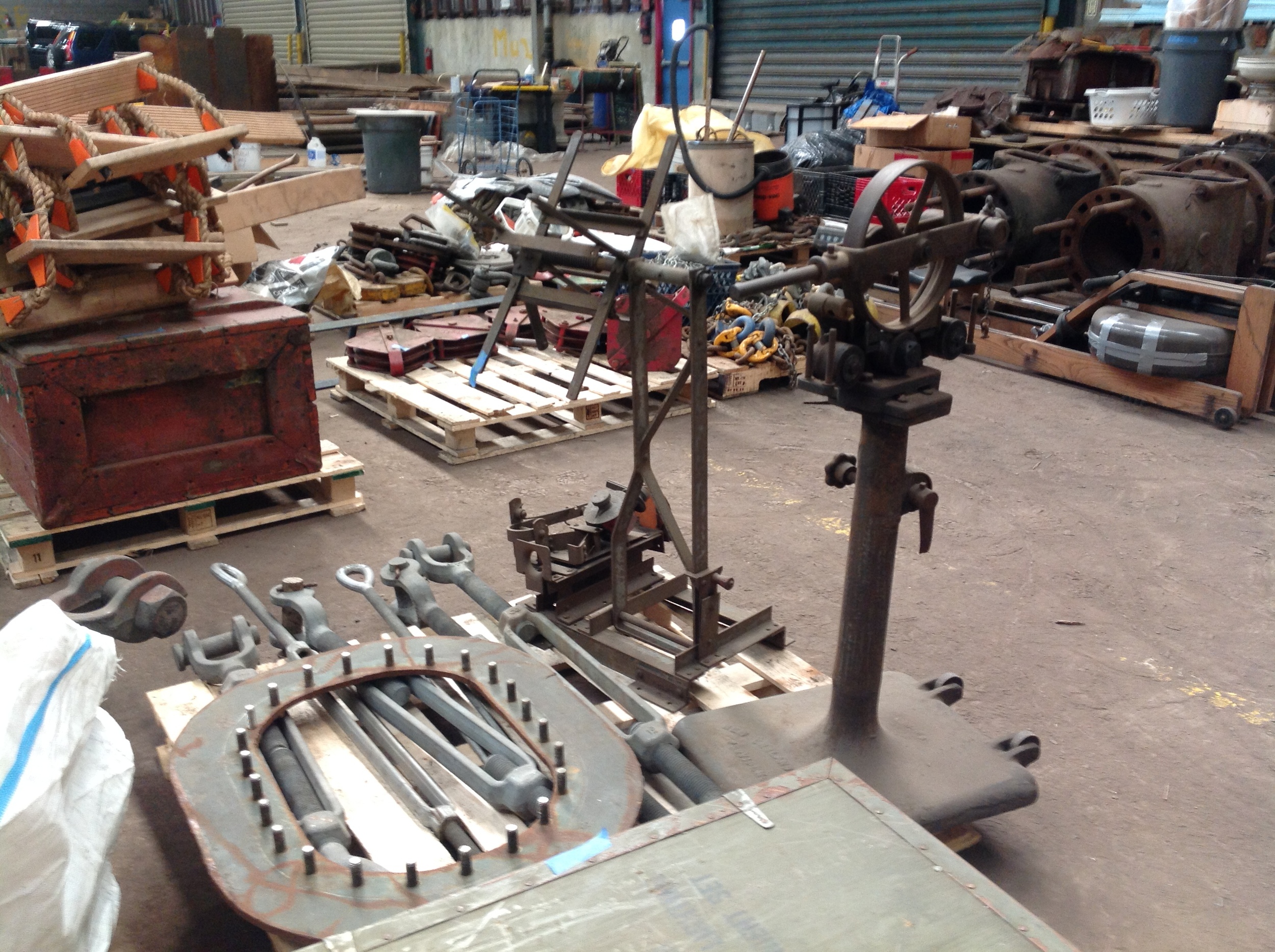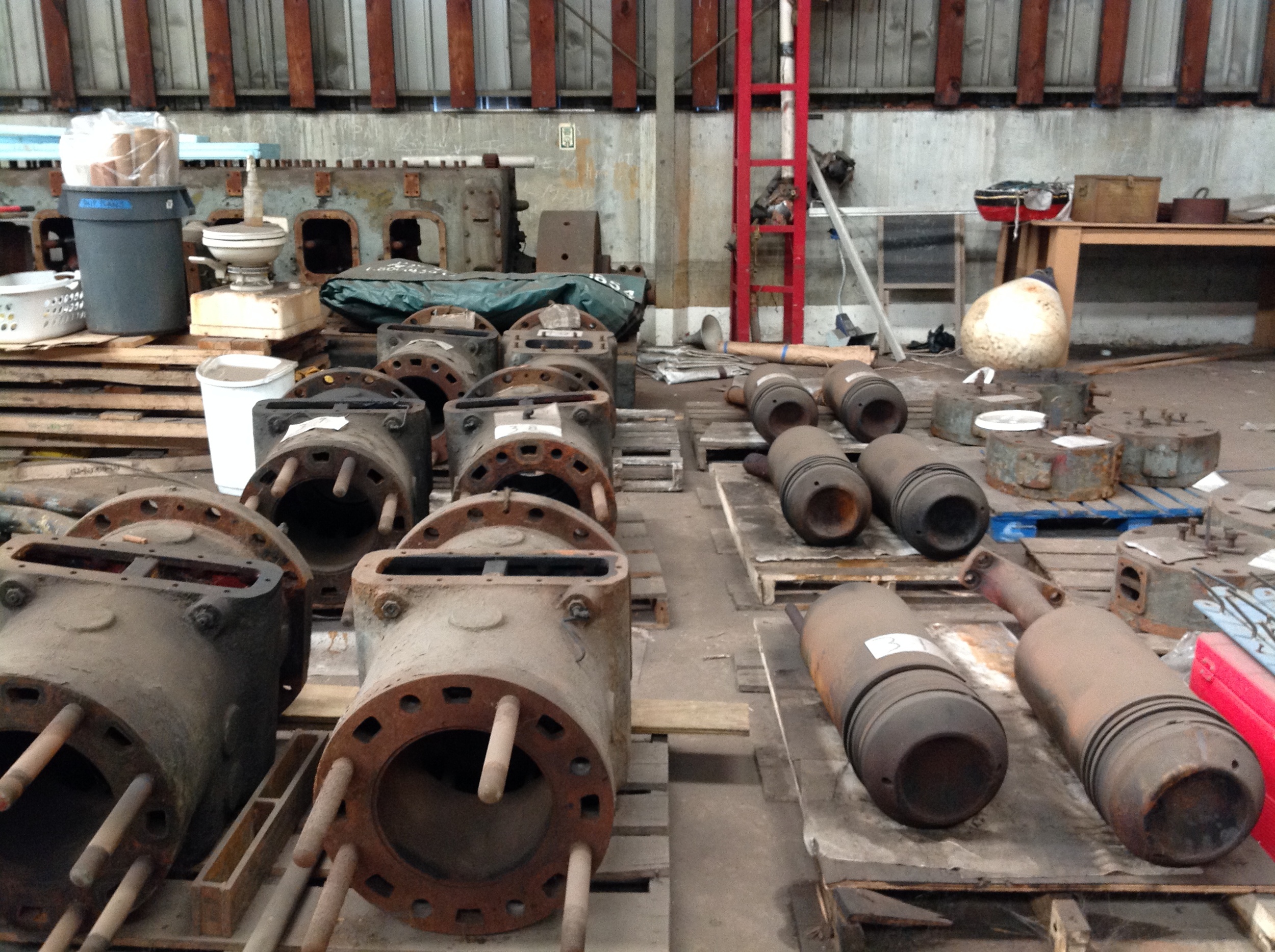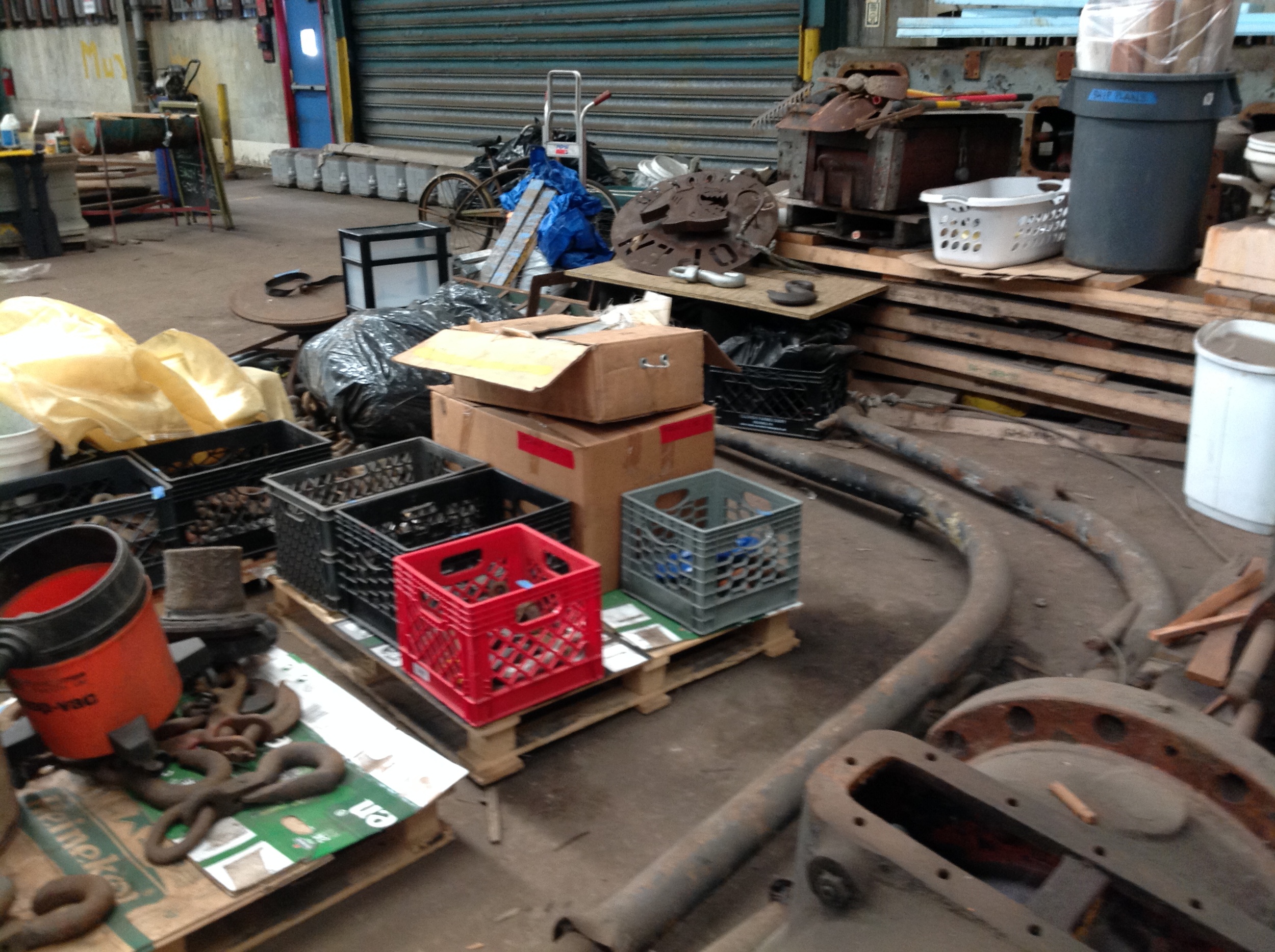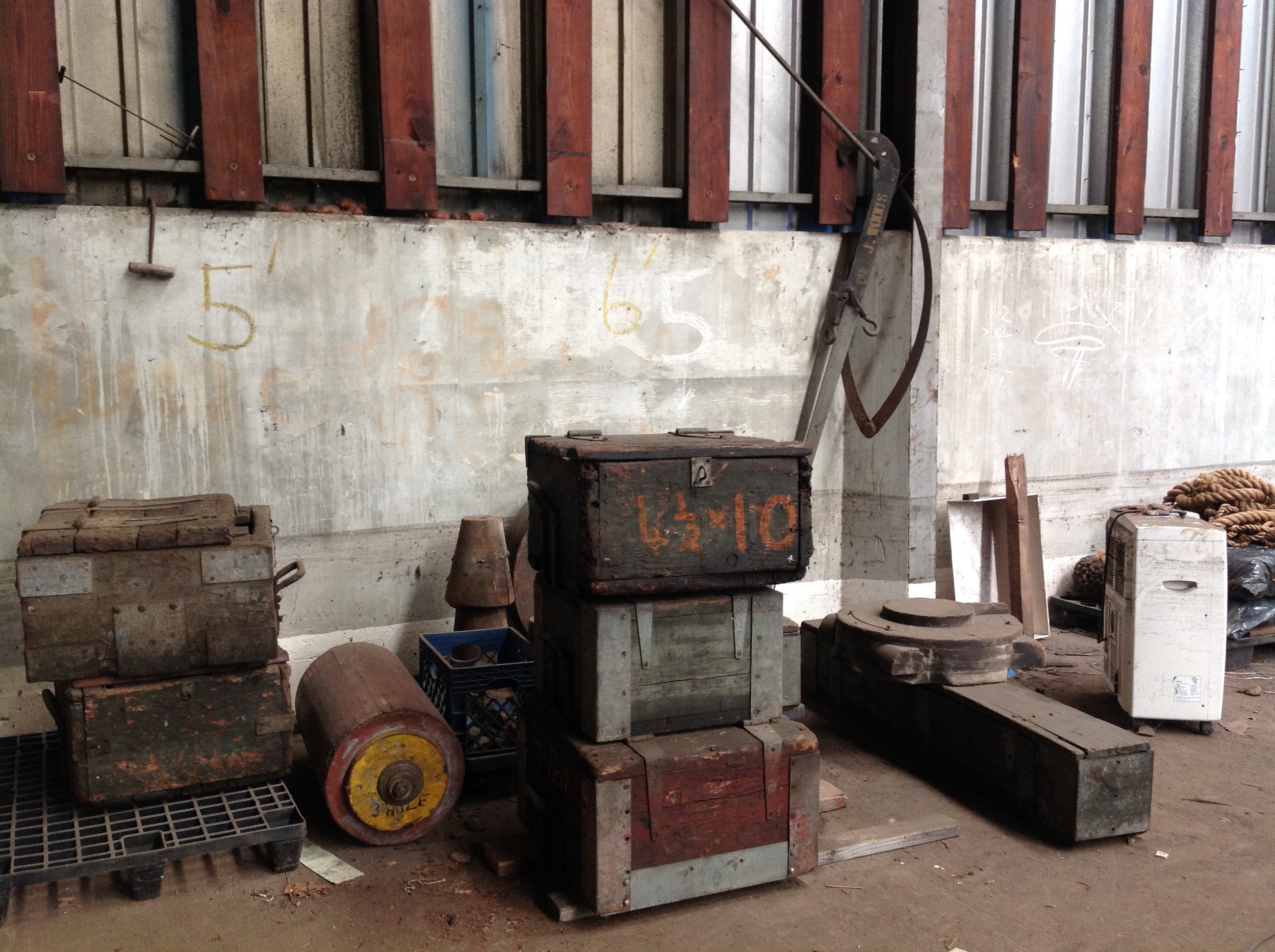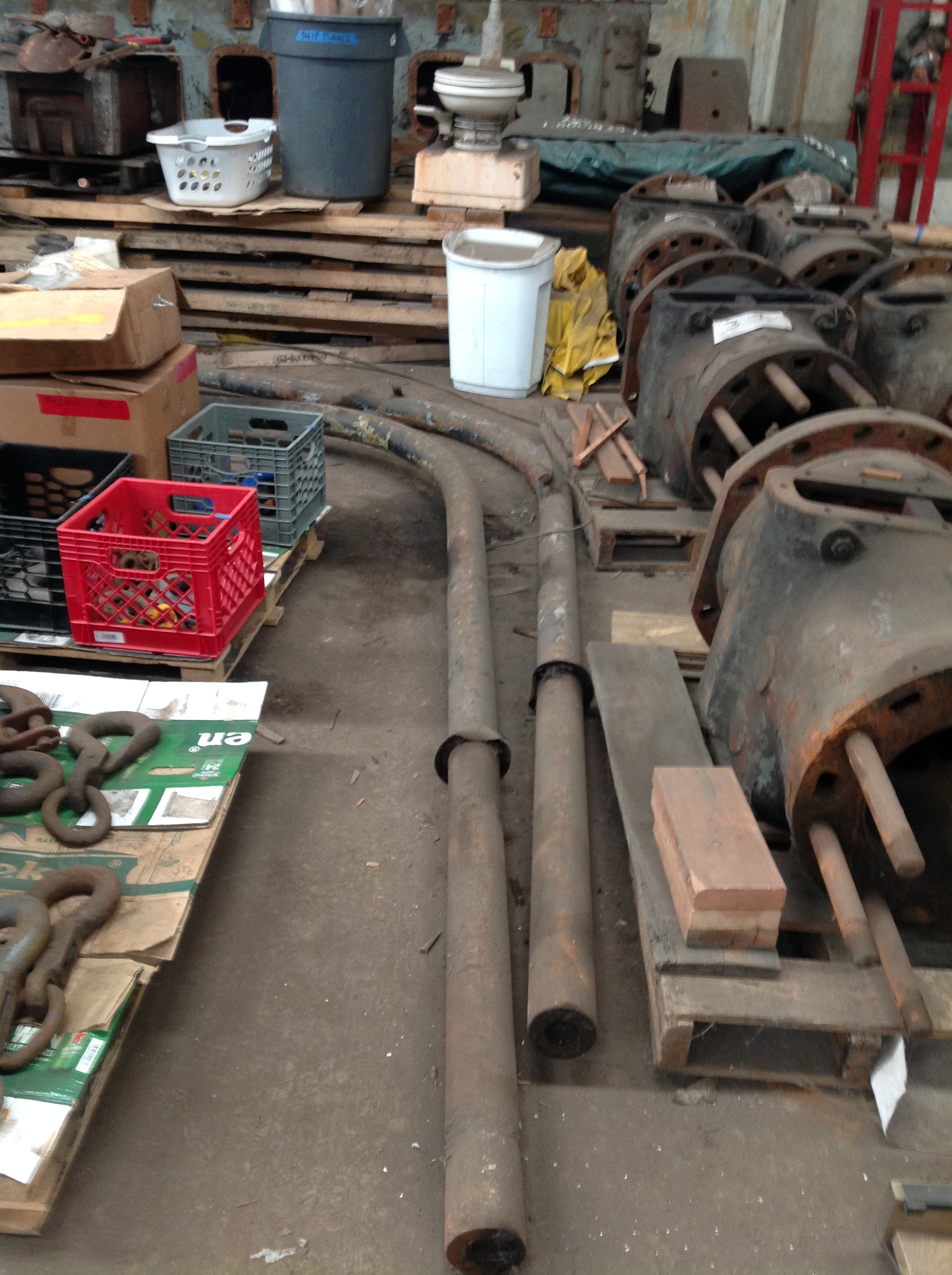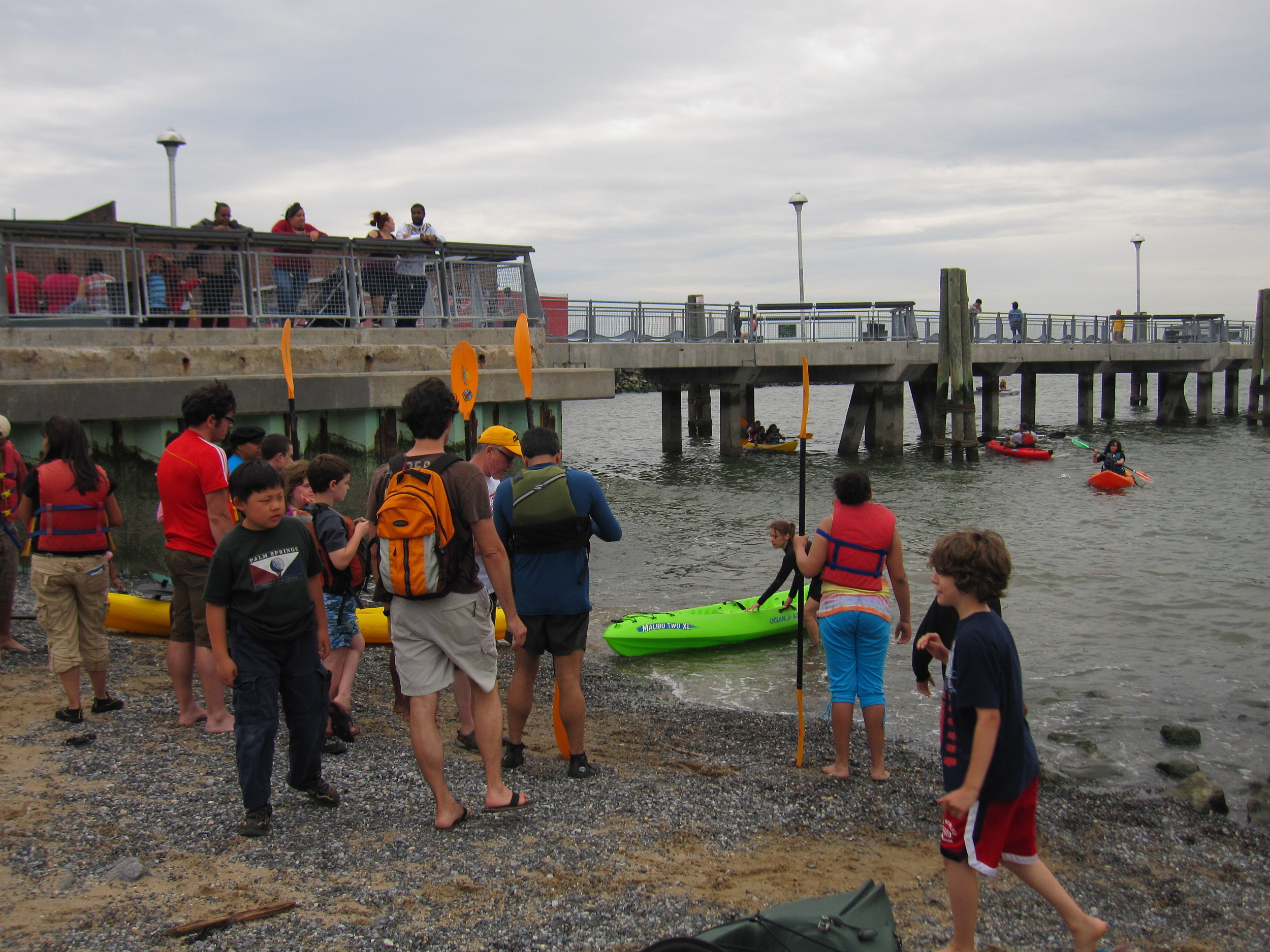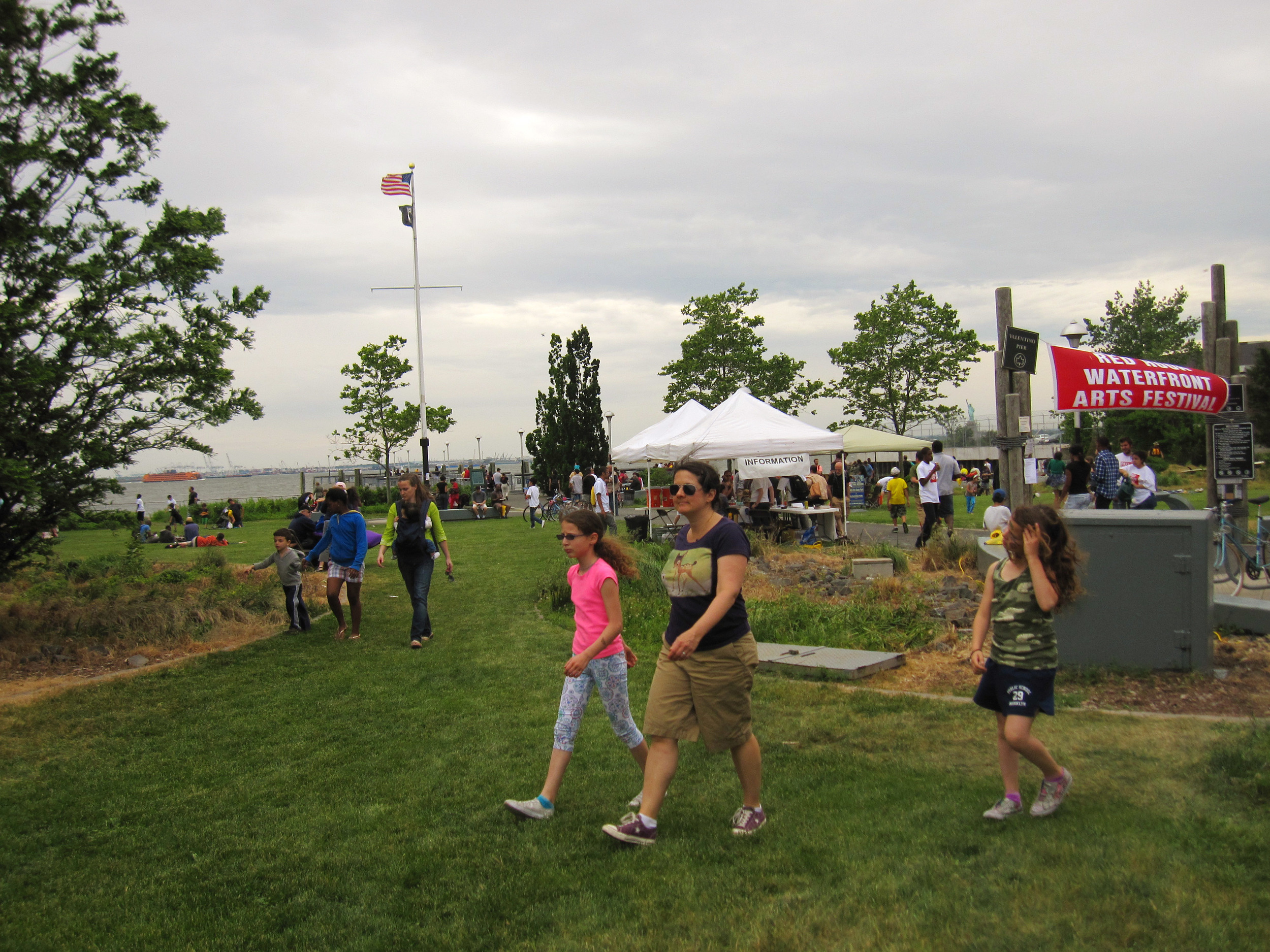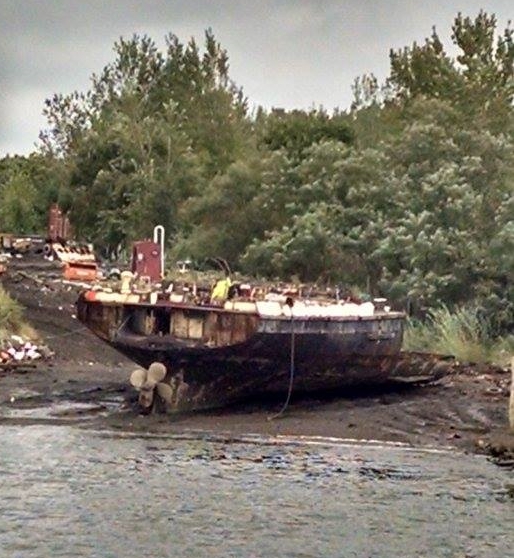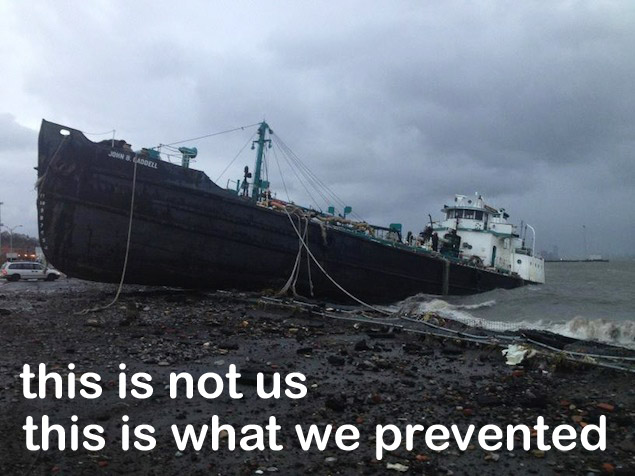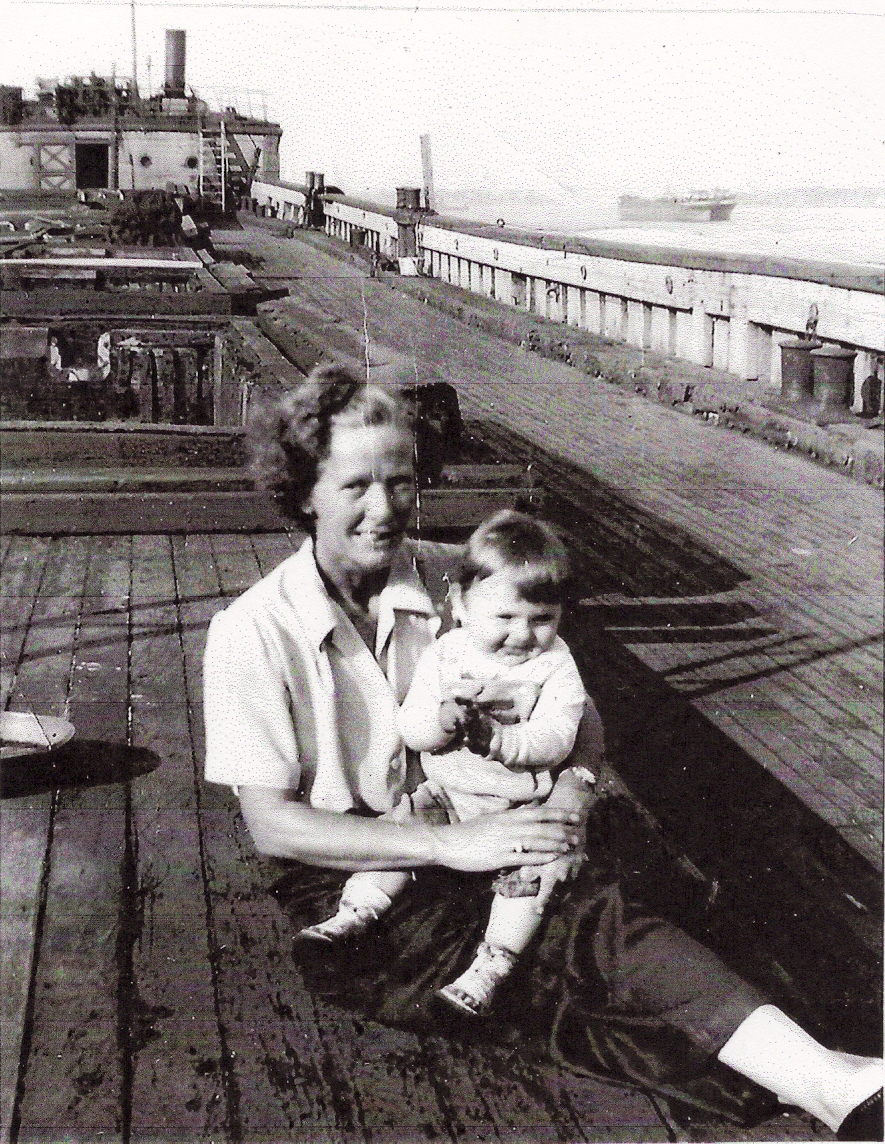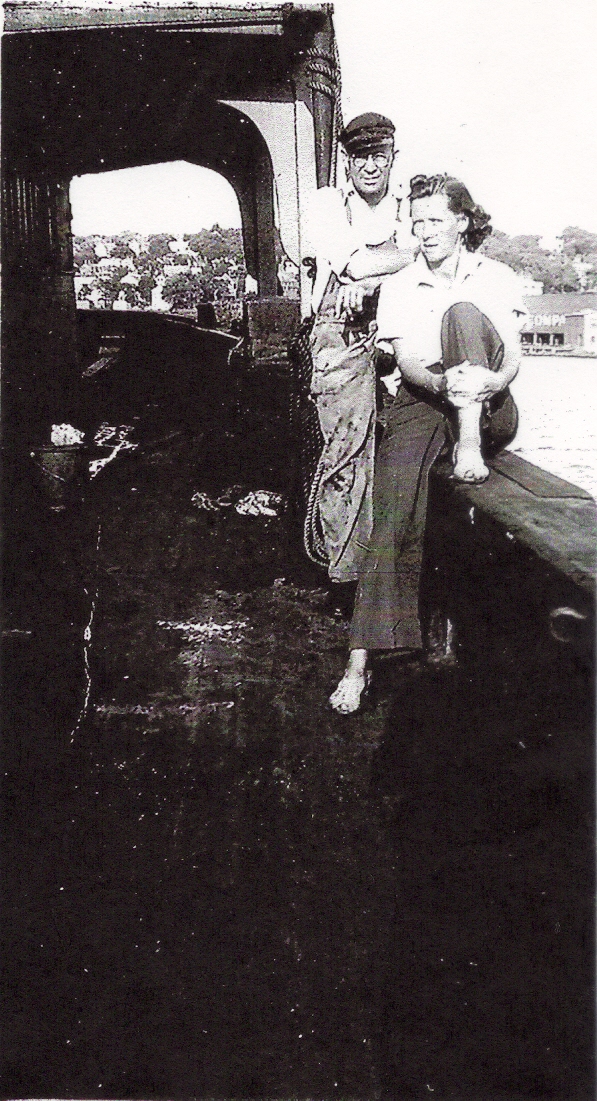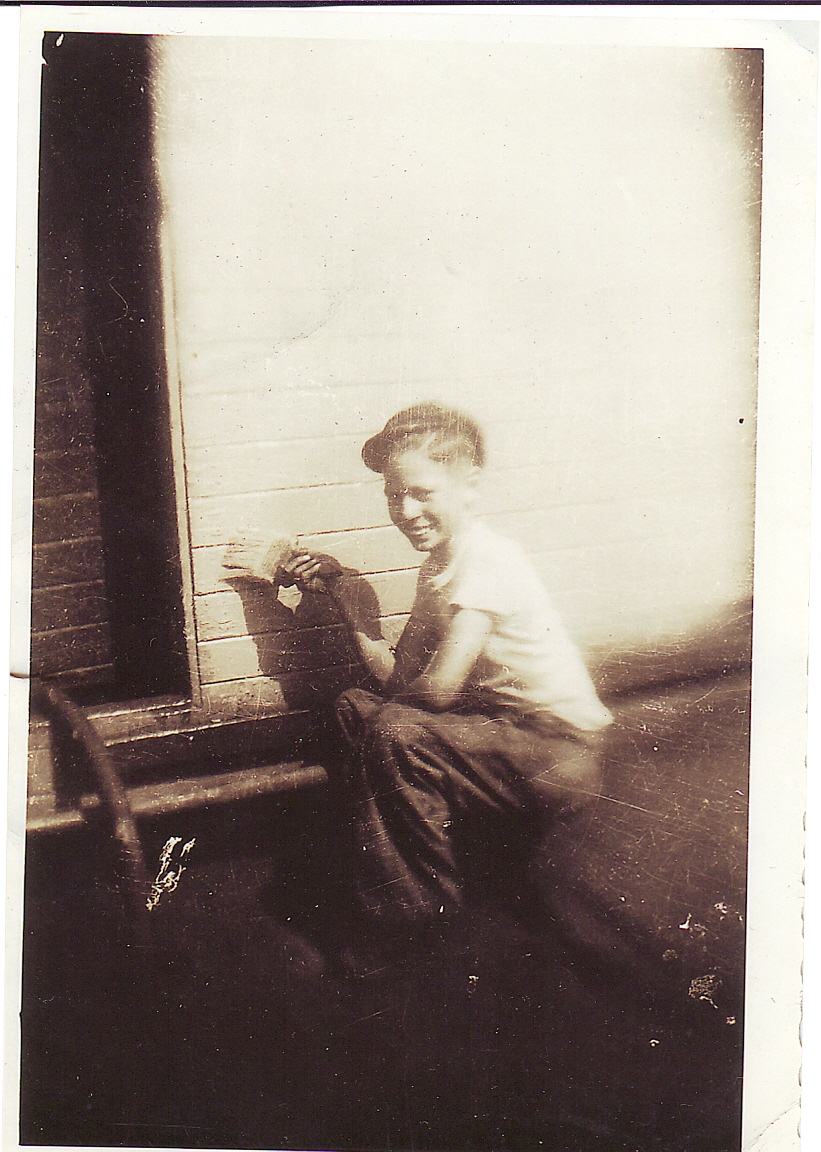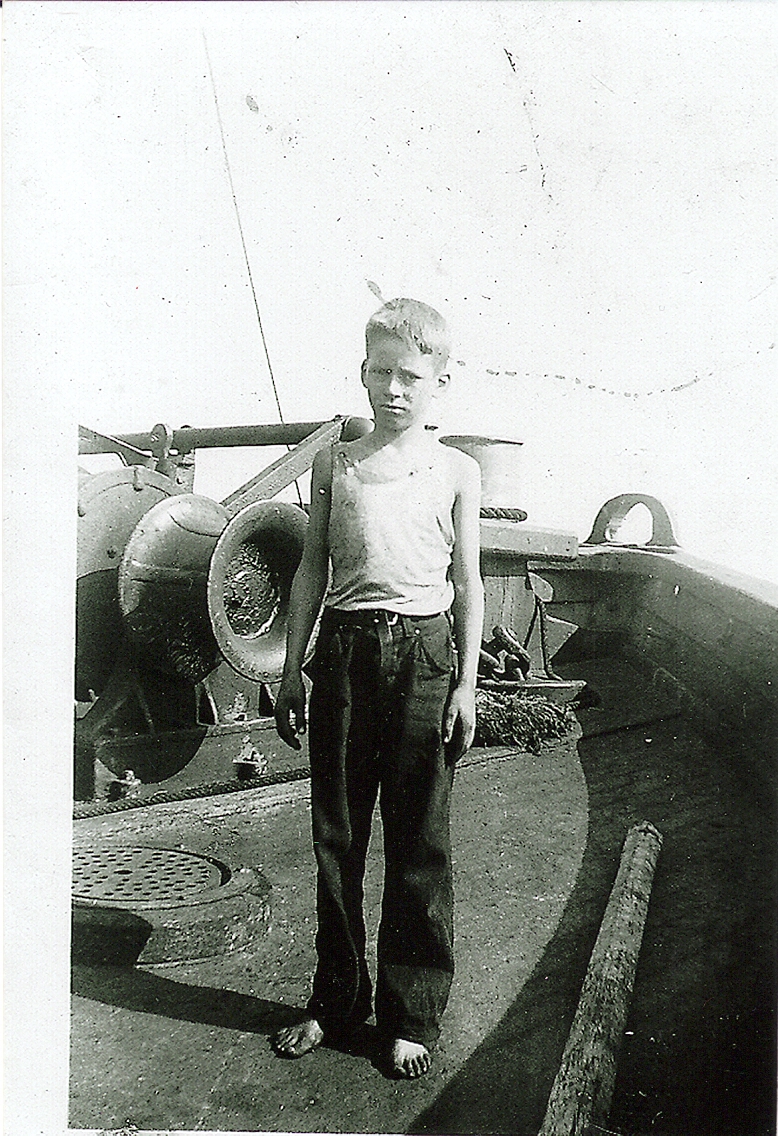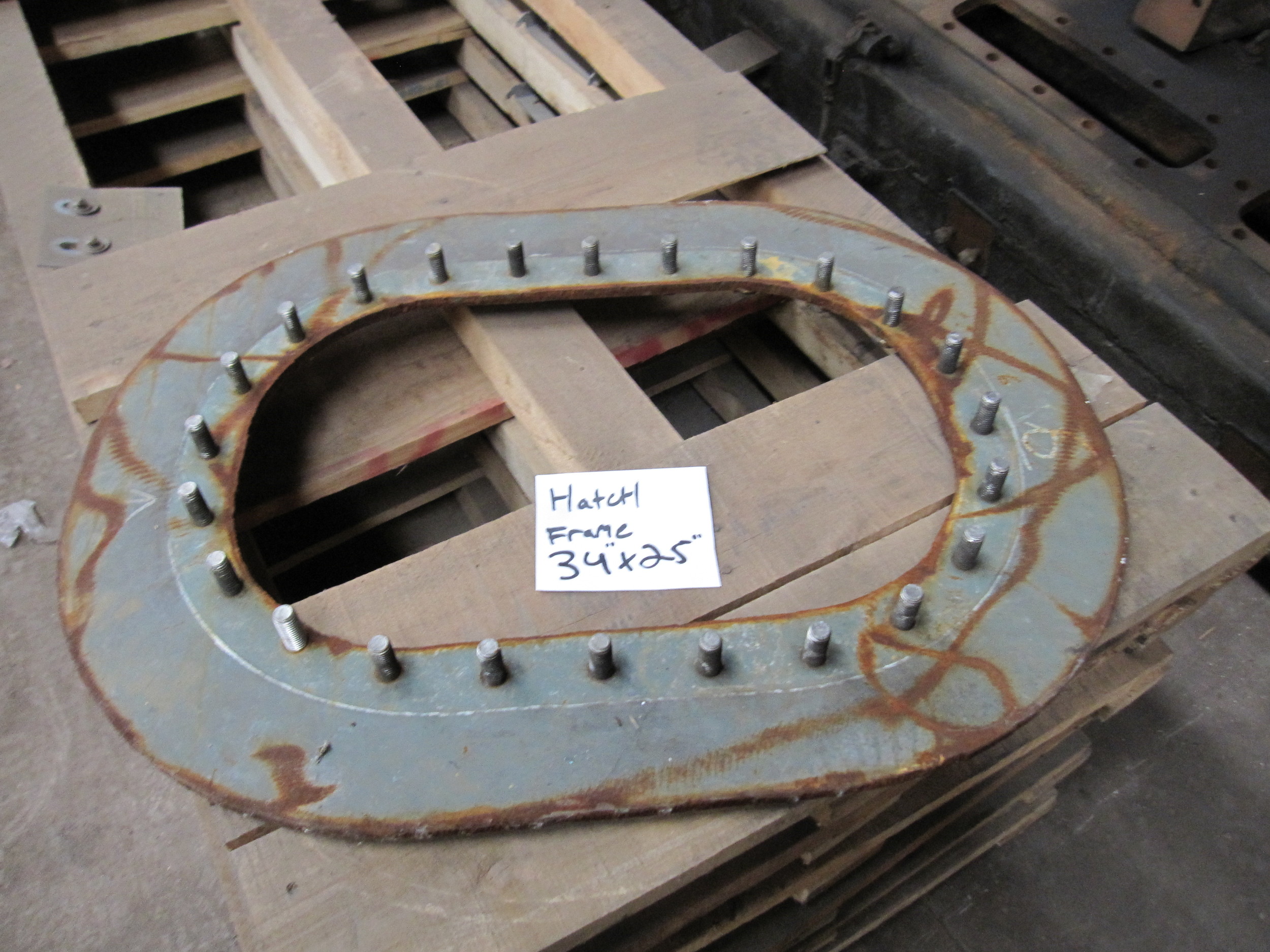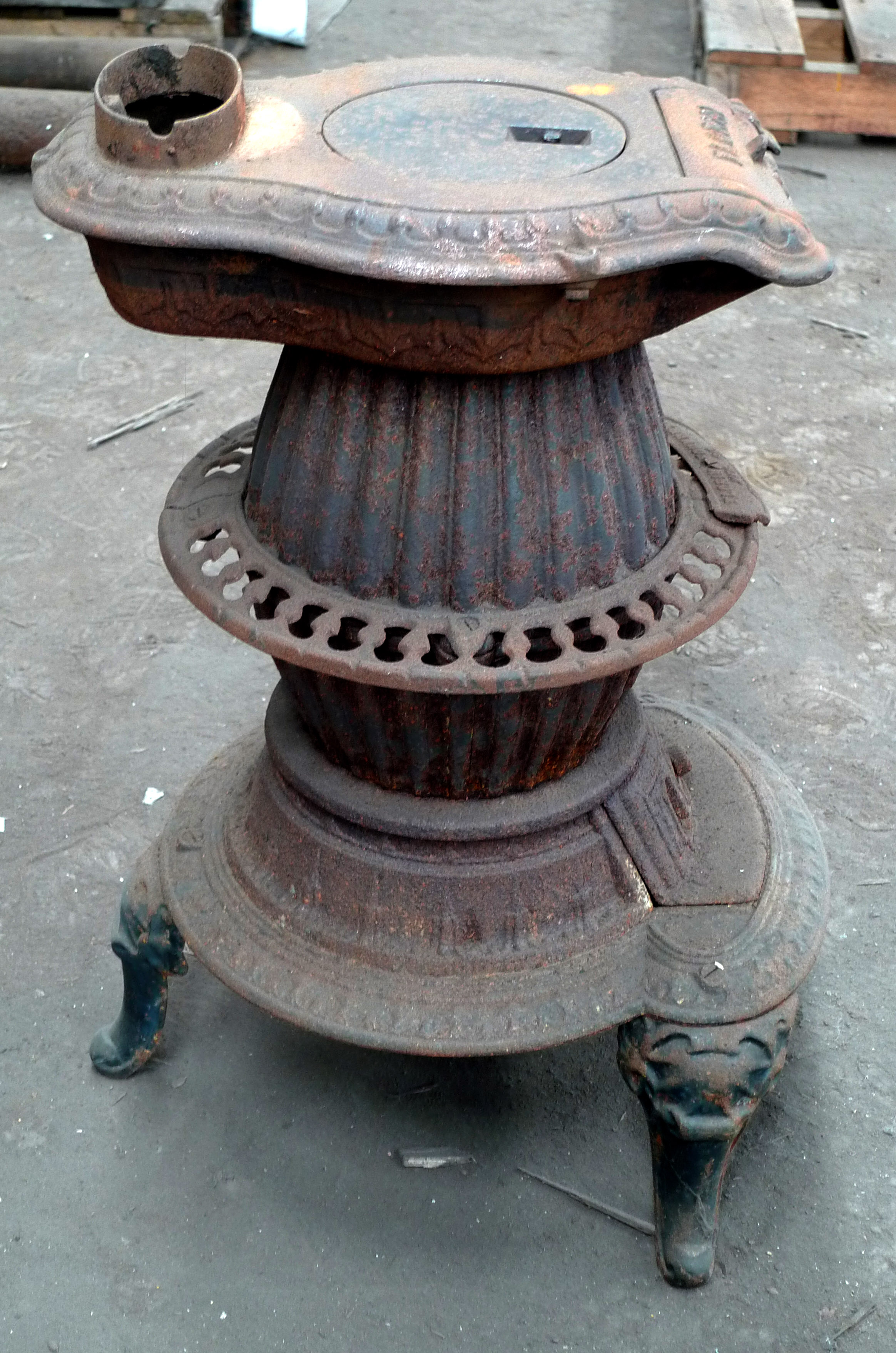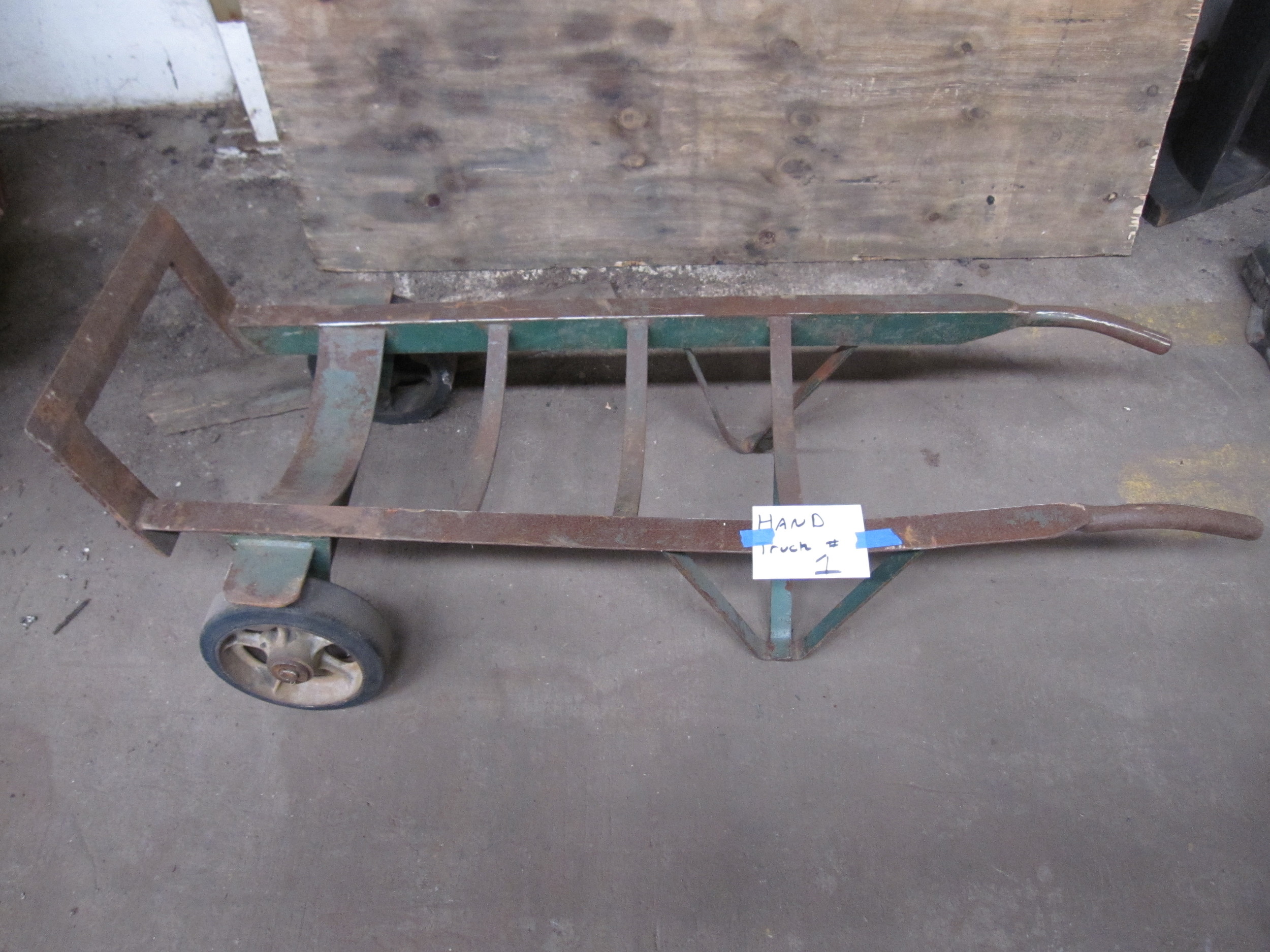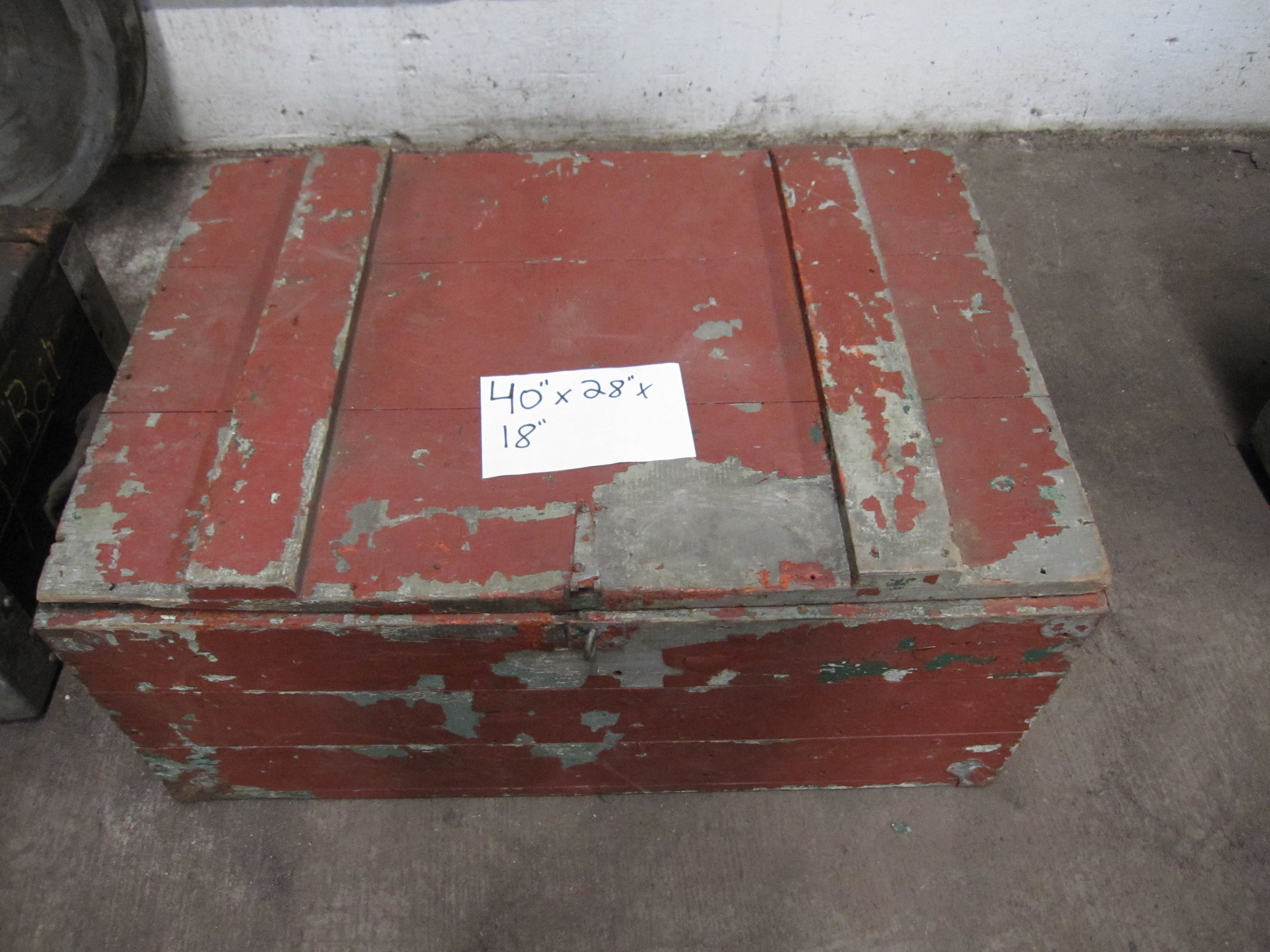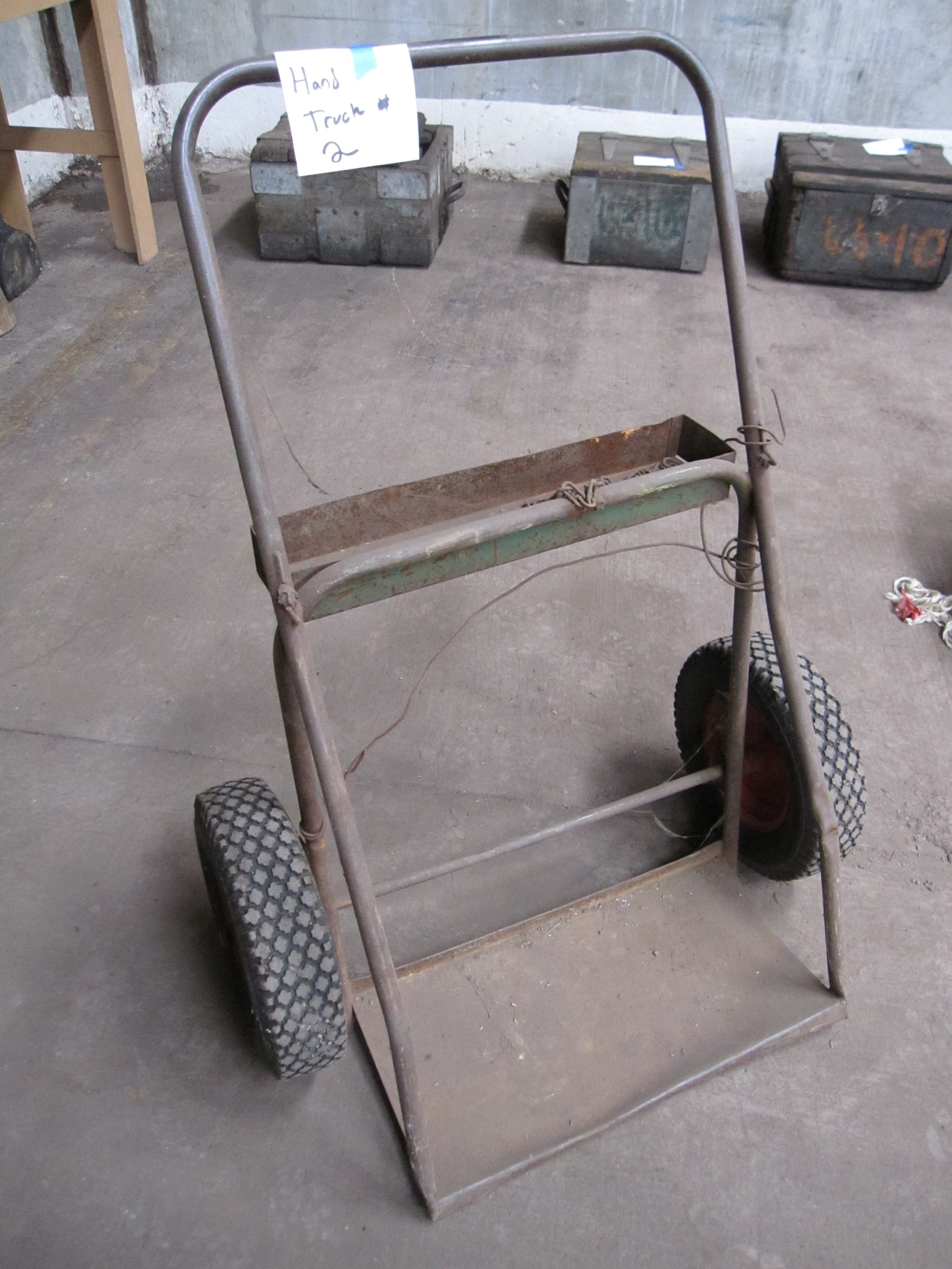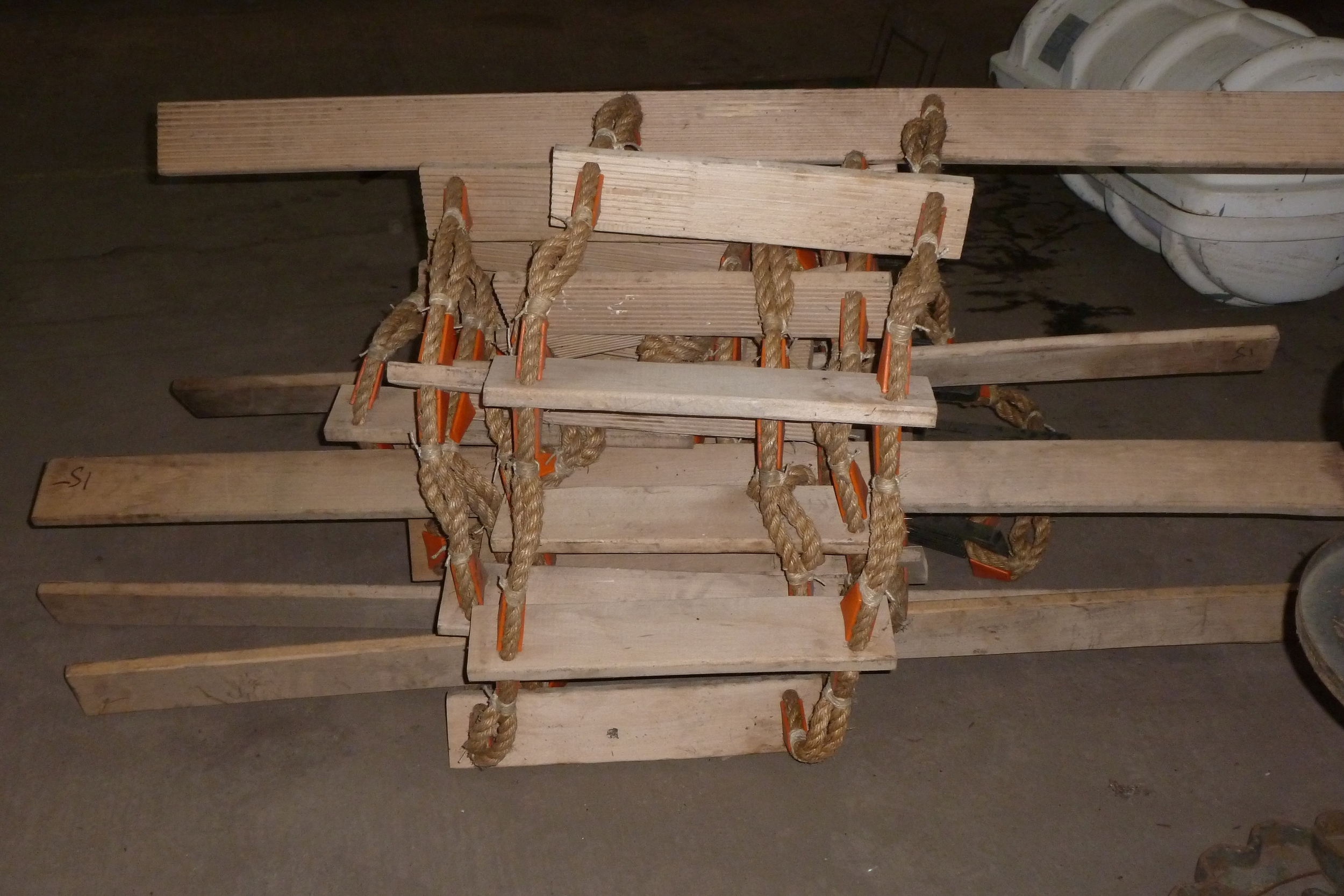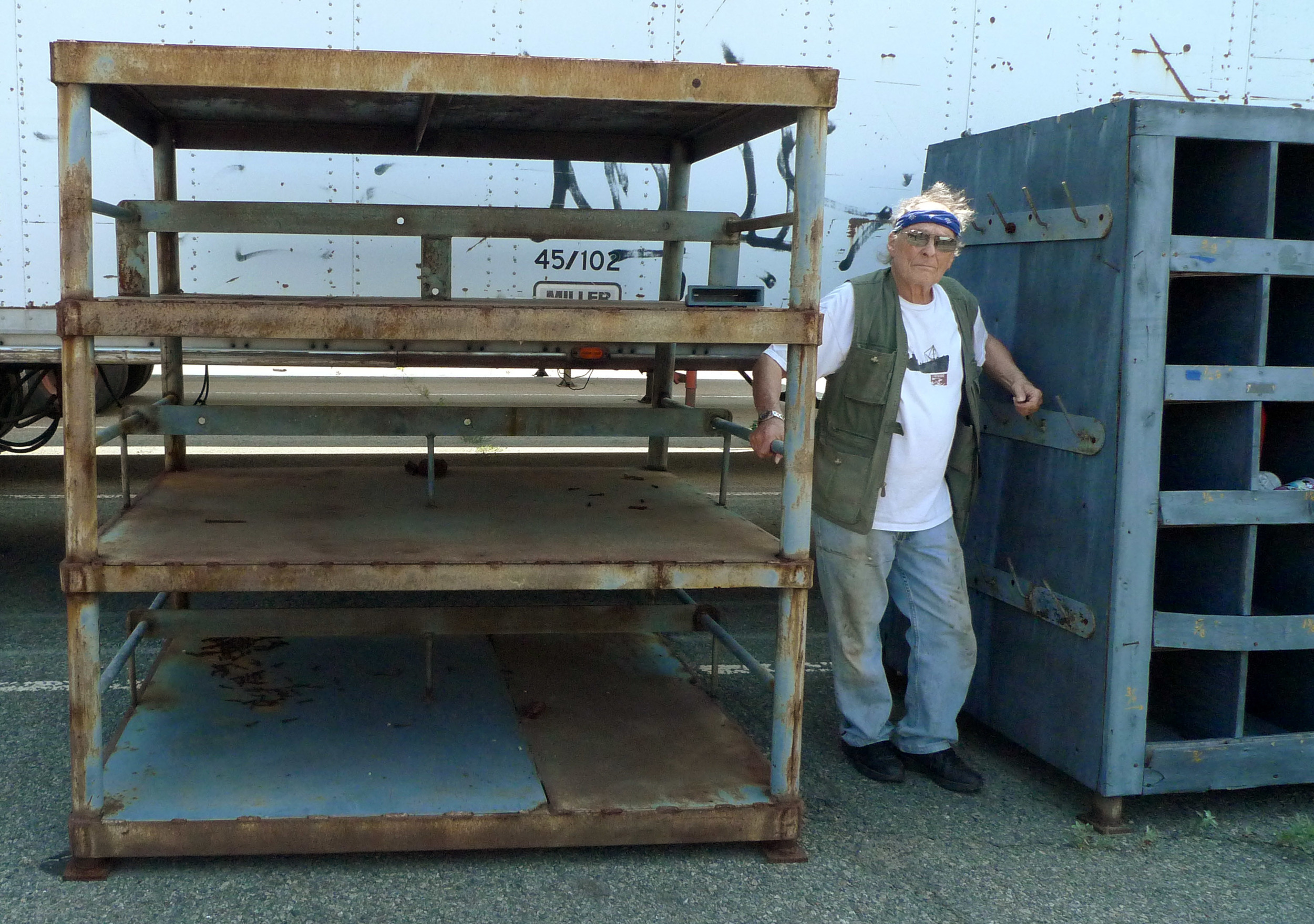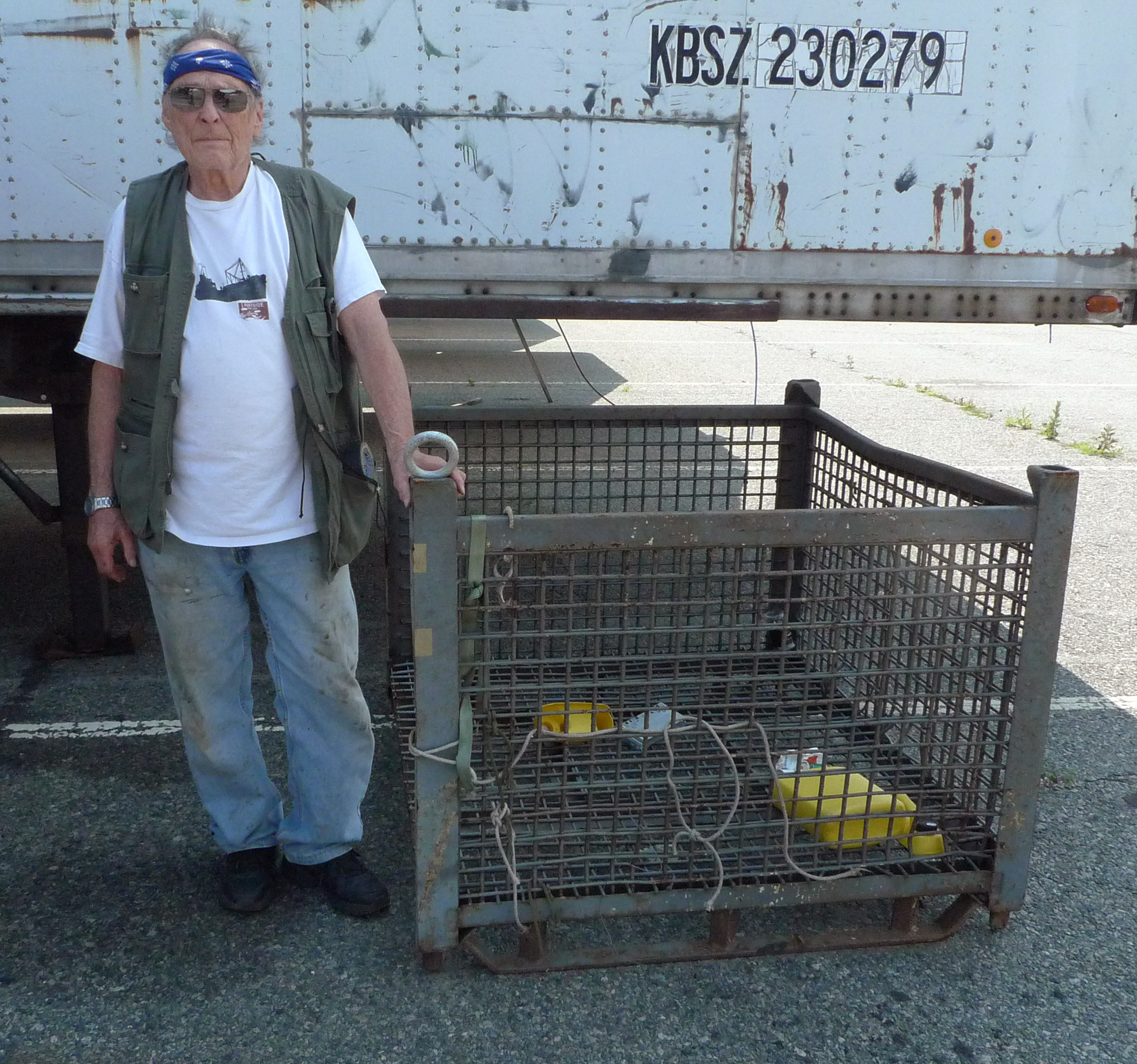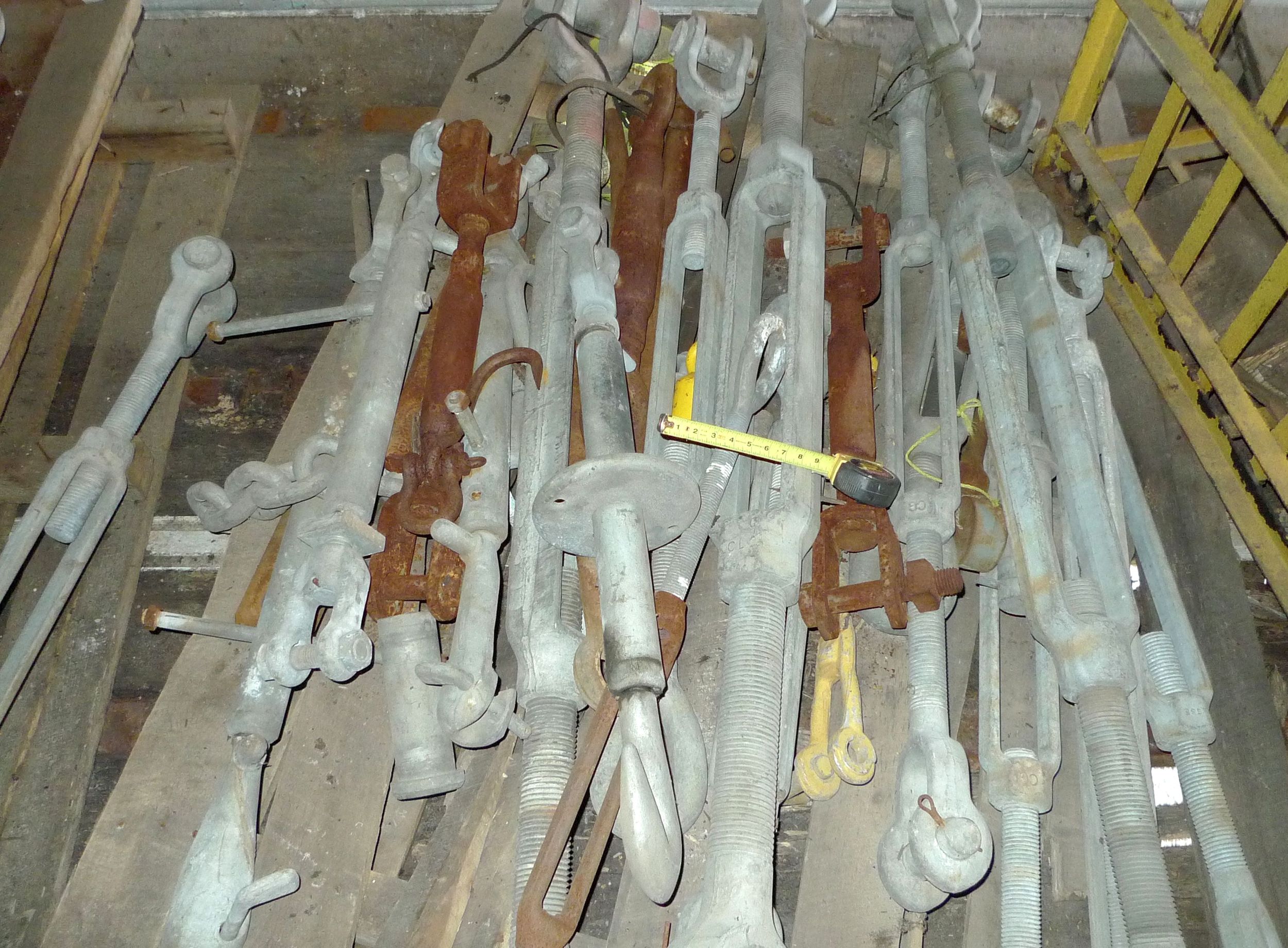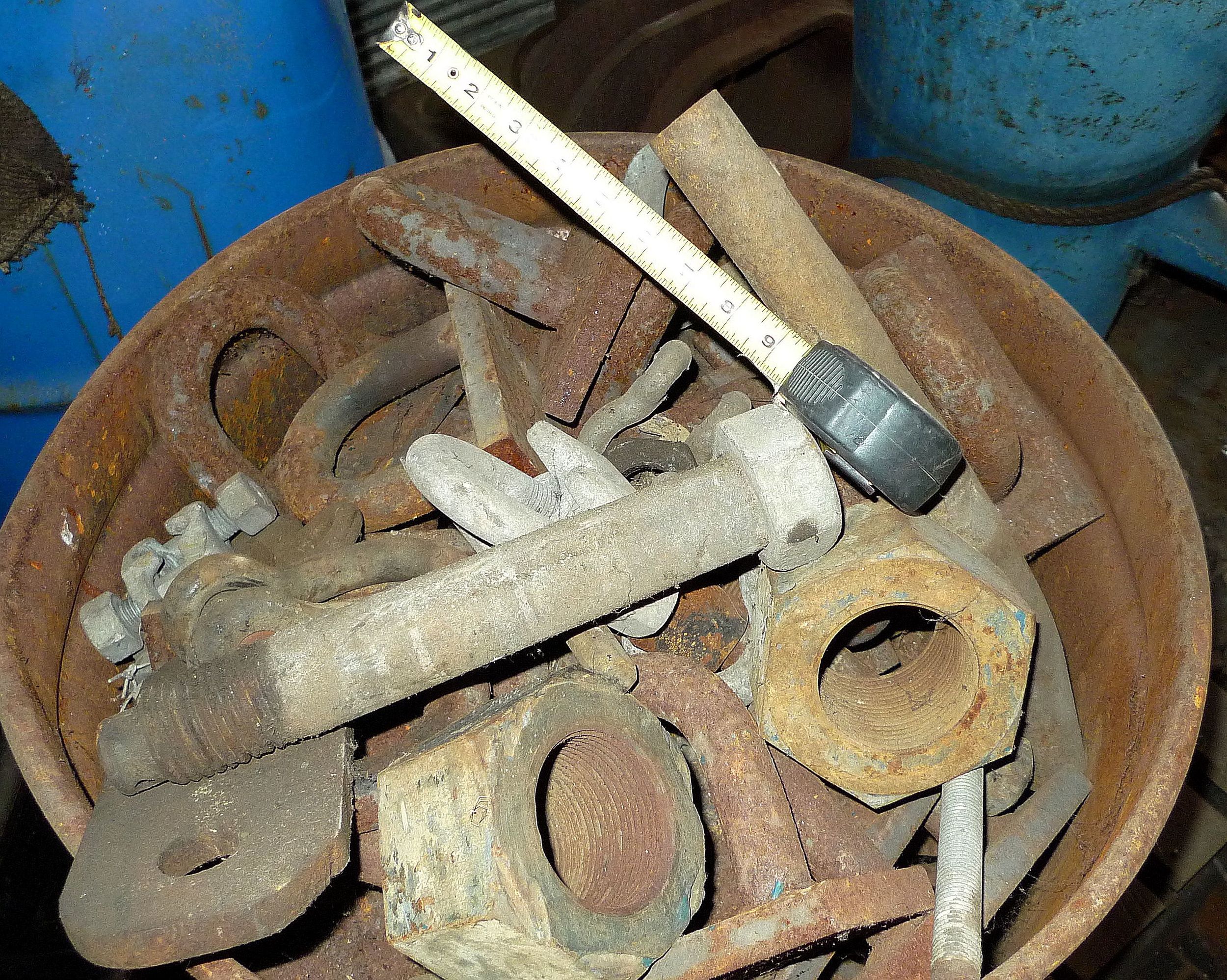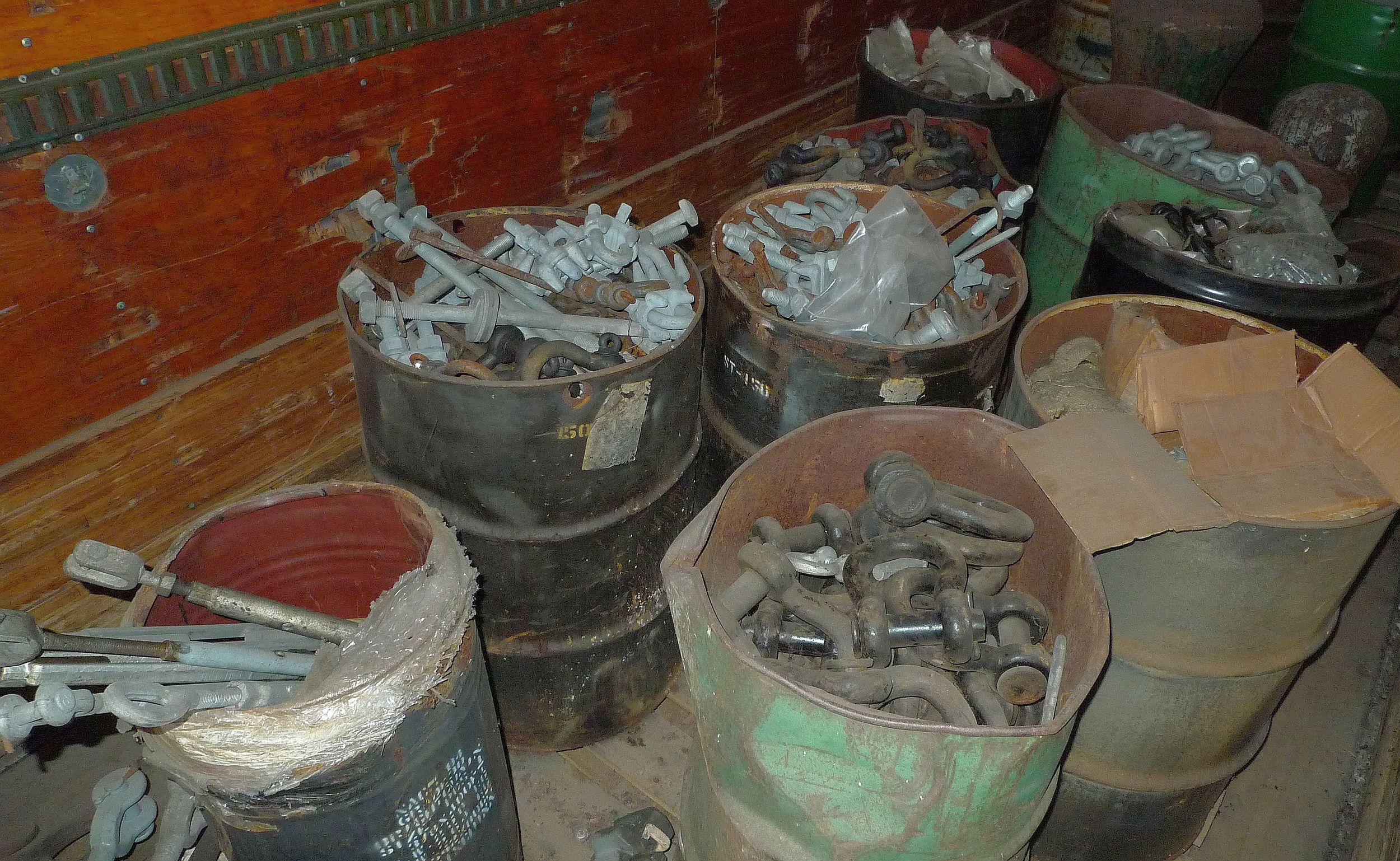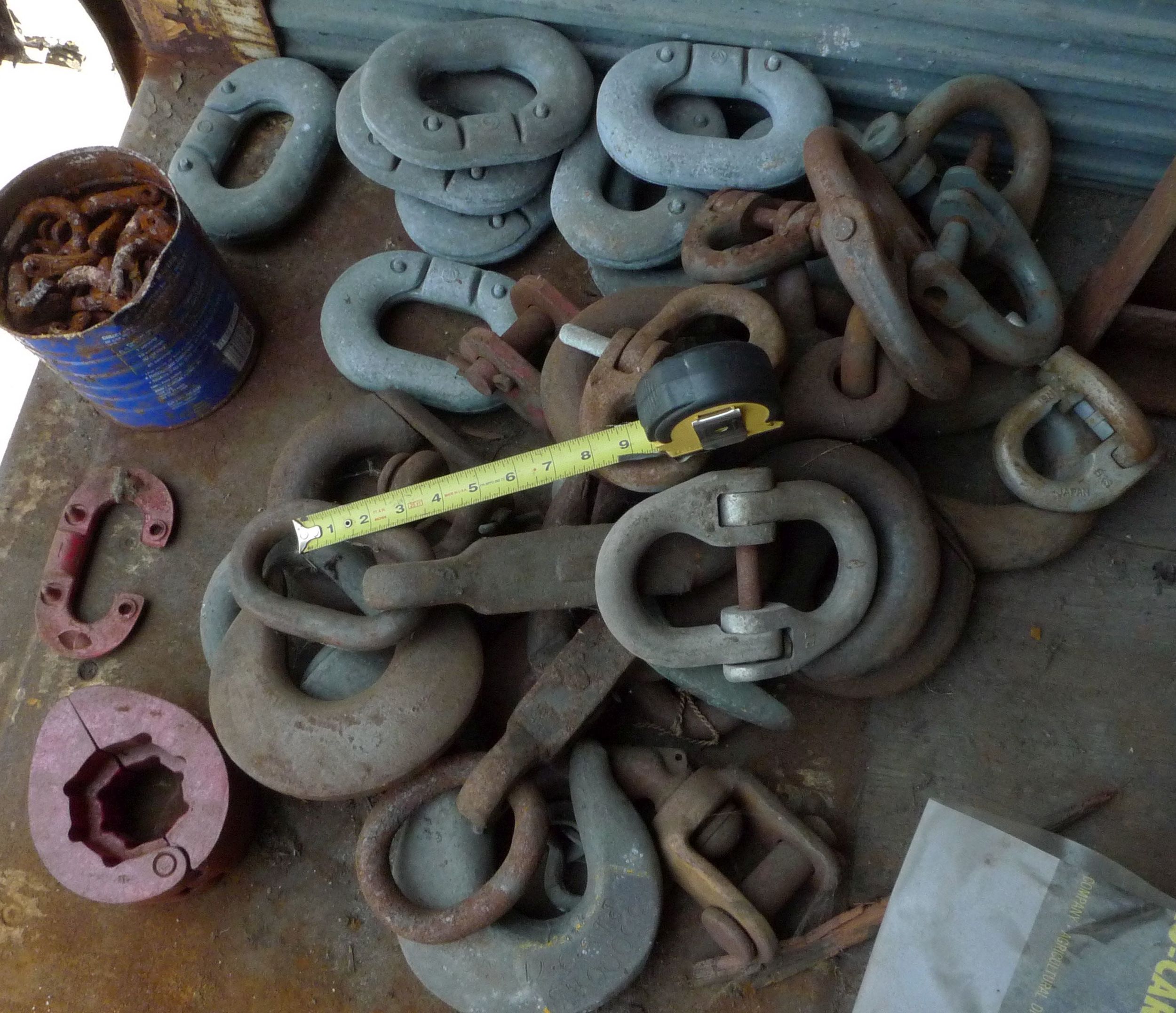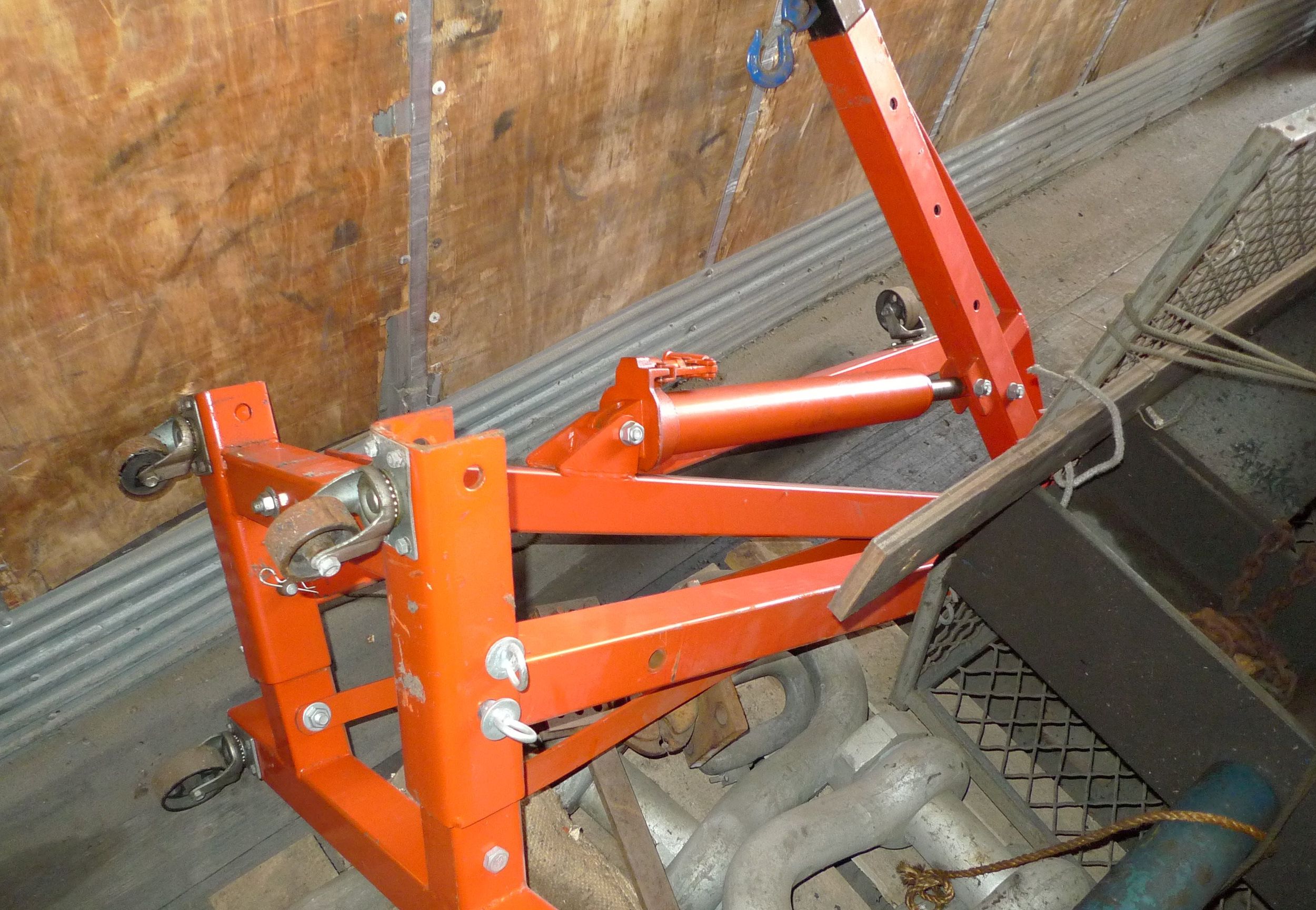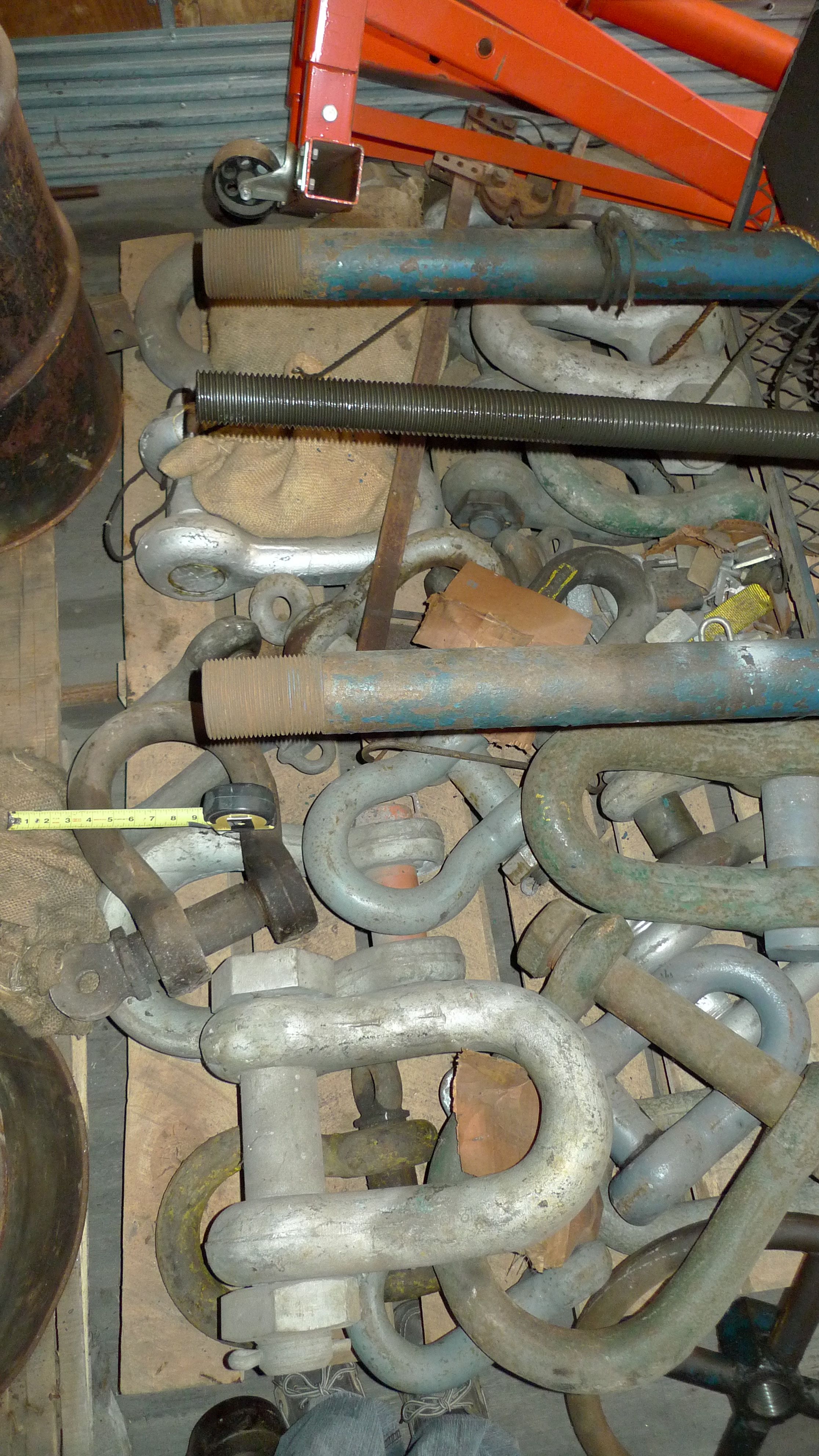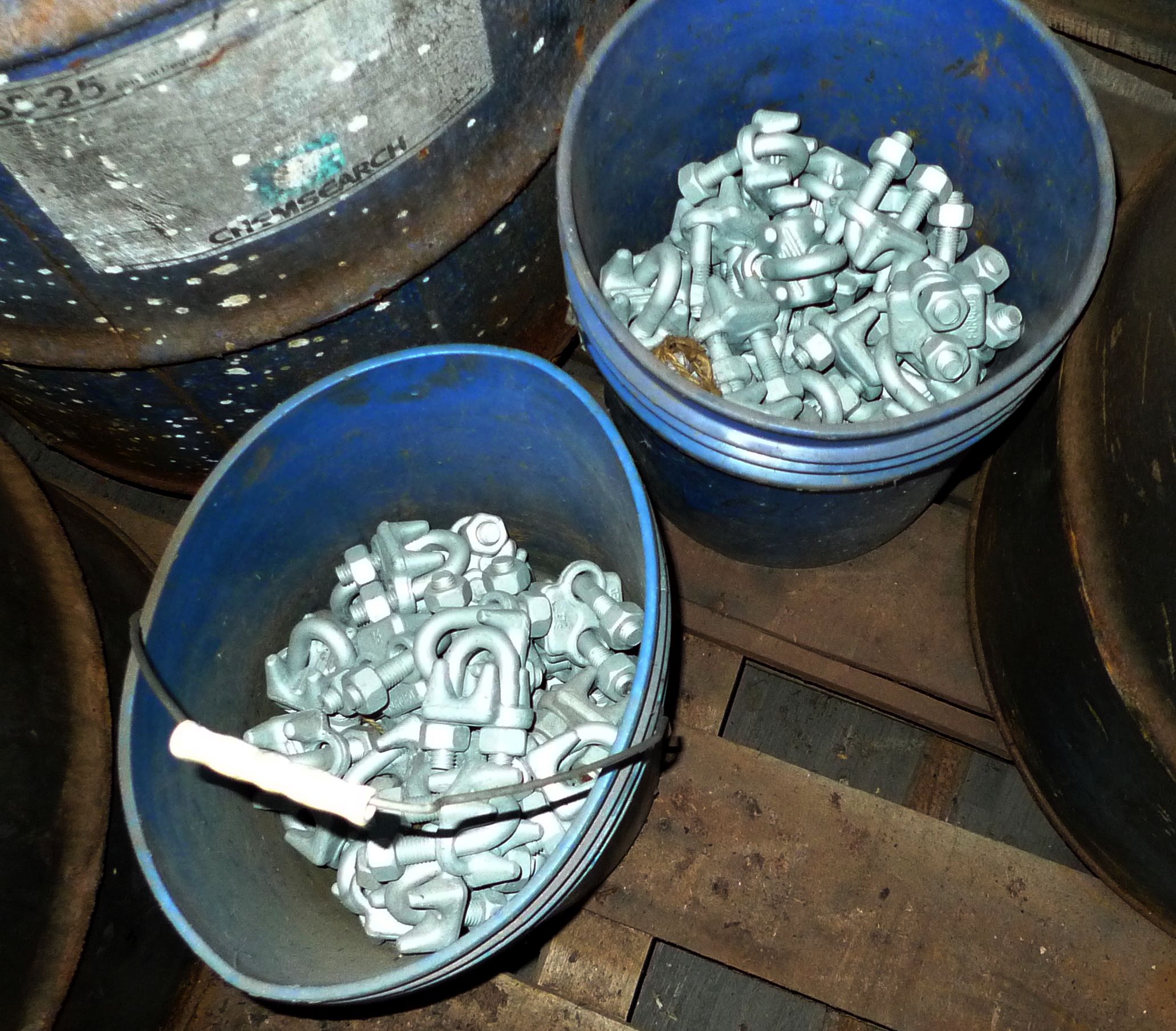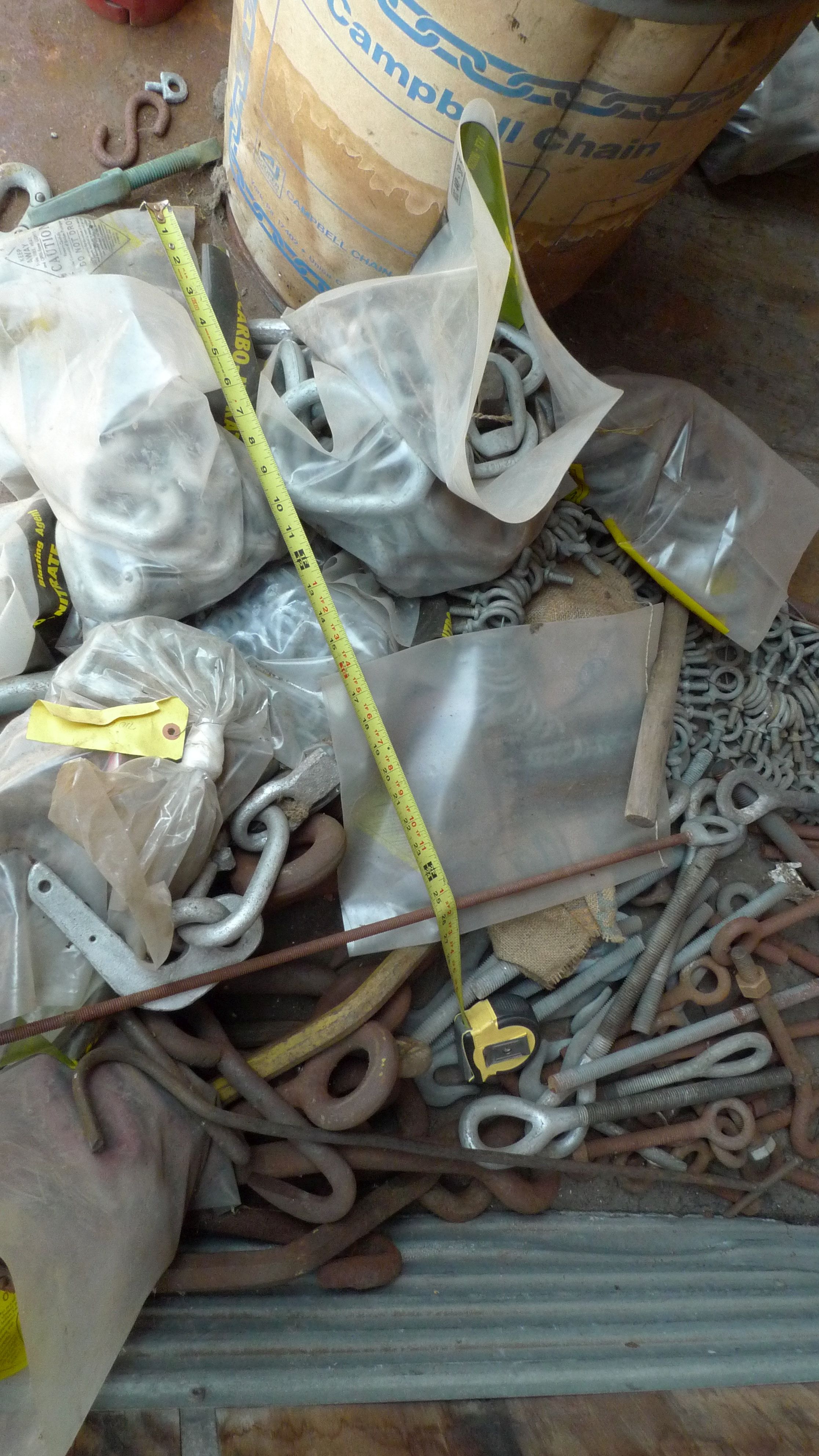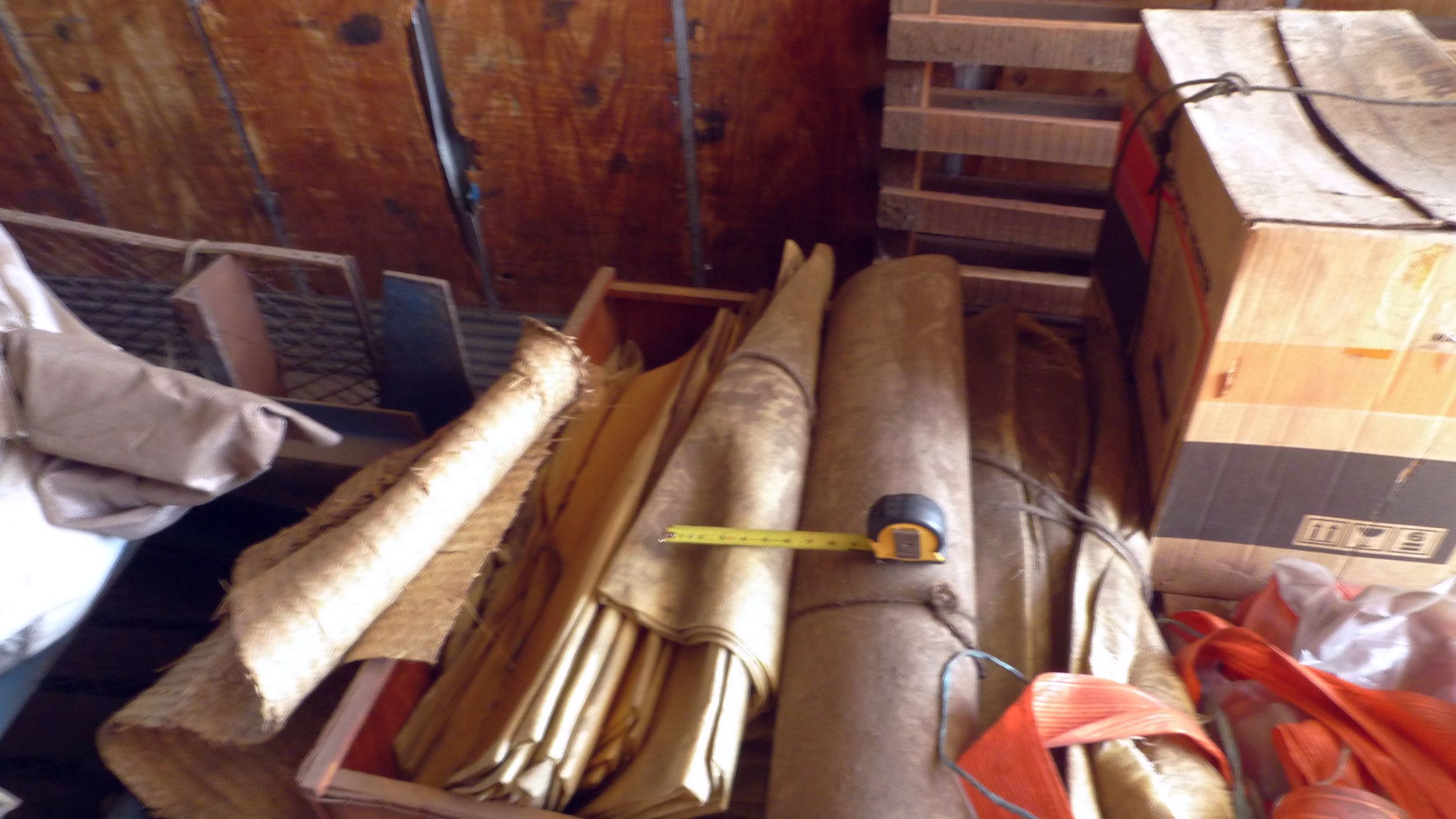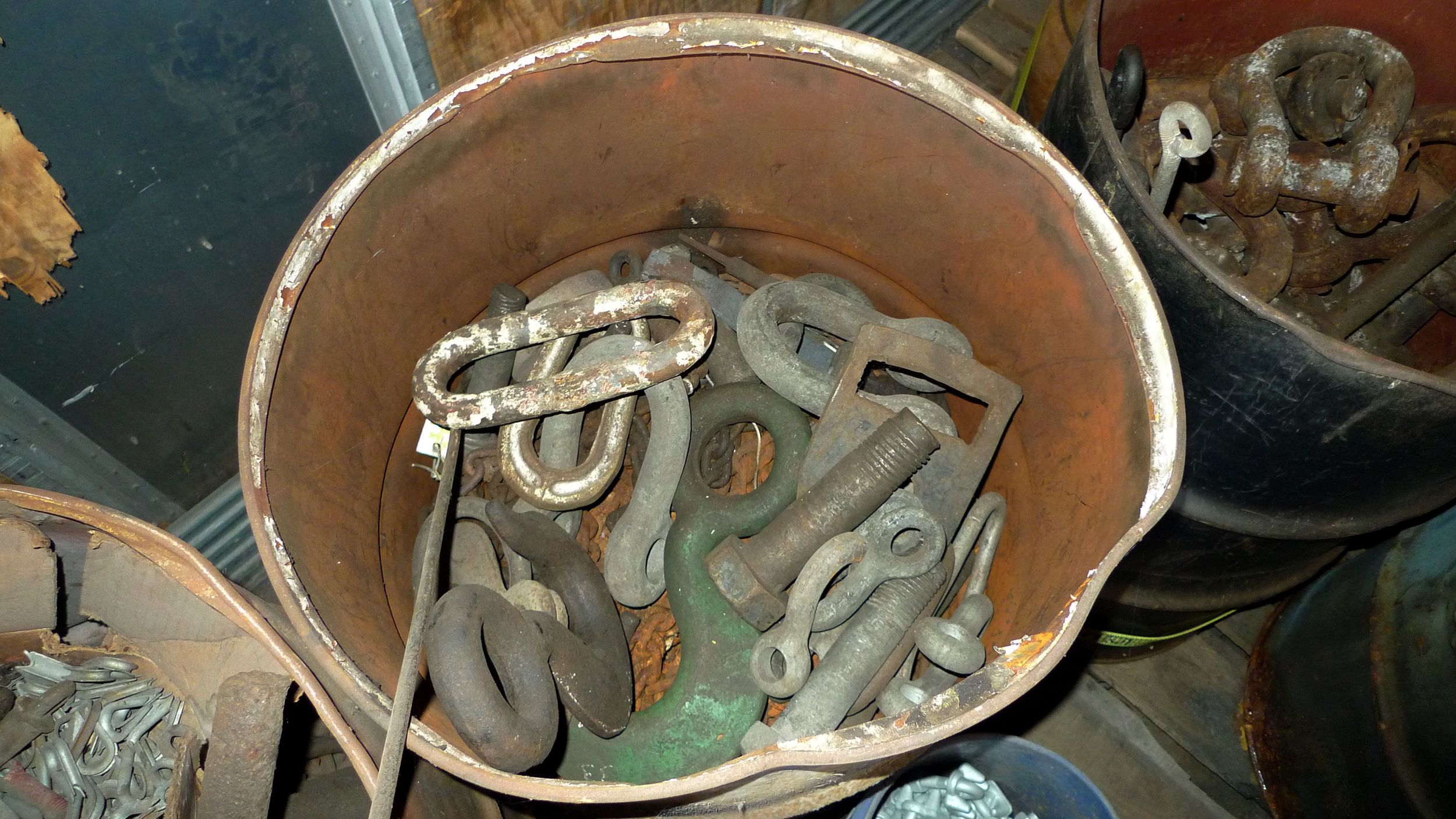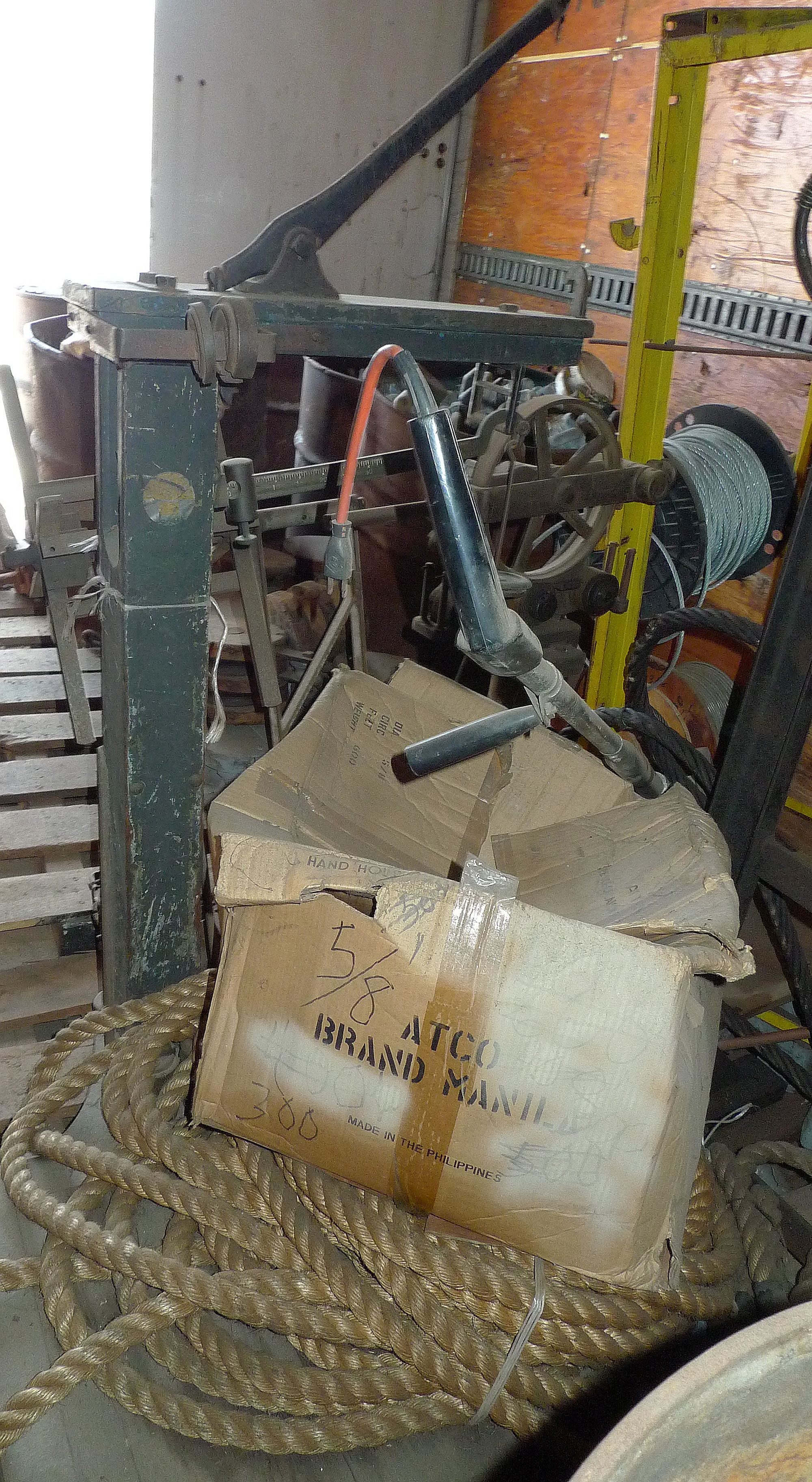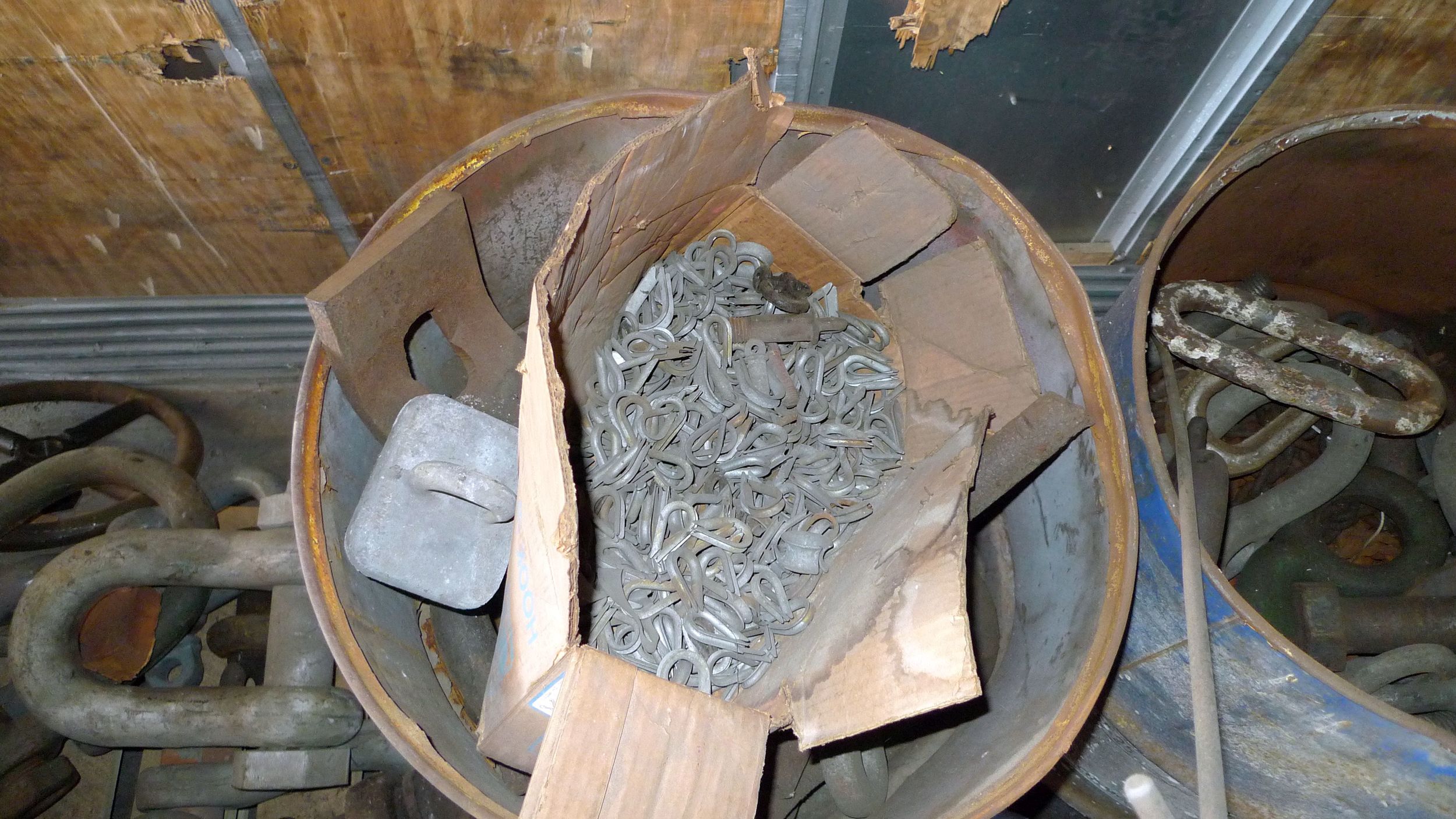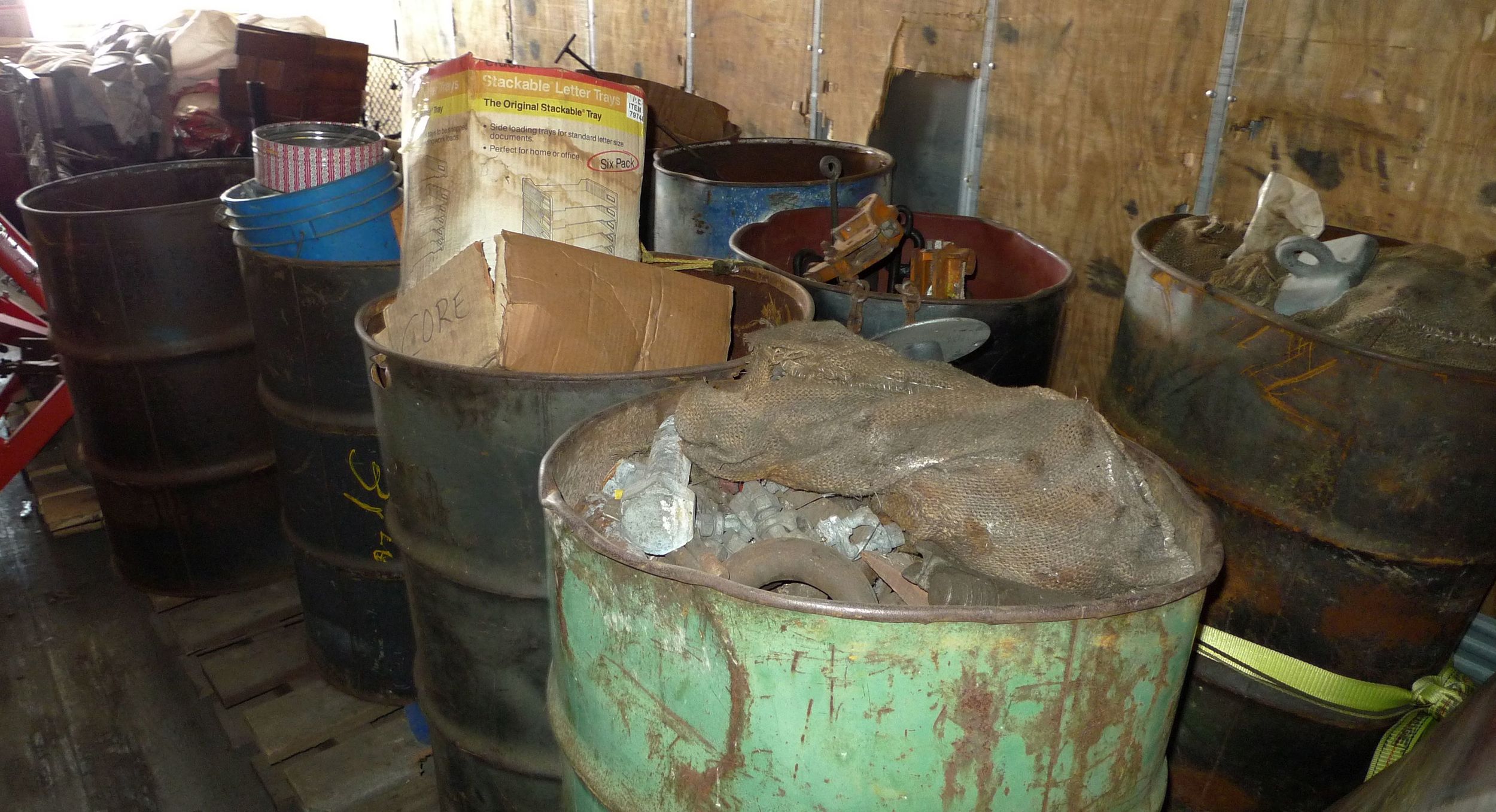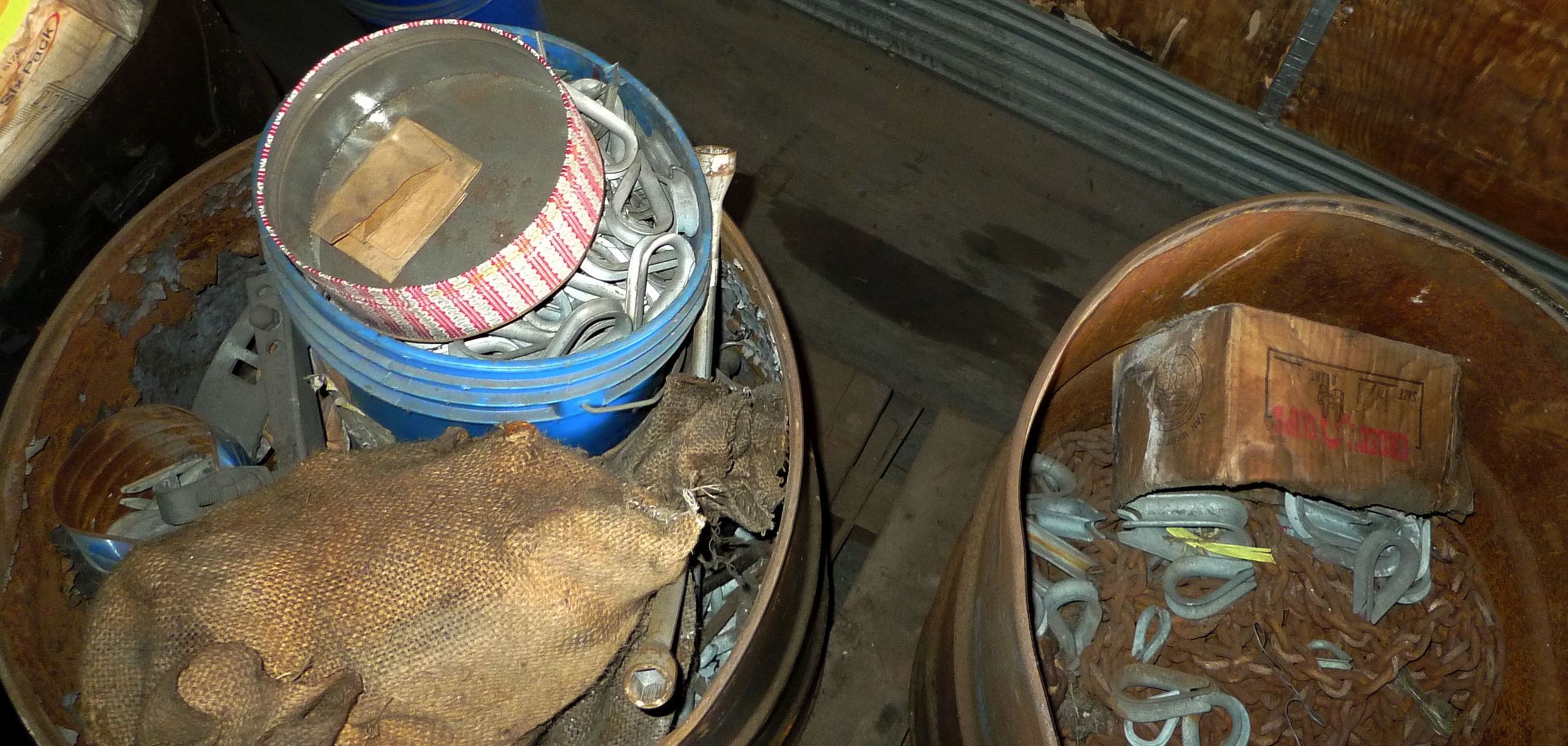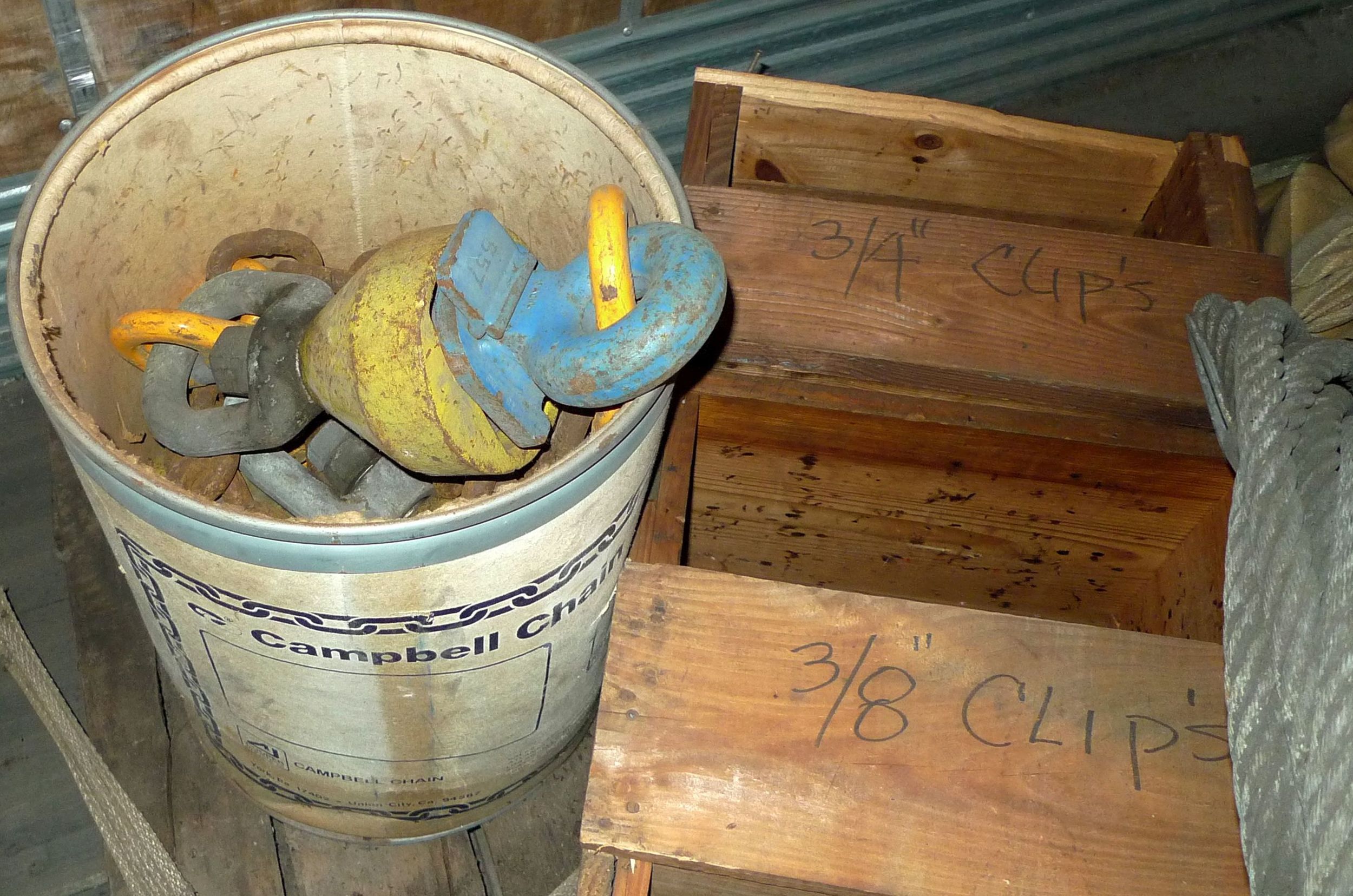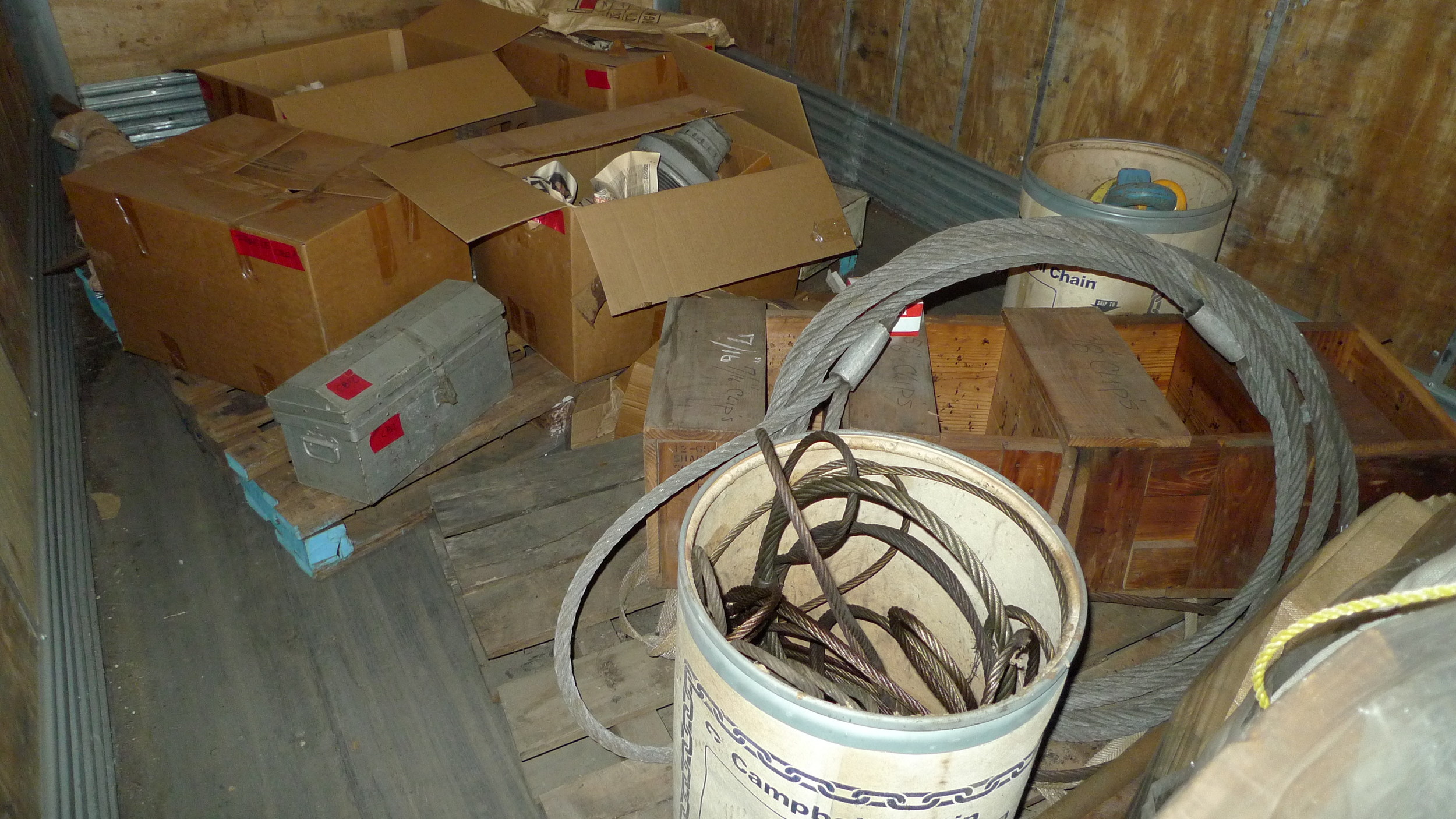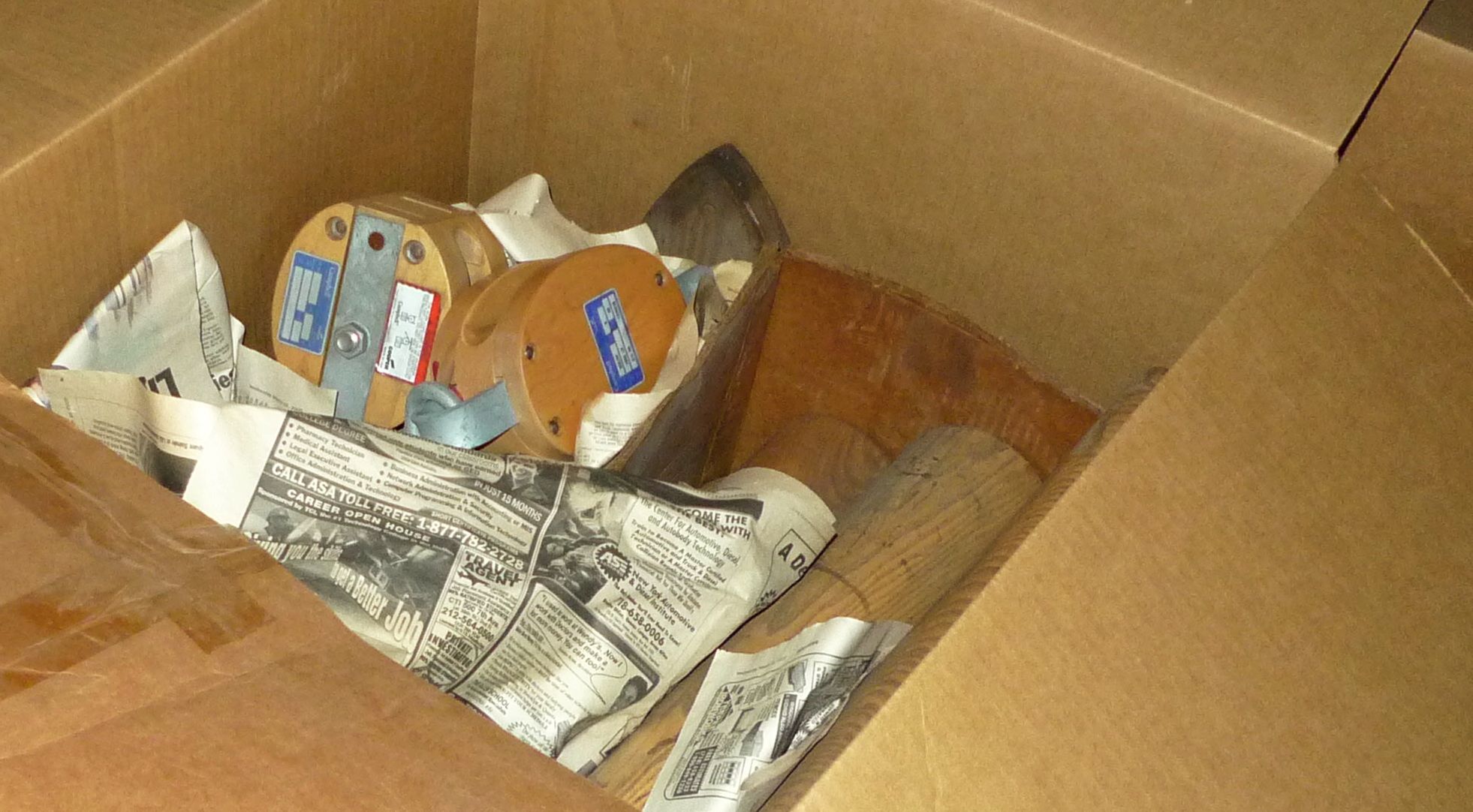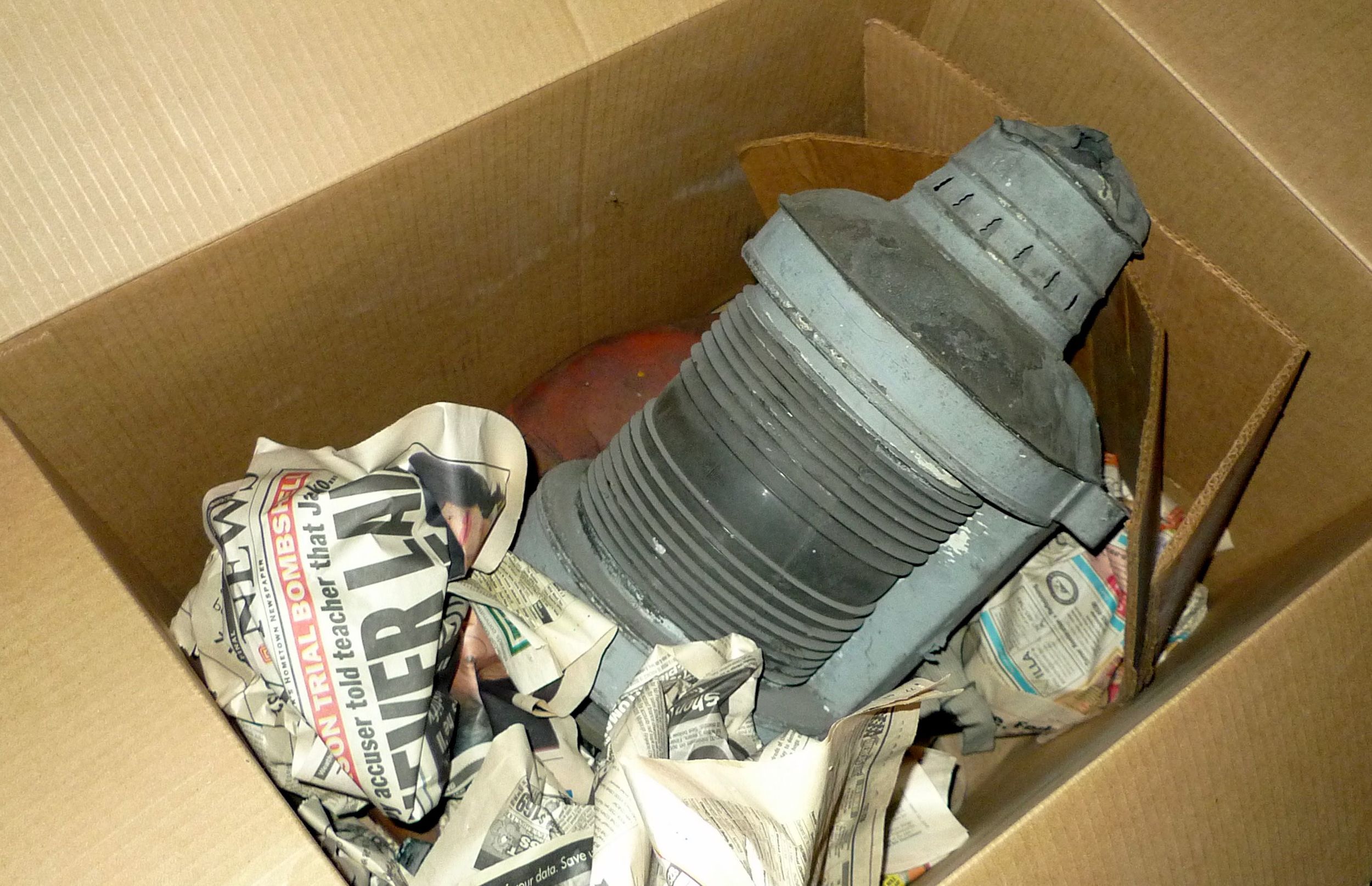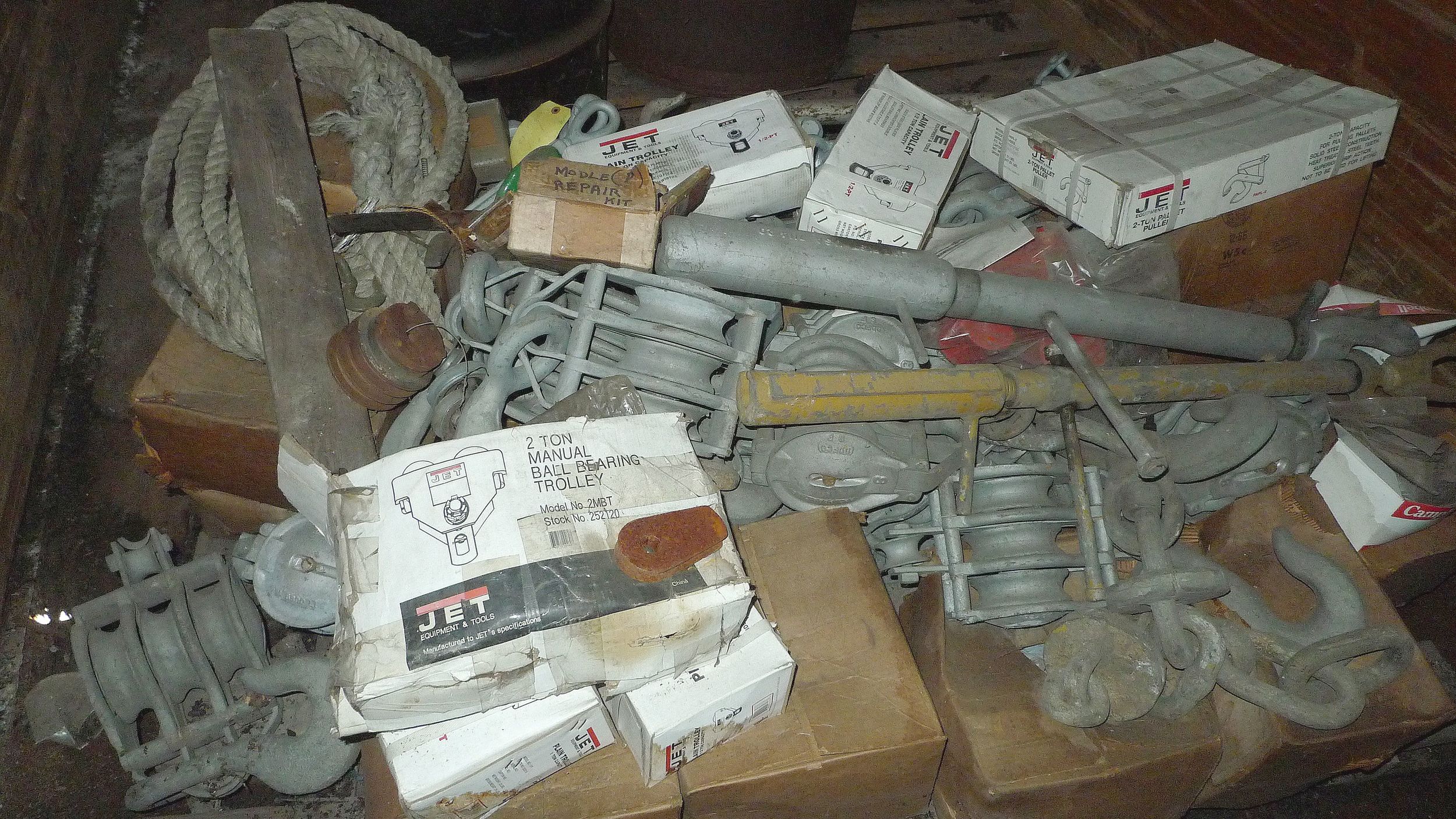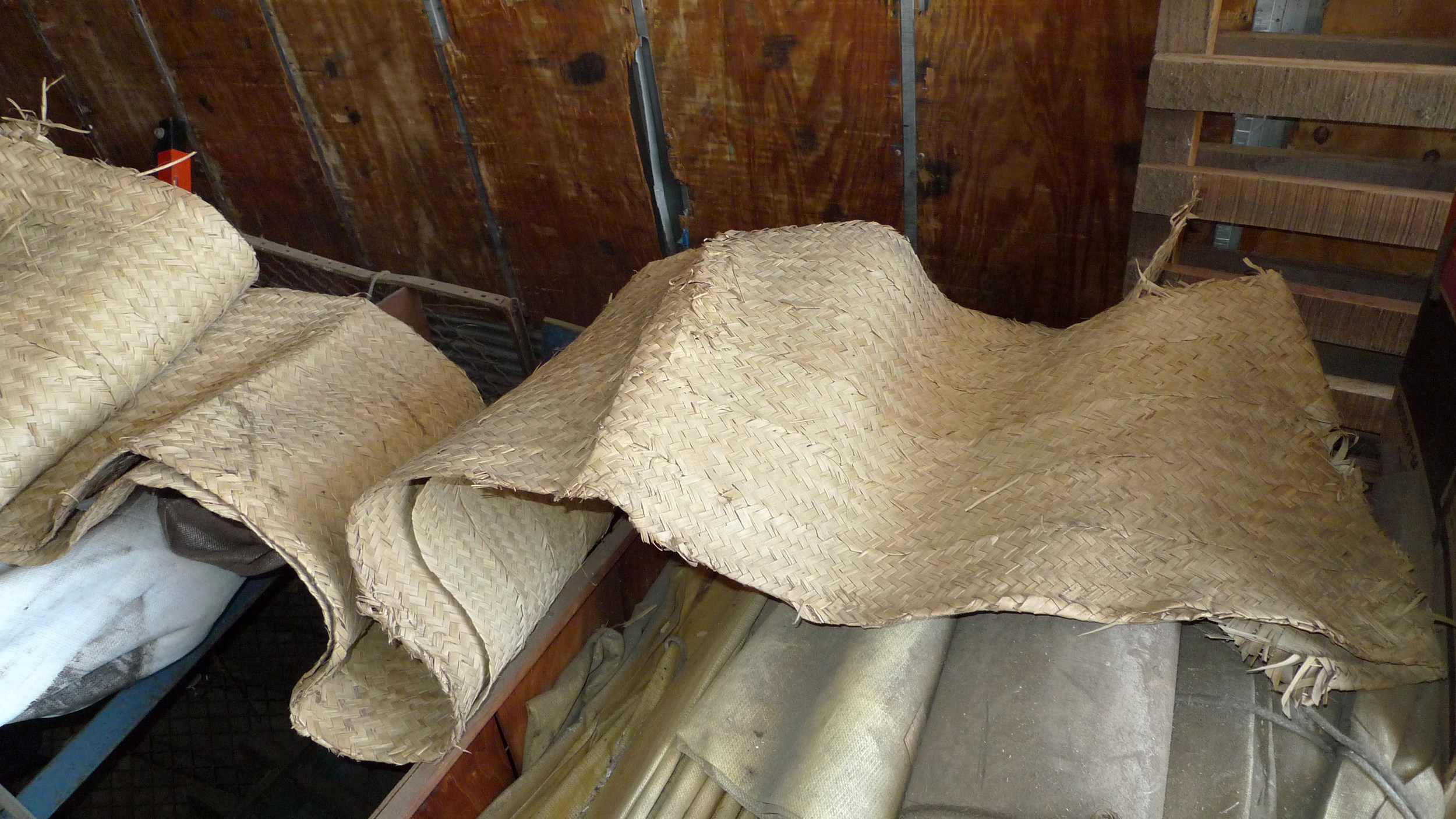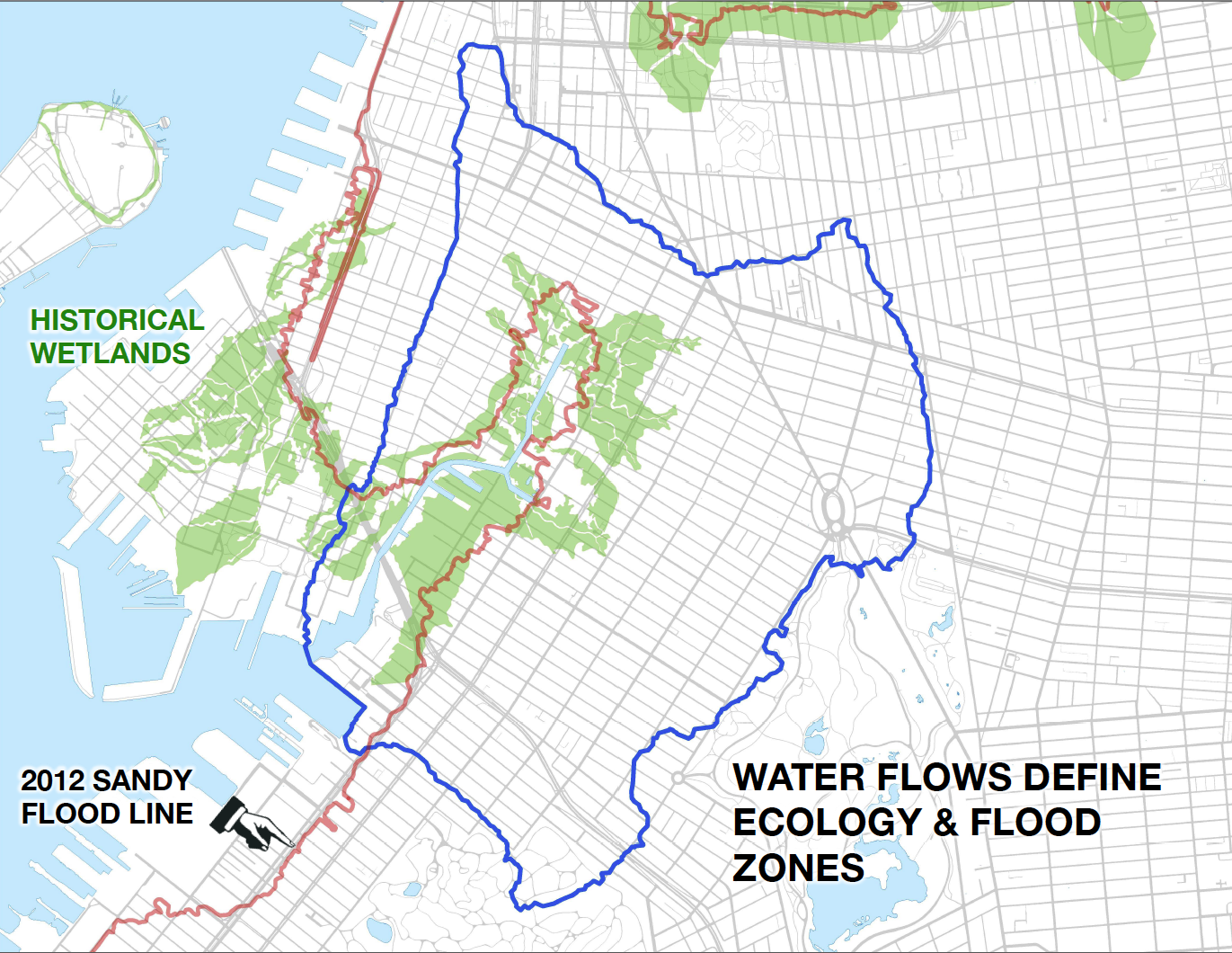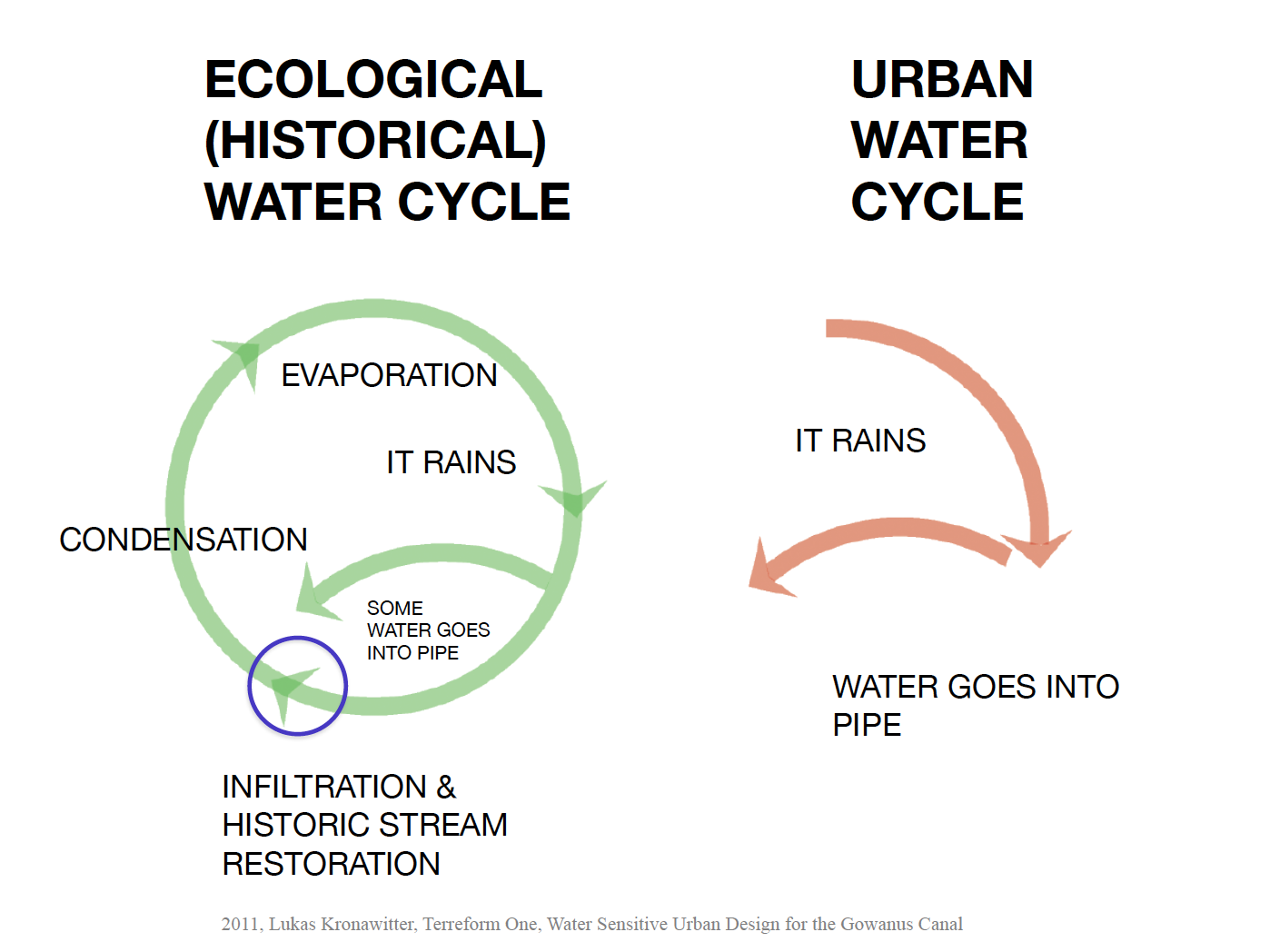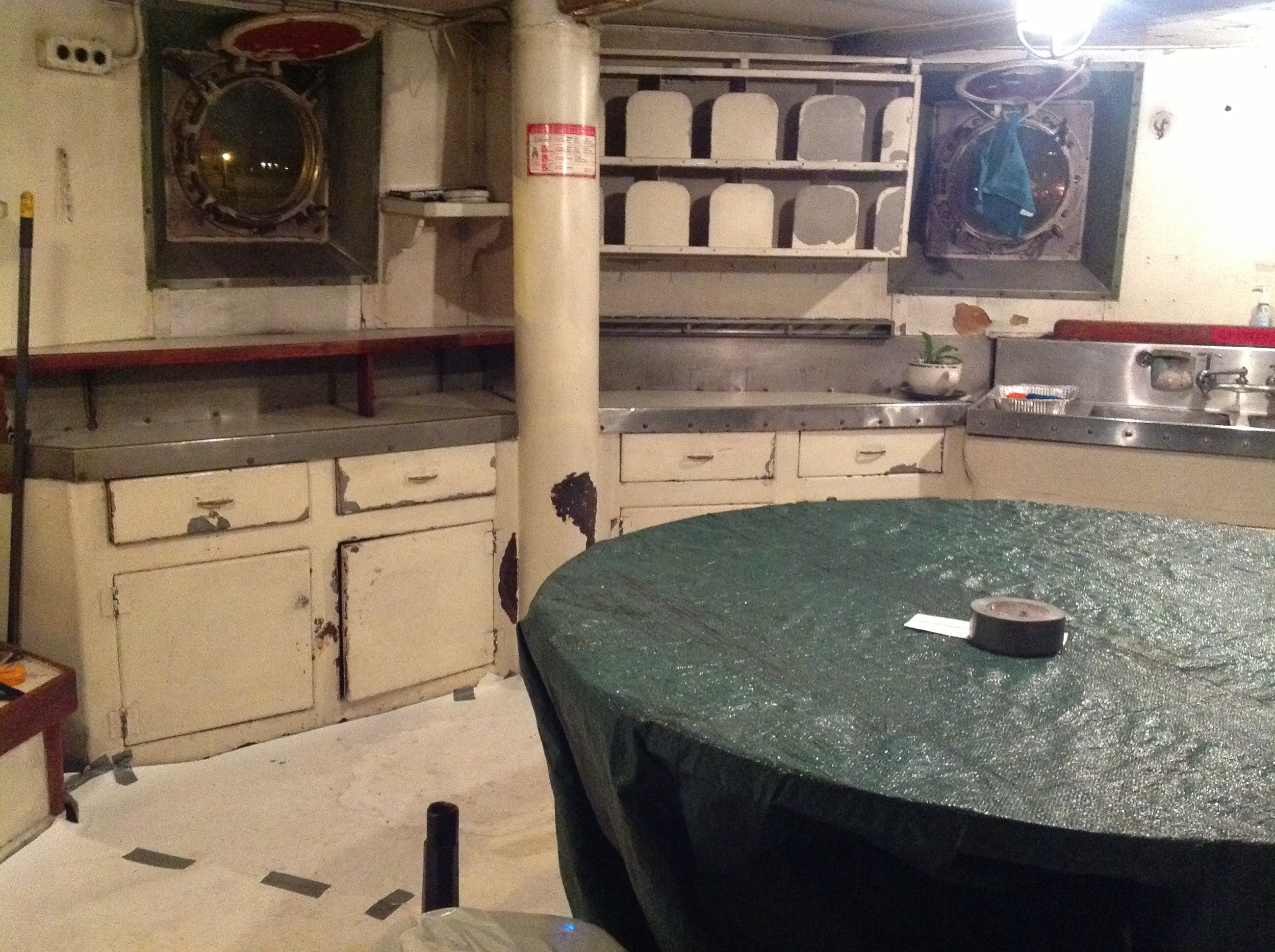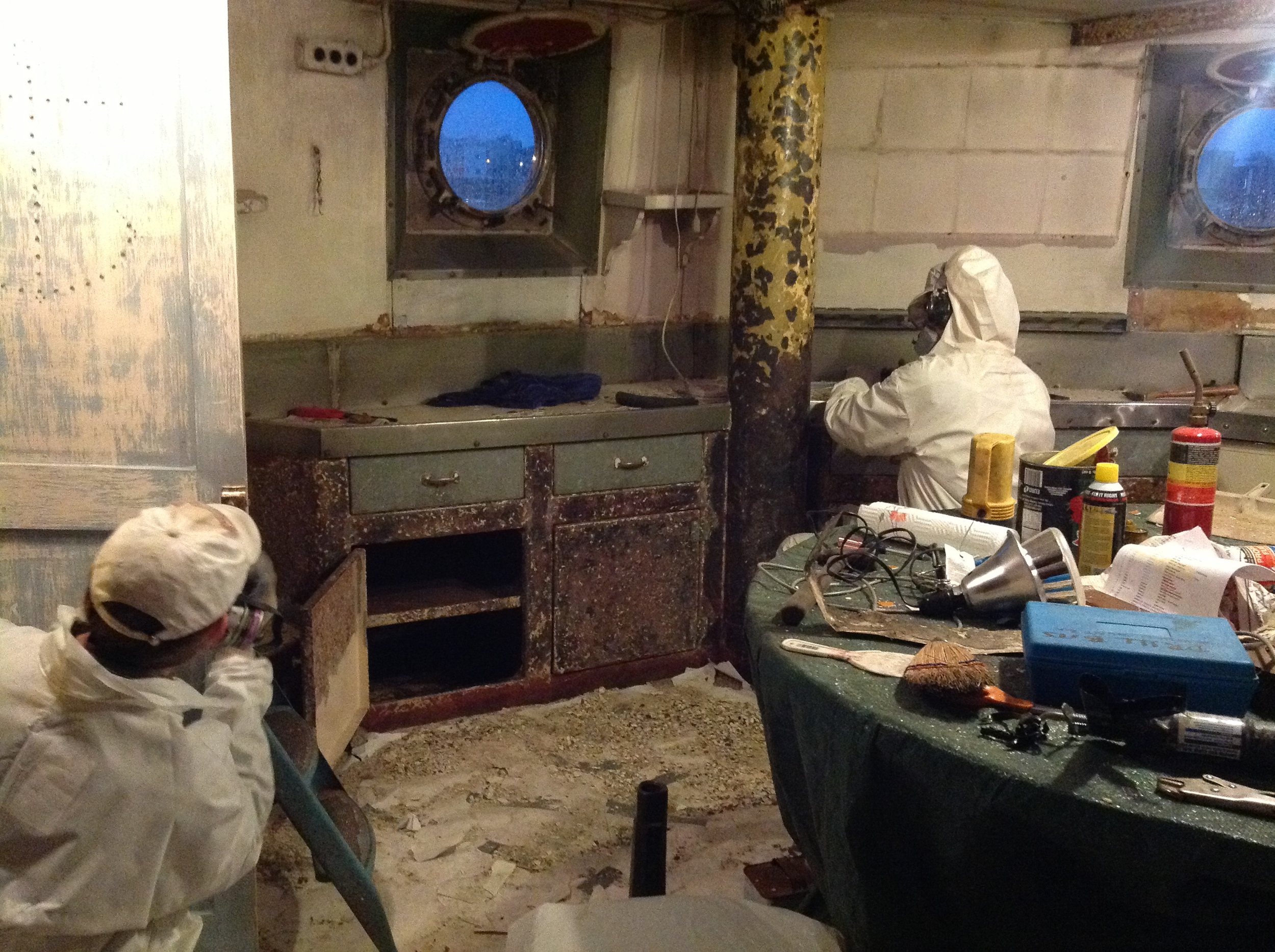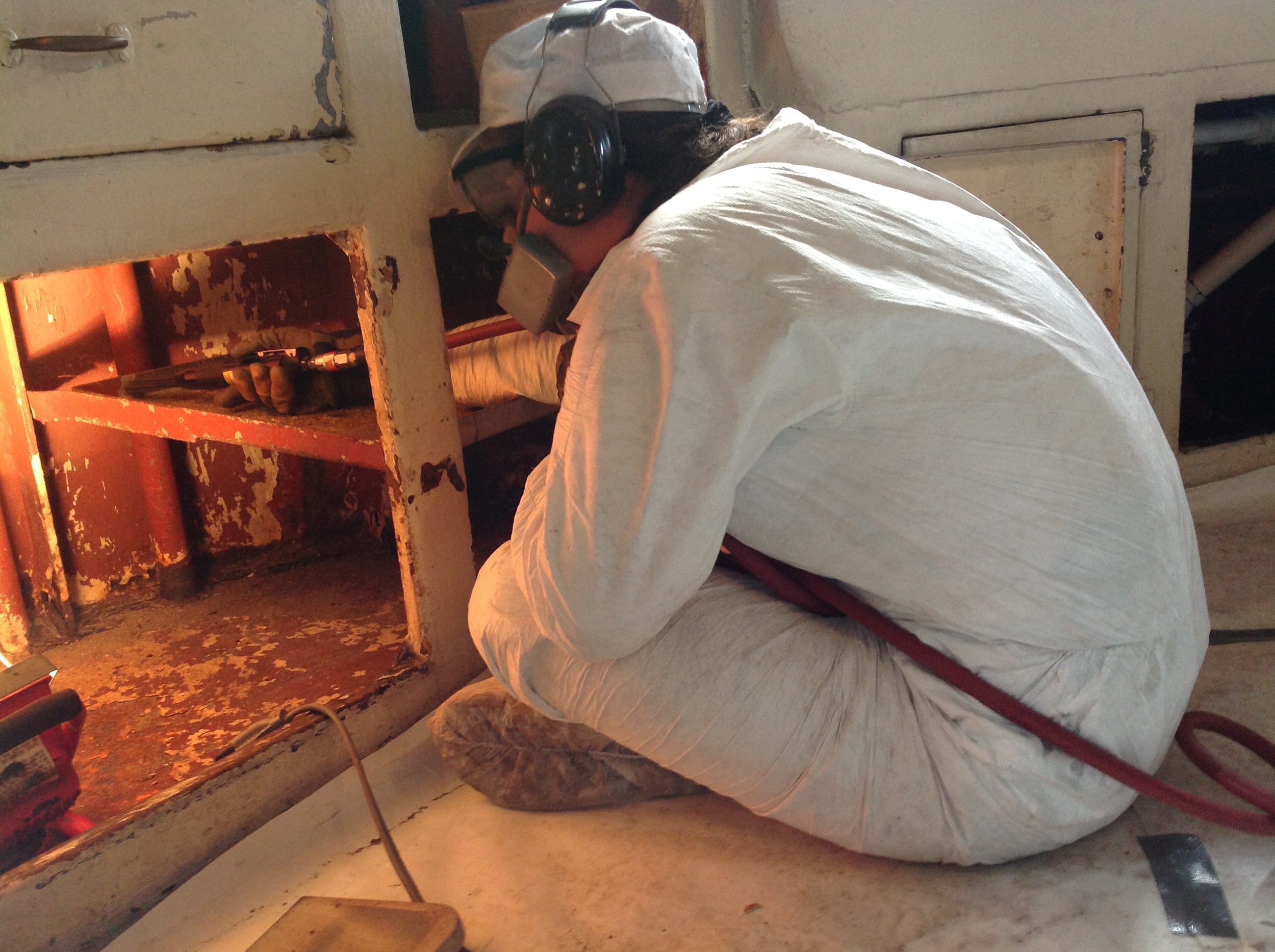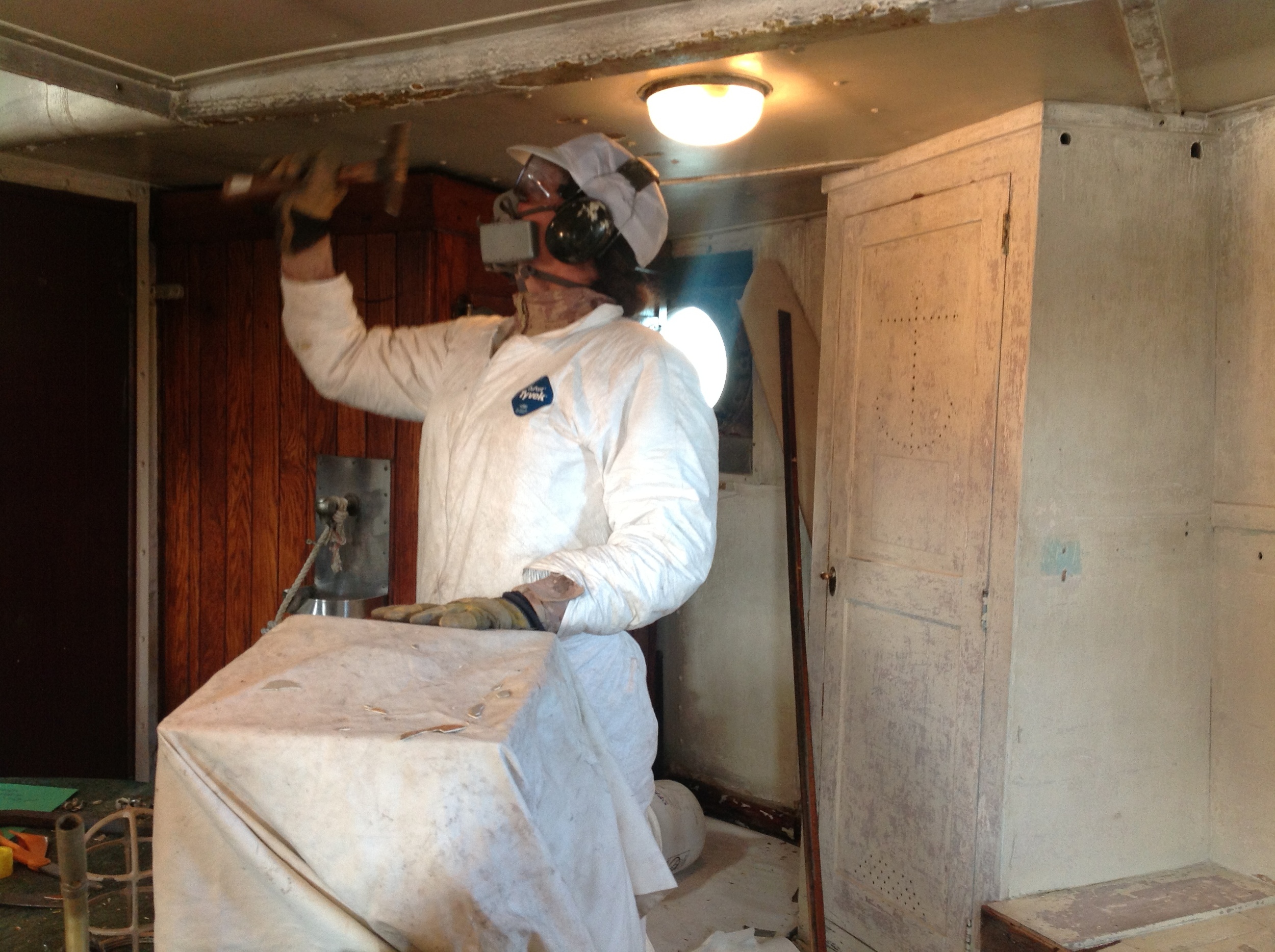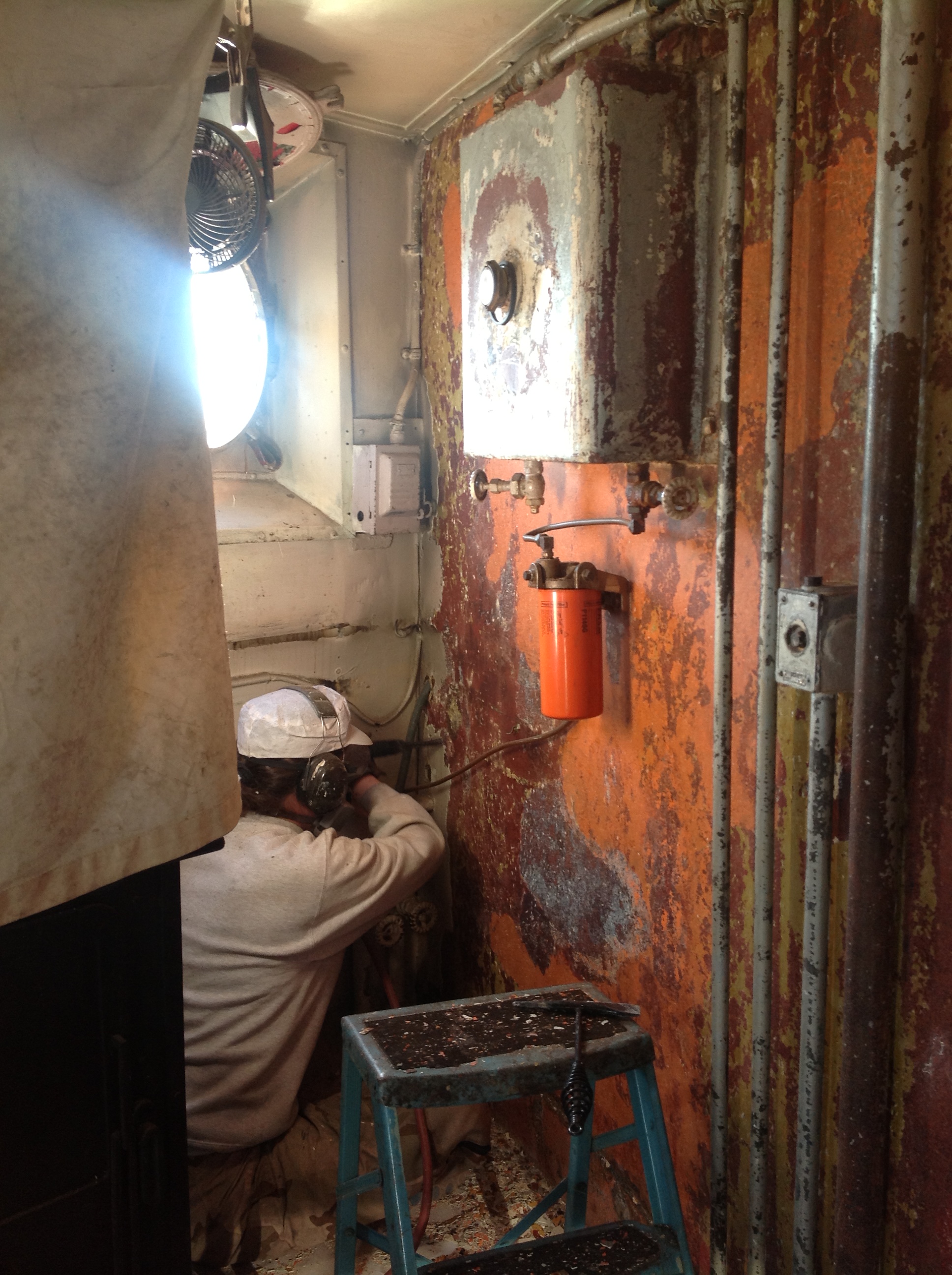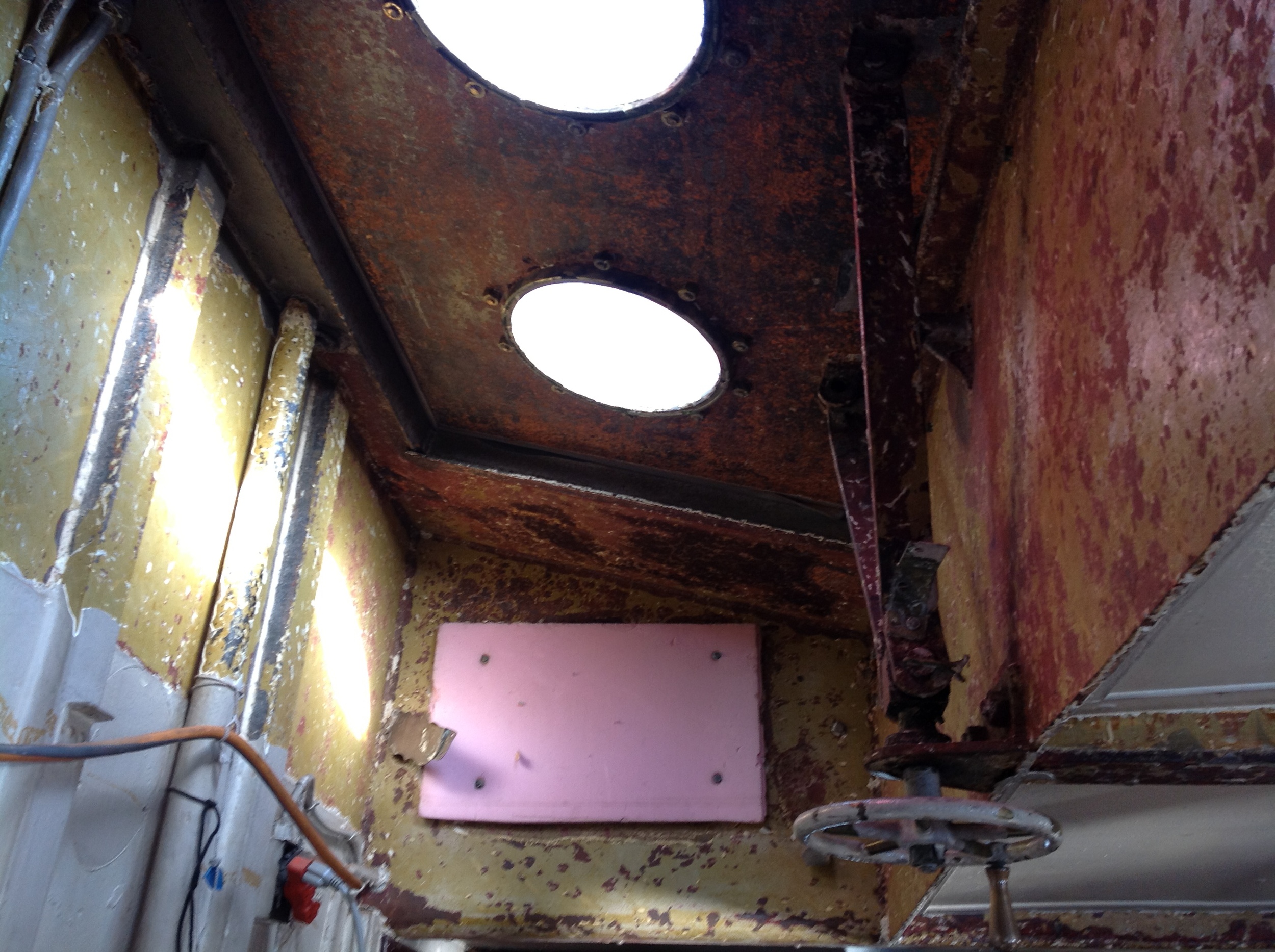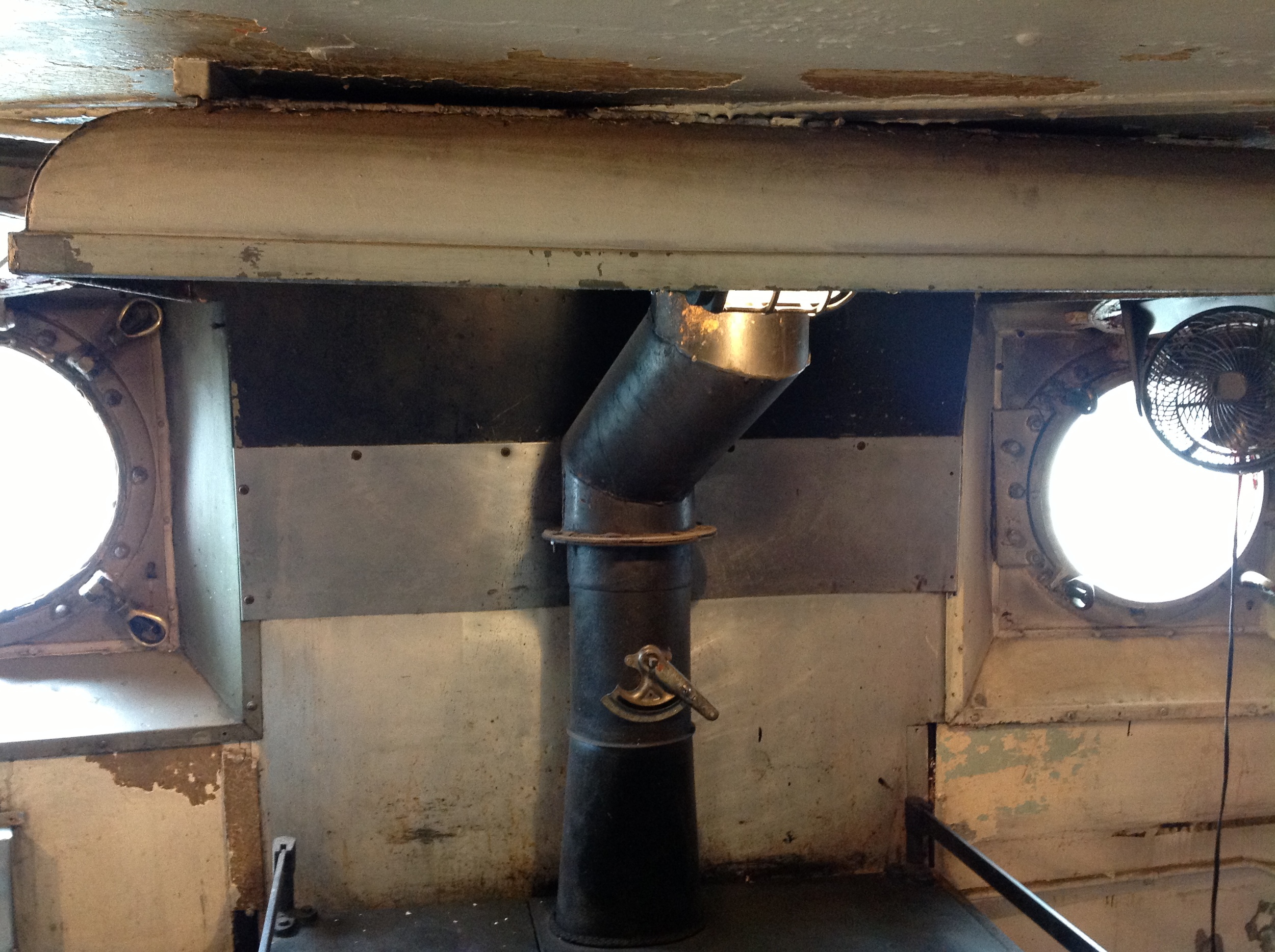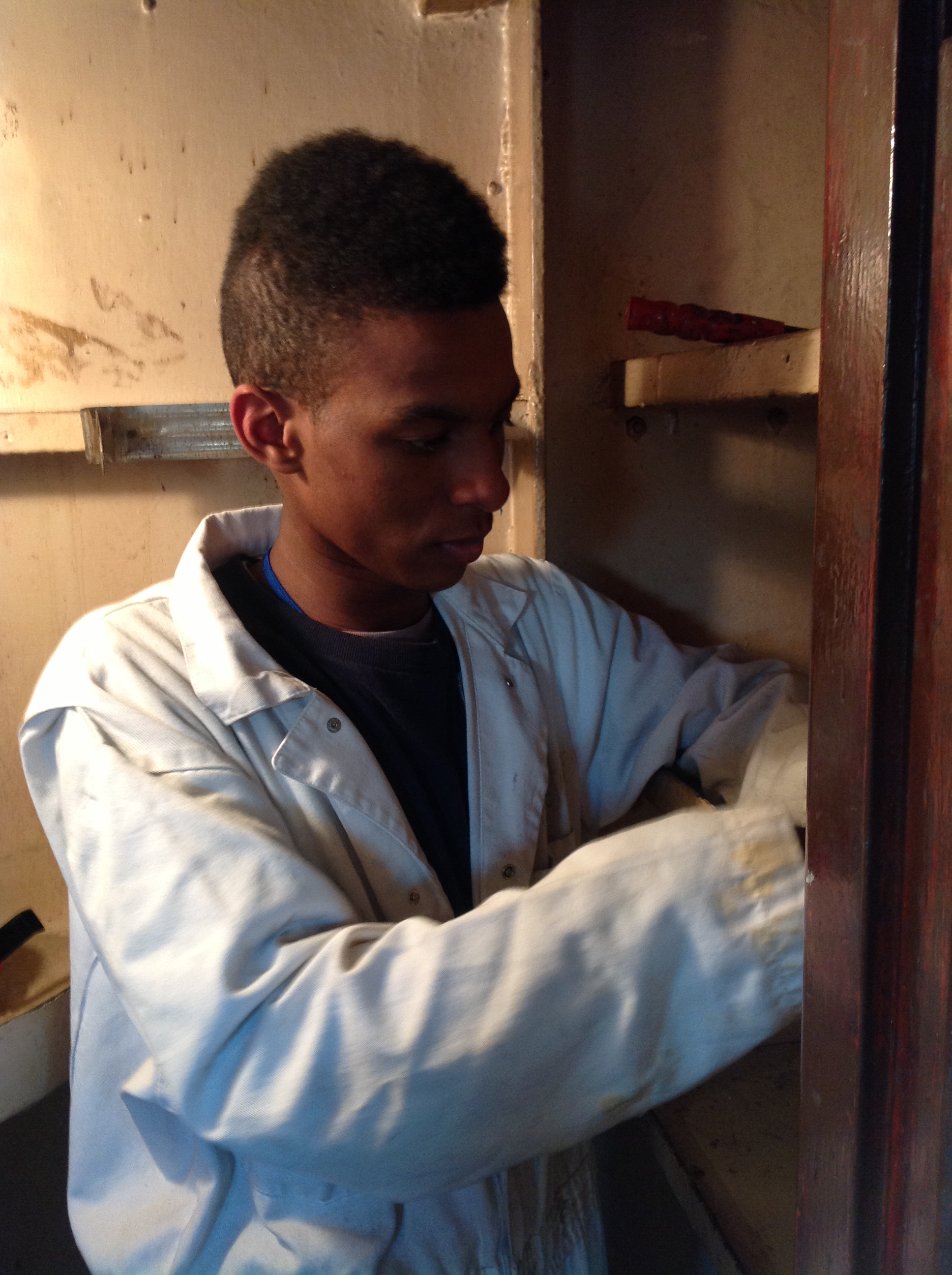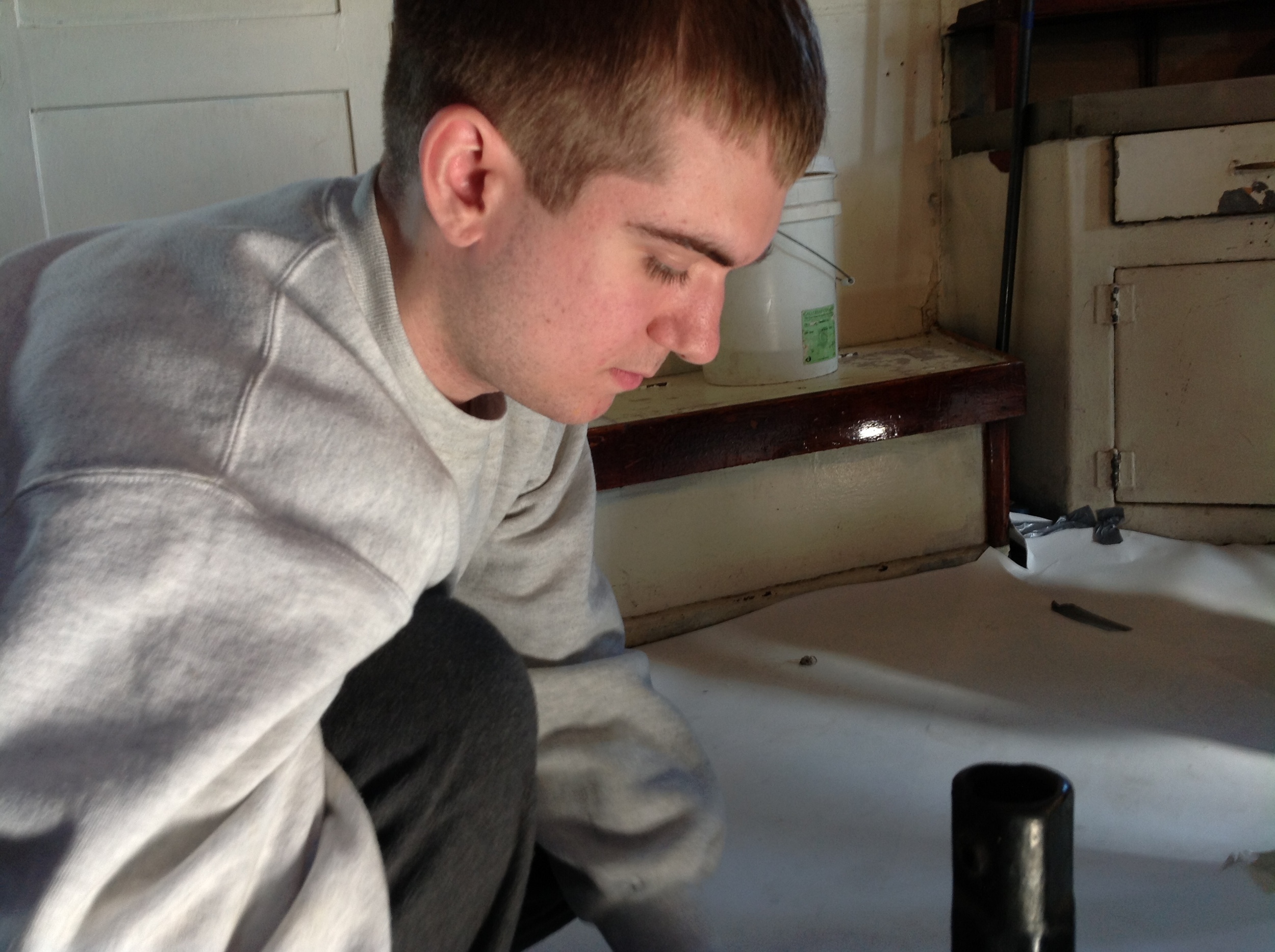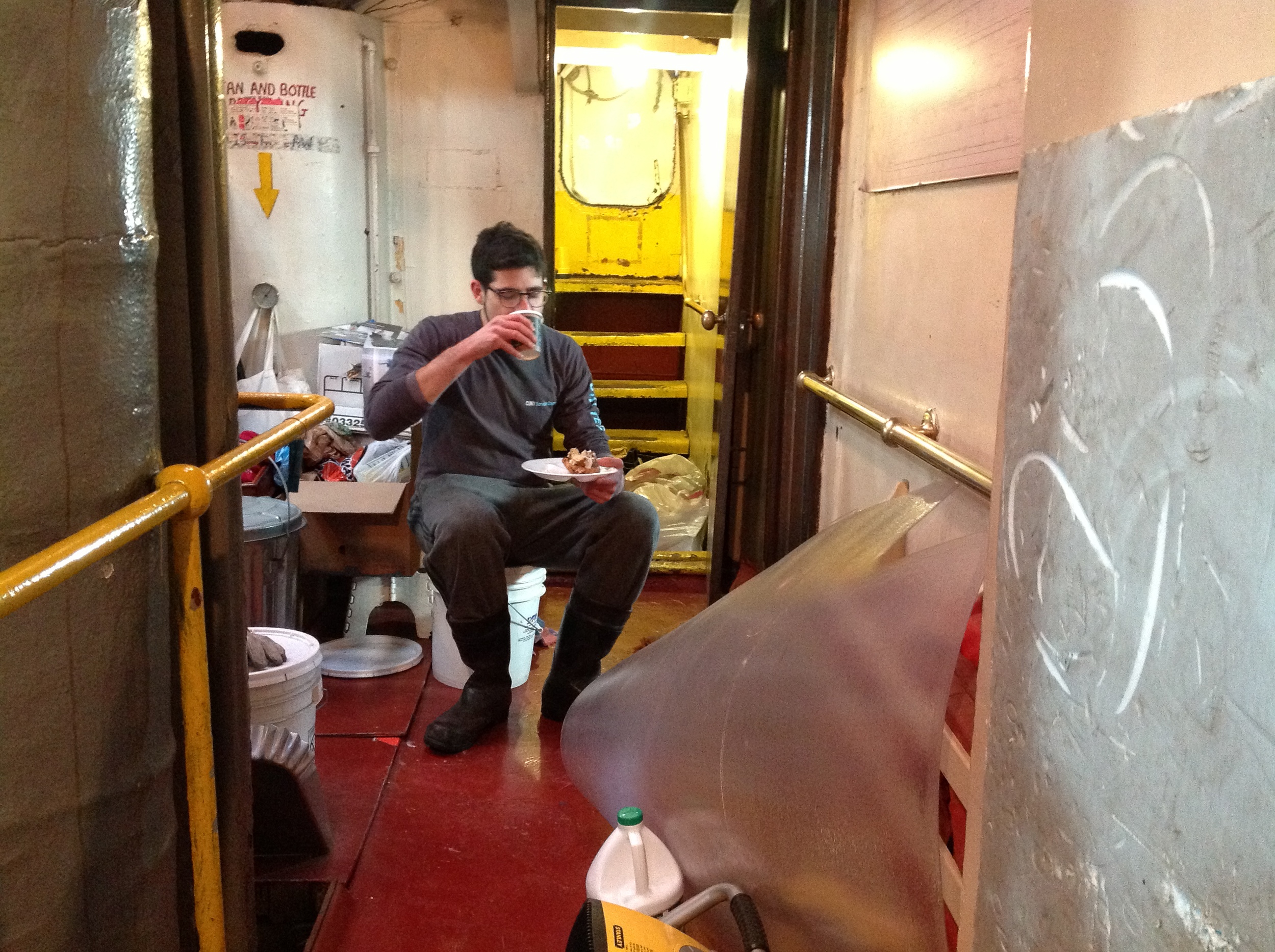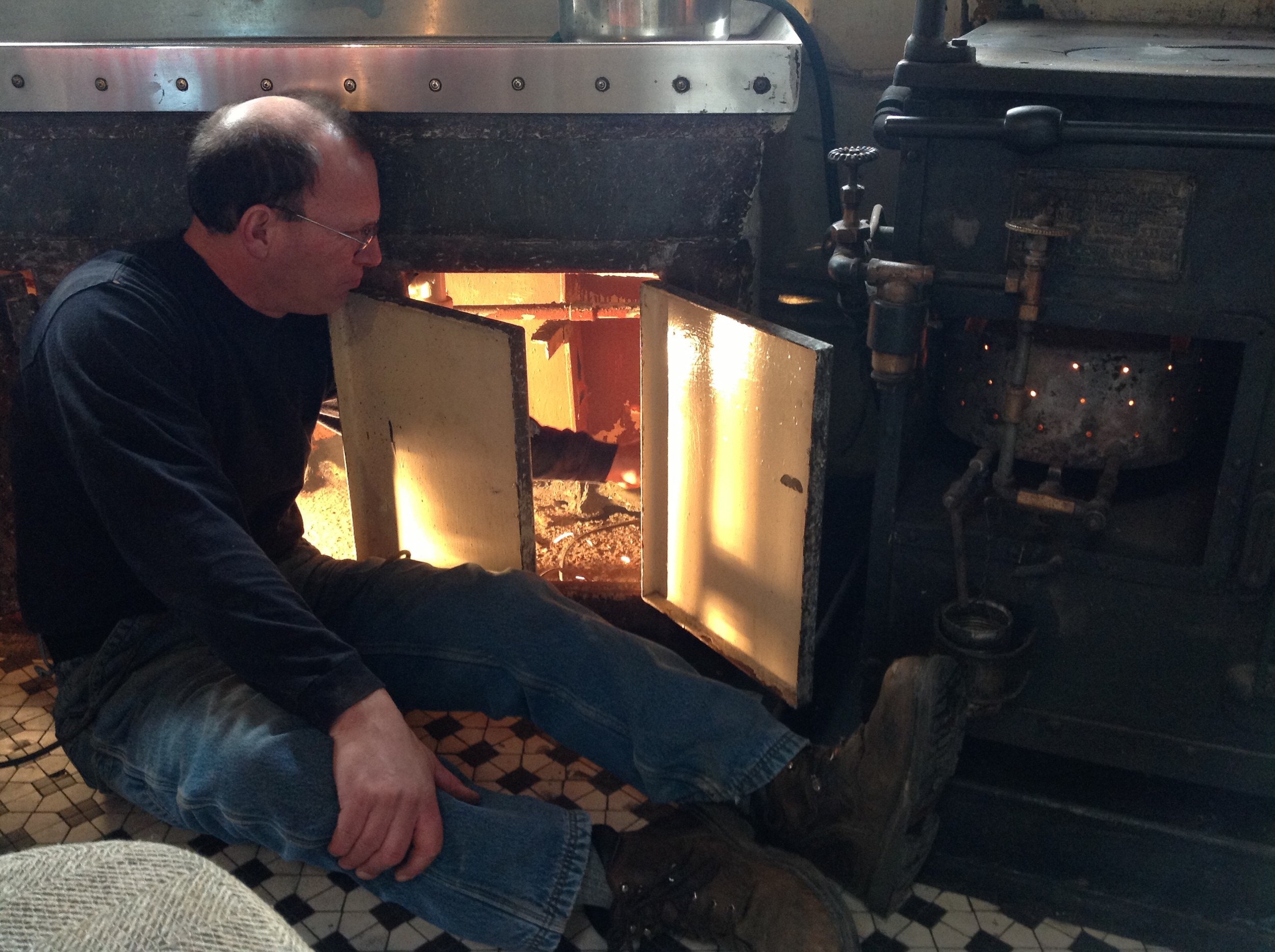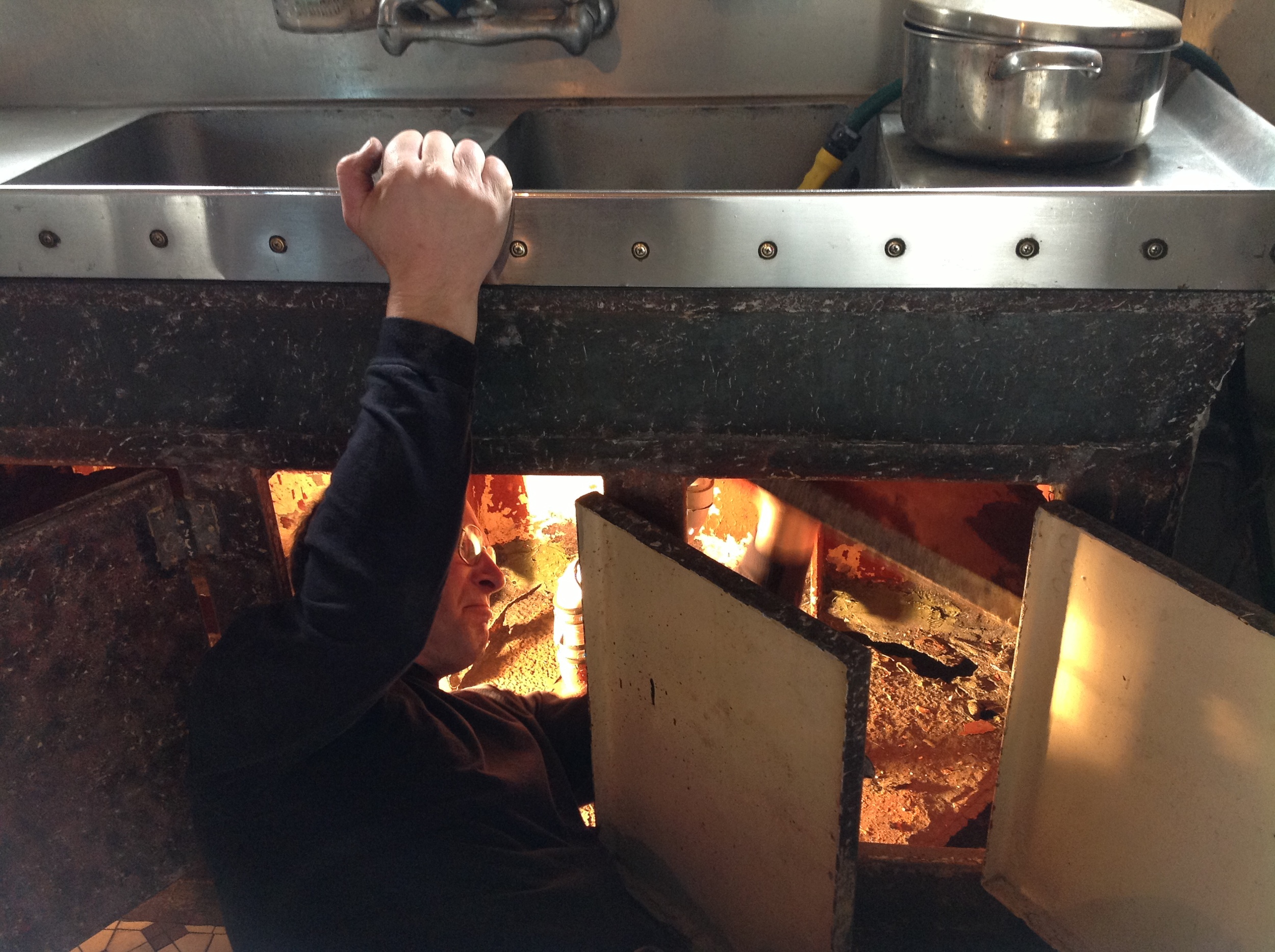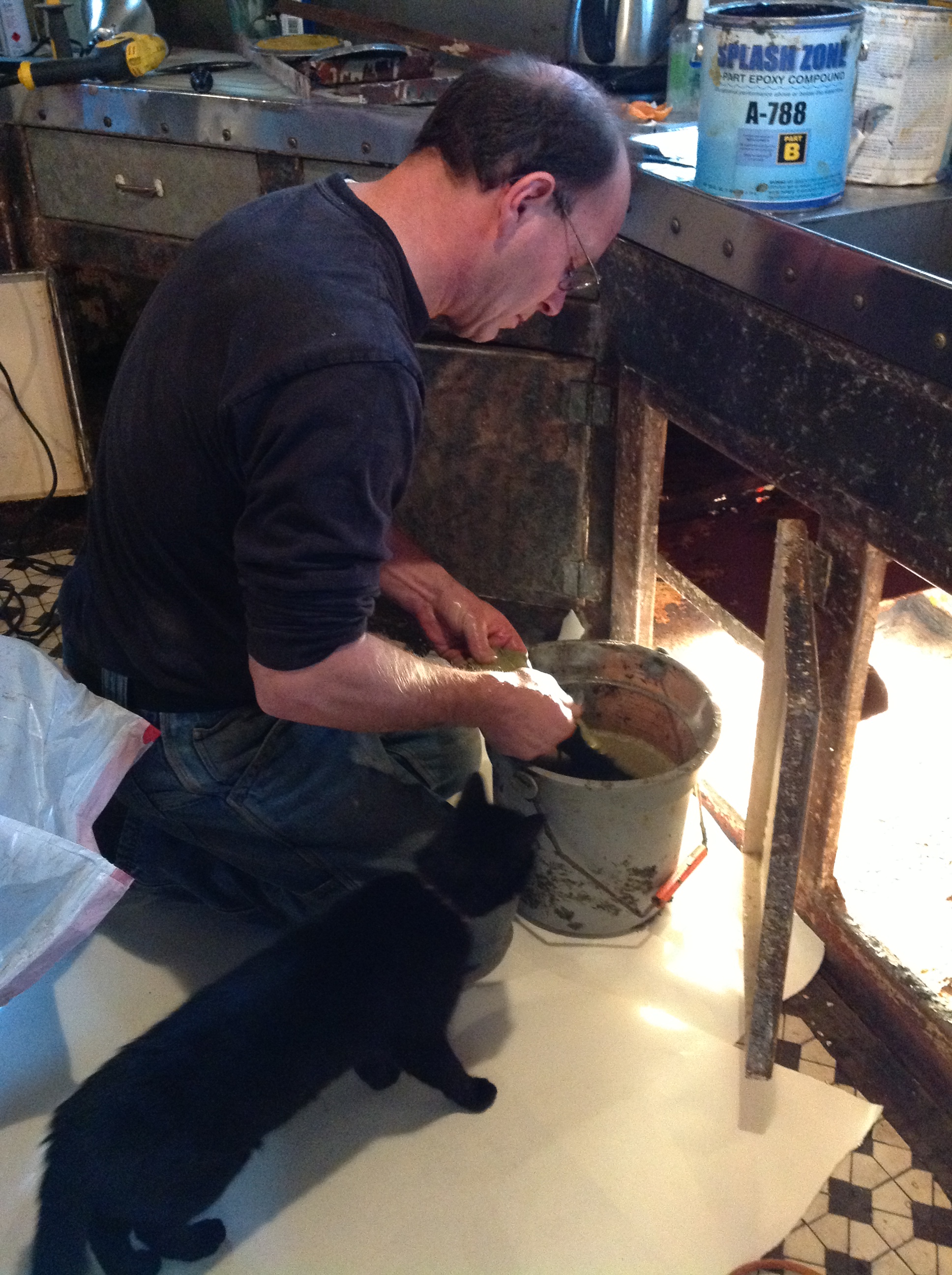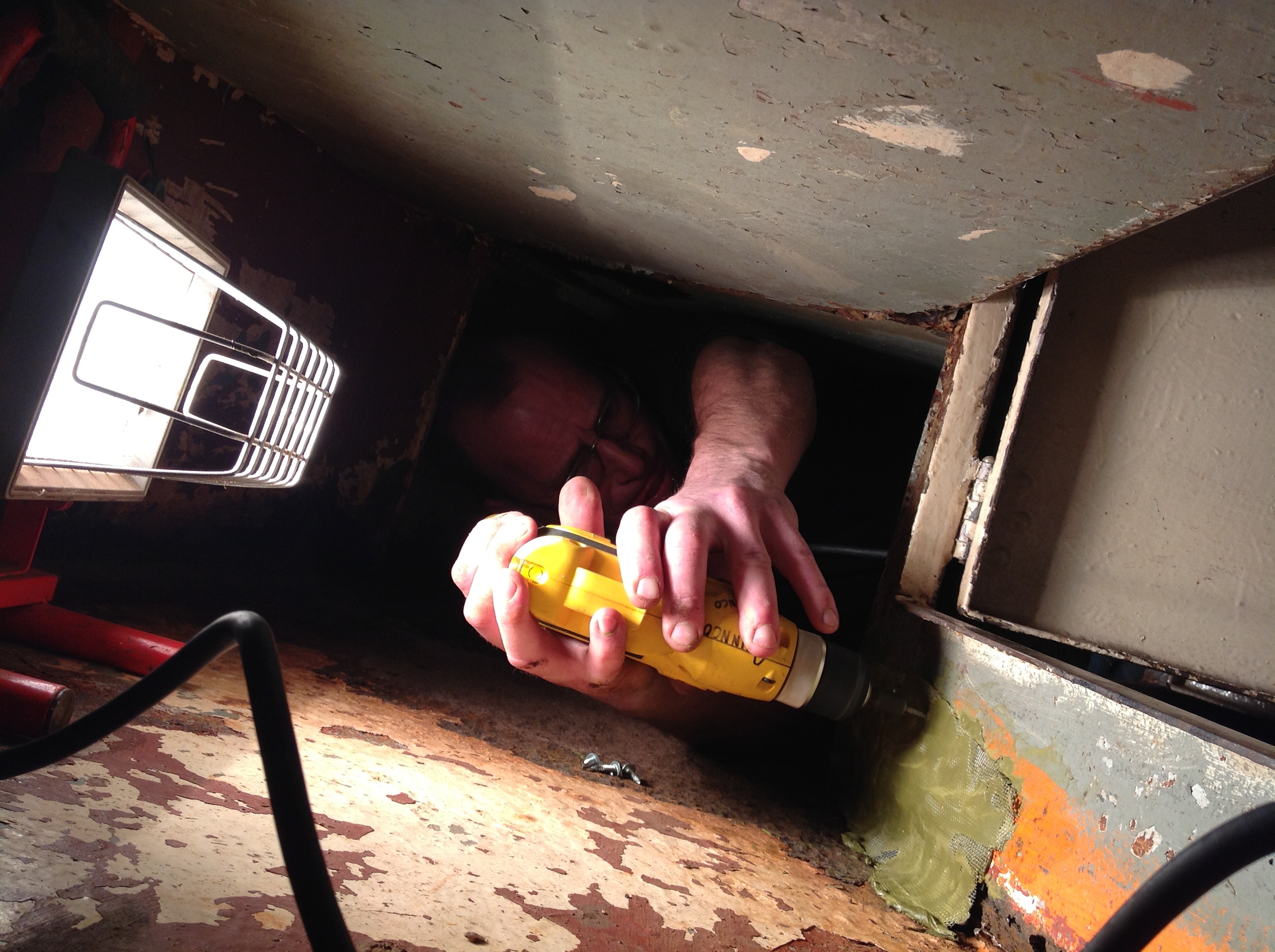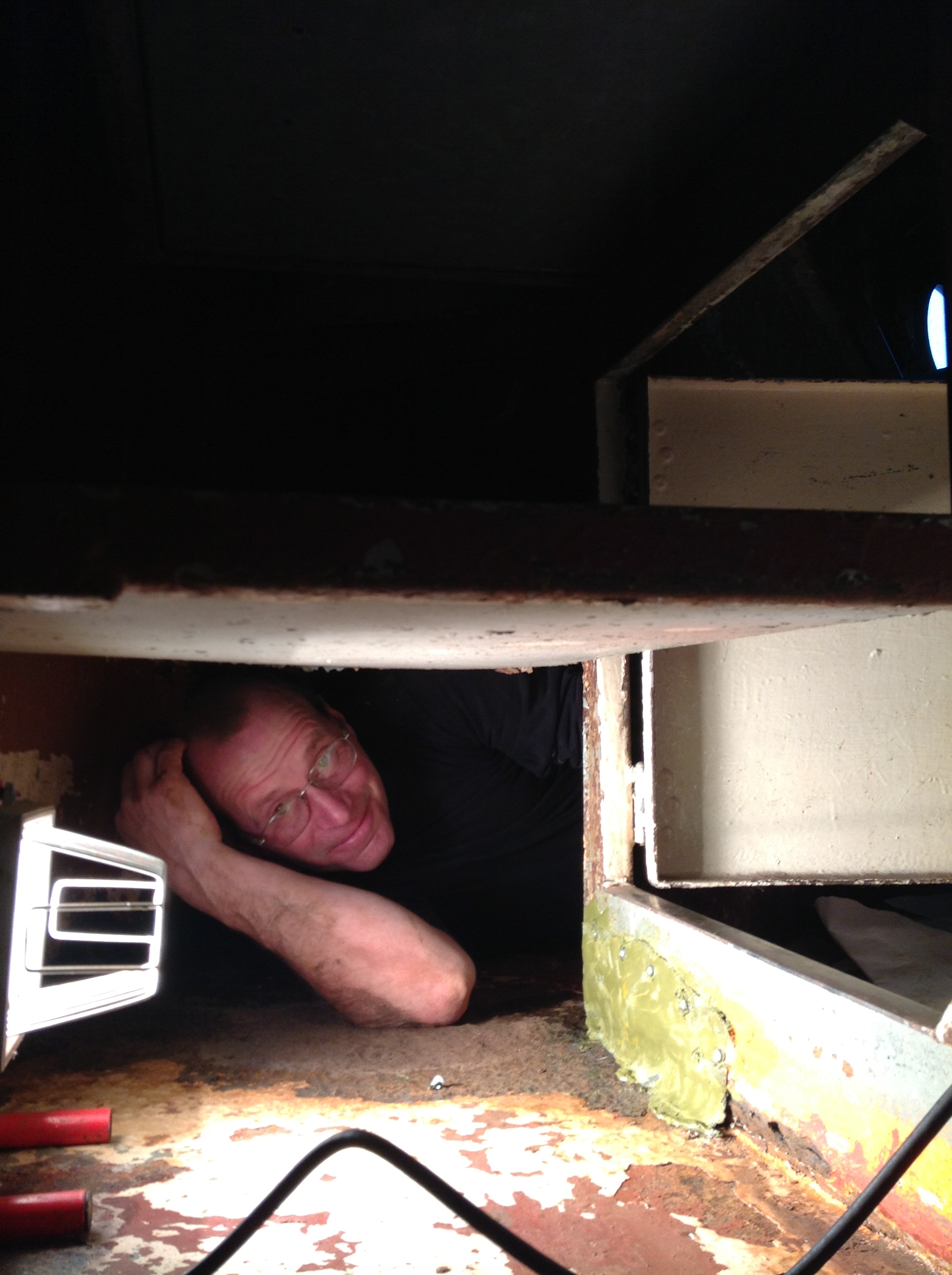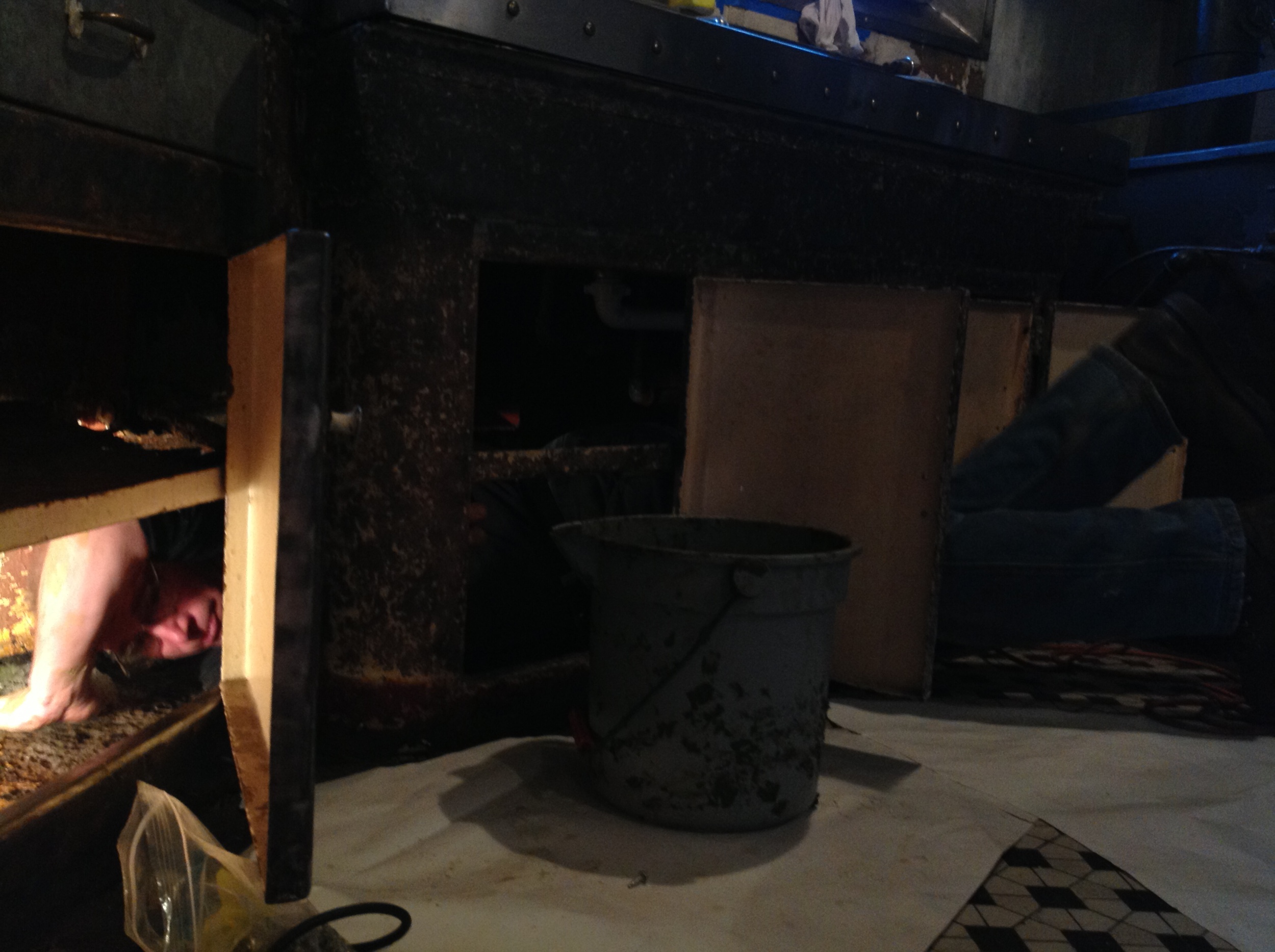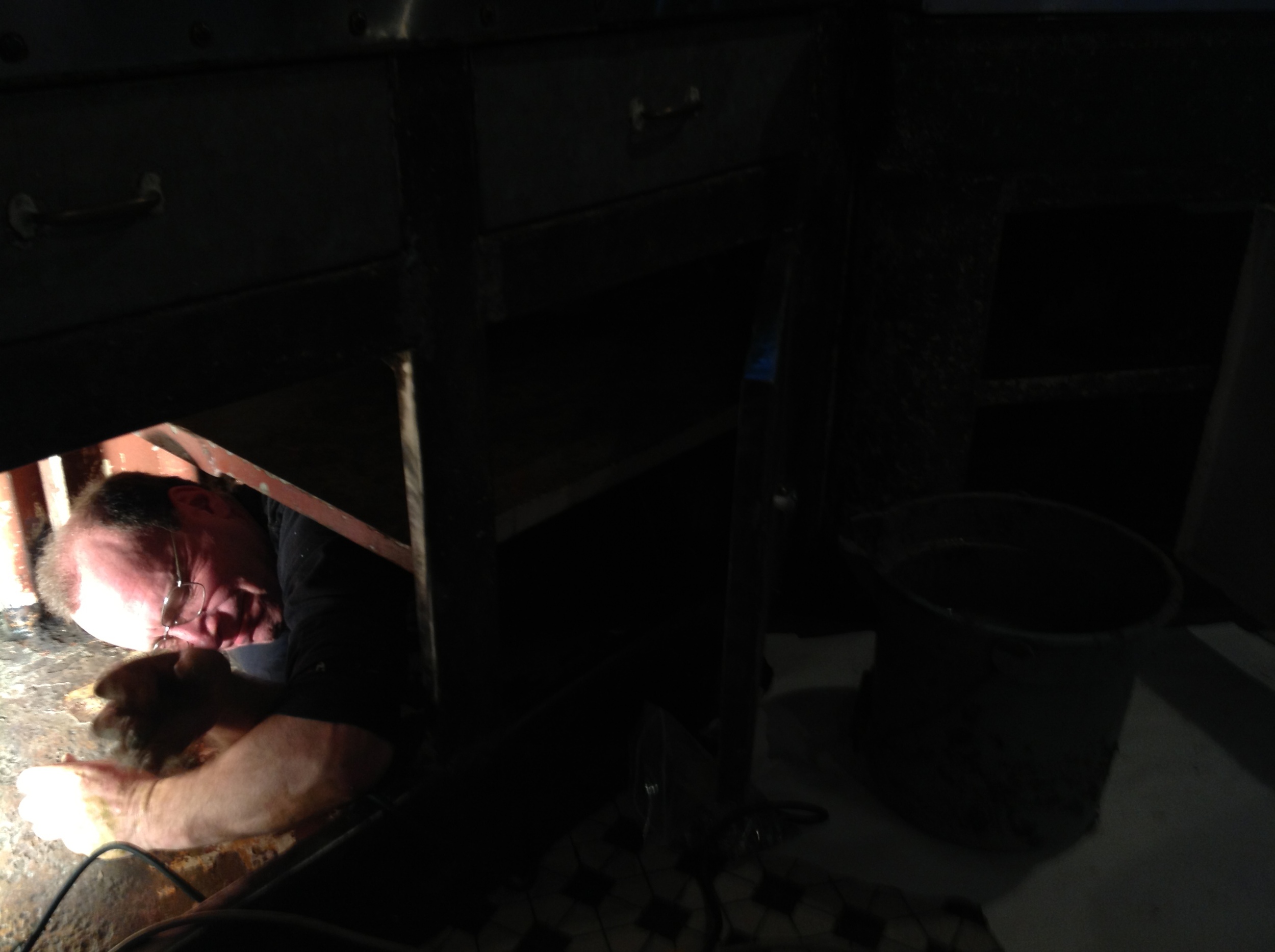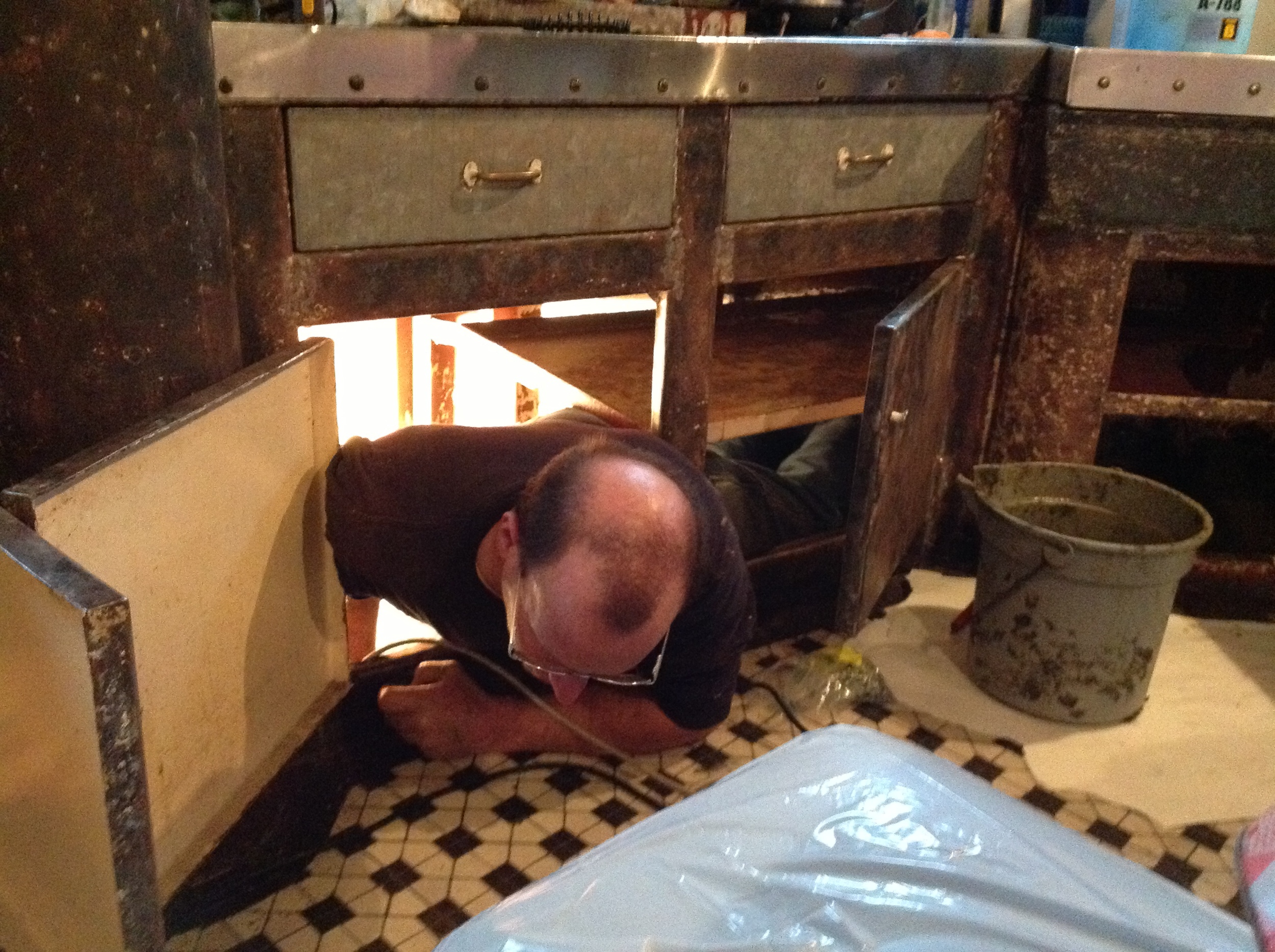Sandy recovery work of our honorees at 10/28/14 "Resiliency is our HOOK" fundraiser
/PortSide NewYork won a White House “Champions of Change” award in April 2013 for our hurricane Sandy recovery work and honors shortly thereafter from the New York State Senate.
A huge part of our Sandy recovery work depended on the generous actions of three people PortSide honored at our fundraiser just before the two-year anniversary of the storm on October 28, 2014 at Hometown Bar-B-Que. More on them below.
Blogpost about the fundraiser in general
Blogpost about our special good neighbor award to IKEA
Victoria Hagman of Realty Collective
Victoria Hagman is principal of Realty Collective. So much of PortSide's recovery work after saving the MARY A. WHALEN was enabled by her generosity. Despite Victoria's home having been flooded along with the basement contents of her Red Hook business location, Victoria, without hesitation and no strings attached, allowed PortSide to use the 351 Van Brunt storefront as an aid station.
That offer included free electricity, heat, (and telephone and internet once those were back up.) This became Red Hook’s first small business recovery center, before the location at IKEA, hosting different groups. The storefront housed a gallery at that time, so PortSide had a stylish aid station, and the fact that the gallery was there is a testament to the trust that Victoria offered in making the space available. Several Sandy survivors commented that the white gallery space and bright art was uplifting.
Victoria helped set up a meeting for homeowners to get resilient rebuilding advice from Jim Garrison an architect from Pratt Institute and more. She continues to do work for Red Hook Sandy recovery and resiliency efforts via multiple groups by participating in NY Rising, in special events promoting red hook, a zoning working, being on the CB6 board and the Gowanus CAG, Ready Red Hook emergency response plan… Safe to say, that if there’s some group working to improve Red Hook, Victoria’s probably in it.
Danny Schneider of Schneider Electrical Contracting
James Hill (left) of the Brooklyn Chamber of Commerce presents the award to electrician Danny Schneider
Danny Schneider, the principal of Schneider Electrical Contracting in Park Slope, walked into PortSide's Sandy aid center "351" within days of the storm and offered free electrical services. He had heard through his wife's Facebook page that electricians were needed in Red Hook.
PortSide offered to coordinate his work, and word of the “electrician sign-up sheet” at 351 spread like wildfire in Red Hook. PortSide amalgamated requests by phone, email and text and conveyed them to Danny, who worked off the sign-up sheet.
Danny reports that he inspected and certified sixty buildings (which means many more families than sixty) for free, and repaired some two dozen for the cost of parts. When electrical parts were getting hard to source, he passed that info to PortSide who began hunting for parts in bulk. He battled hours of traffic each day to get to Red Hook; and in the middle of all that, his license was up for renewal so he battled traffic and lines downtown to get that renewed, and came back to help. He also did volunteer electrical repair in the Rockaways.
Danny Schneider also speaks at the end of the video with honoree Victoria Hagman.
Peter Rothenberg, Historian & Curator, PortSide NewYork
Peter Rothernberg (lefti holding his award, and Carolina Salguero (right)
Peter Rothenberg is PortSide’s Historian and Curator. His recovery work includes prevention, restoration of historic artifacts and direct service to Red Hook Sandy survivors, as well as reassuring ministrations to ship cat Chiclet. on our ship during the storm. See video of Peter receiving his award here.
Within the crew of rambunctious wits that is PortSide NewYork, Peter is a quiet, private worker and just the kind of steady guy you want around when a storm is coming and things are going to hit the fan.
Peter helped PortSide prepare the tanker Mary Whalen for Sandy for four and a half days, and he rode out the storm on the ship with PortSide Director Carolina Salguero and Chiclet.
Peter came armed with foul weather gear and four gallons of corn chowder left over from a Brooklyn Botanic Gardens event (after three days of corn chowder, that taste will forever be associated in our minds with the hurricane). He also came armed with a tender heart for Chiclet who had that knowledge animals have that something bad is coming and washed herself steadily for many hours. Peter made Chiclet a tuffet of pillows so she could see out the tankerman’s cabin porthole
During the storm, Peter joined Carolina working outside easing lines… putting a chimney cap on the stove… putting another line around the tarp covering the wheelhouse windows… and the epic job of tying together every dockline not already in use and dragging that through the water to the pier 265’ to the north. That line was to prevent the MARY A.WHALEN from floating up onto the pier, and maybe rolling or impaling herself on a bollard or wreaking any havoc. As the surge waters rose around him, Peter crawled on hands and knees across the jersey barriers along the bulkhead back to the ship.
After the storm. Peter helped rinse out and dry our flooded electrical transformer (which we are still using); and when he found out that Carolina Salguero had forgotten to get our collection of historic documents out of the shed, he set to drying out the collection. Within hours, he had every horizontal surface aboard the tanker covered in wet historic papers, interleaved with whatever we had at hand (sheets, towels, paper towels, wax paper). The stevedores' lounge in the shed was also covered with this project for several weeks.
Peter and Carolina came ashore and set up and ran the aid station at 351 Van Brunt for several days until Dan Goncharoff could make it in from Manhattan to join us. Peter spent much of his time at 351 helping people who did not know how to use computers apply for aid and do other work on the internet.
2022 update: PortSide helped get Red Hook’s Verizon internet back up by calling John Liantonio of the Port Authority. His prior job was to be the cellphone industry rep in the northeast. Carolina Salguero called him and asked him if he could reach key people at Verizon as we had set up an aid station thinking there was internet, and there was none, and Red Hook had been hammered by Sandy. The only internet we were offering was our modem that Peter hung up in a tree out front! Liantonio made the call, Verizon got on it, and Verizon service was up in less than 48 hours! Liantonio did not want this story told at the time.






